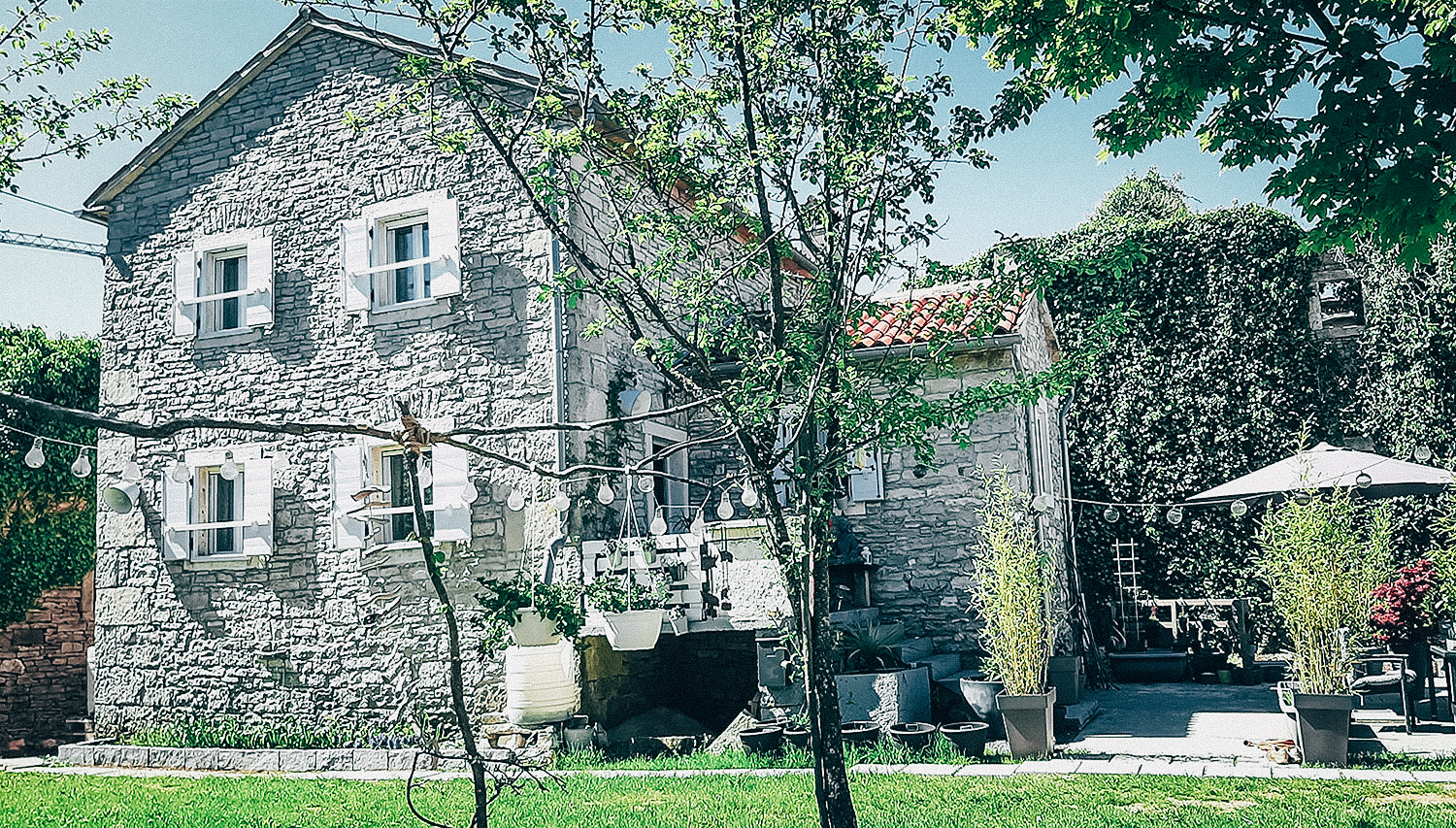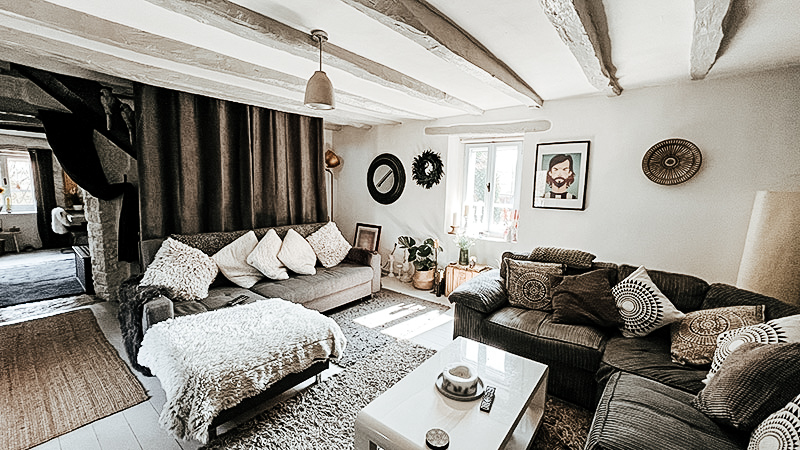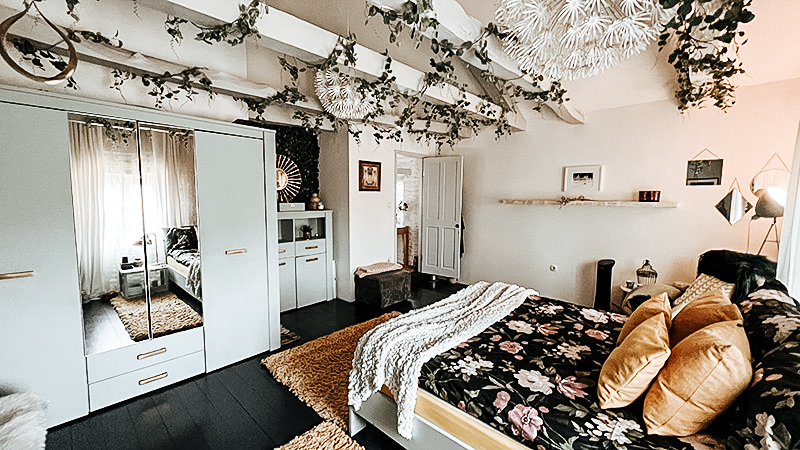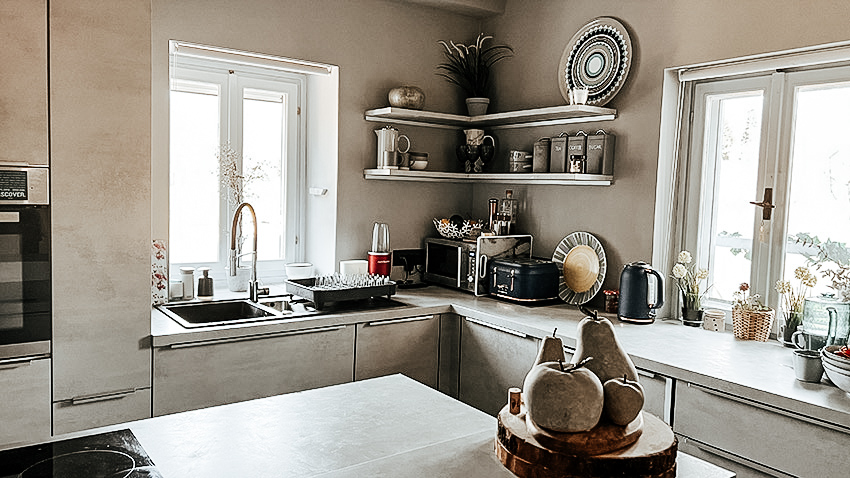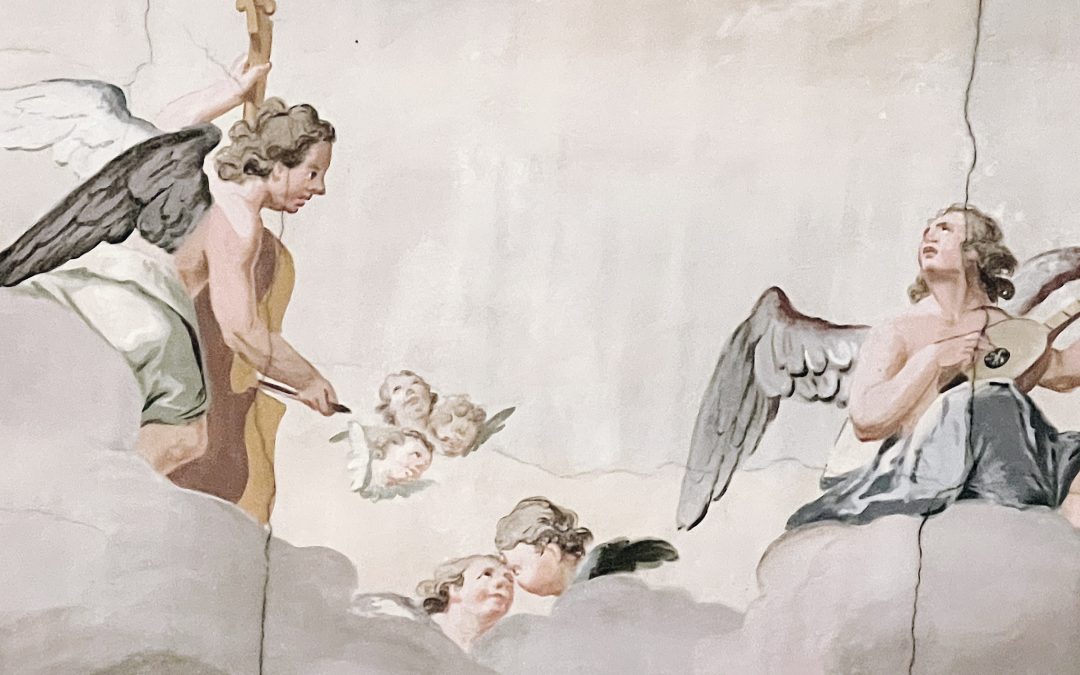
by Helen | Dec 19, 2023 | Travel
Until very recently, we hadn’t actually realised that our closest beach/seaside town, was actually in Slovenia, not Istria. Not by many kilometres, but enough to be our closest. In just over half an hour, we can be in beautiful Portorož, on the Slovenian Riviera, the 47km slice of coast, in this otherwise landlocked country. However, as gorgeous as this town is, we think we actually Piran, a little further on, towards the main coastal town of Koper and onwards to Trieste, is perhaps even more pretty.
From 1283 to 1797, Piran was part of the Republic Venice, and today, Venetian influences are everywhere. Until the mid 20th century, Italian was the official language and the architecture and food have strong Italian influences. Even though now in another country, the city of Trieste is only a short drive away, and Venice can be accessed in a couple of hours. After 1797, Piran was ruled back and forth, by Austria, France and Italy, until 1954 when it became part of Yugoslavia. In 1991, it became part of the new country of Slovenia. However, it is a town which feels very much Italian. The architecture is reminiscent of Venice, the pastel colours of the buildings like one of the Cinque Terre towns.
What makes it a bit more special, is the fact that it’s almost car free. Only residents can drive into the town, through controlled barriers. Outside these barriers, is a huge underground car park, where visitors park up and either walk the 1km into the town, along the sea front, or hop on one of the free shuttle buses, which run every 15 minutes or so. The shuttle bus drops you off right on the edge of Tartini Square, the main square, named after the violinist Guiseppe Tartini, who was born and lived here. Three sides of the square are surrounded by elegant, colourful buildings – very Italianate – whilst the fourth side opens onto the pretty harbour. The bell tower of the Church of St George, stands above the square, and is a great example of the Venetian influence – it is a smaller scale version of the Campanile in St Mark’s Square in Venice.
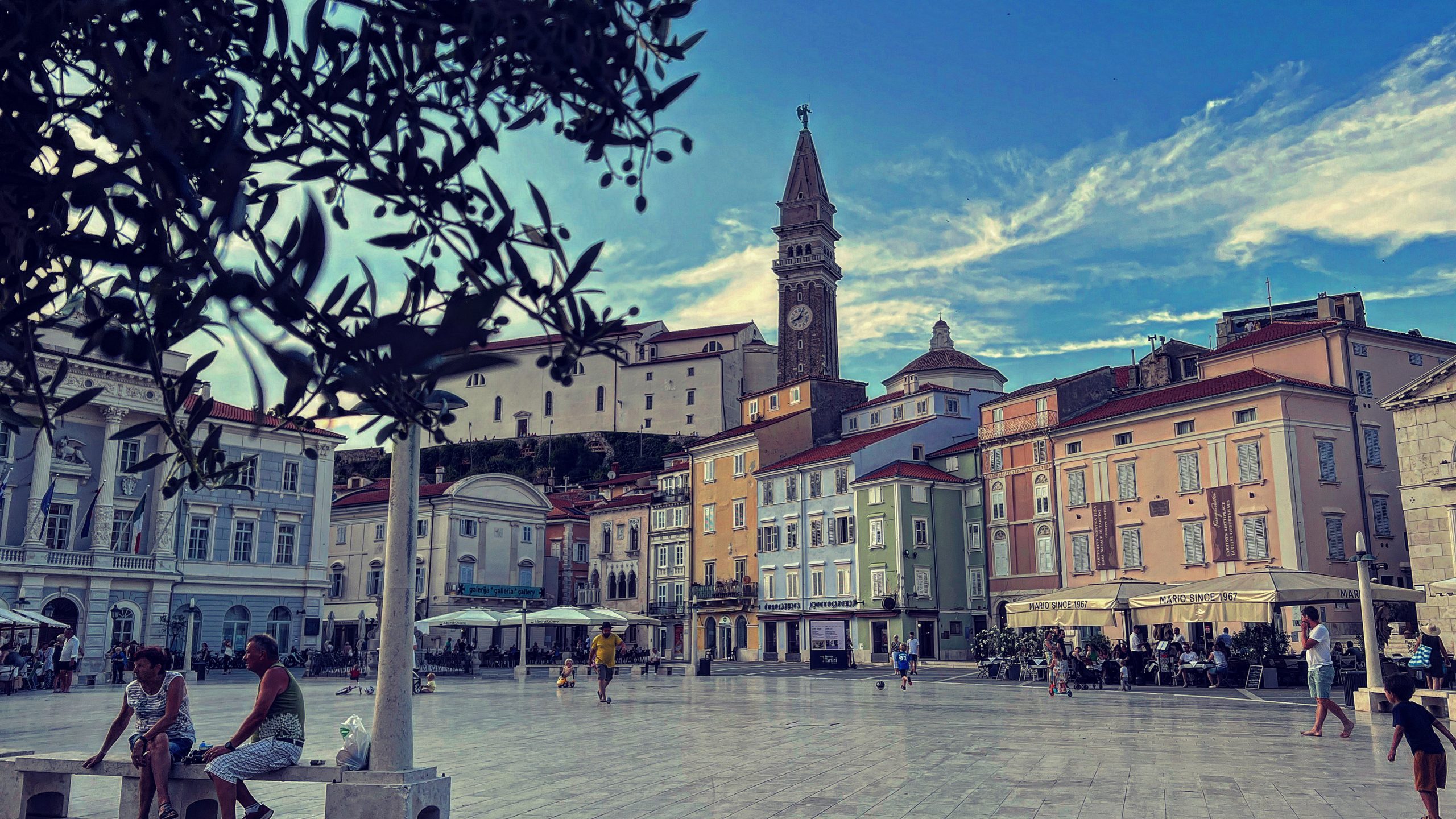
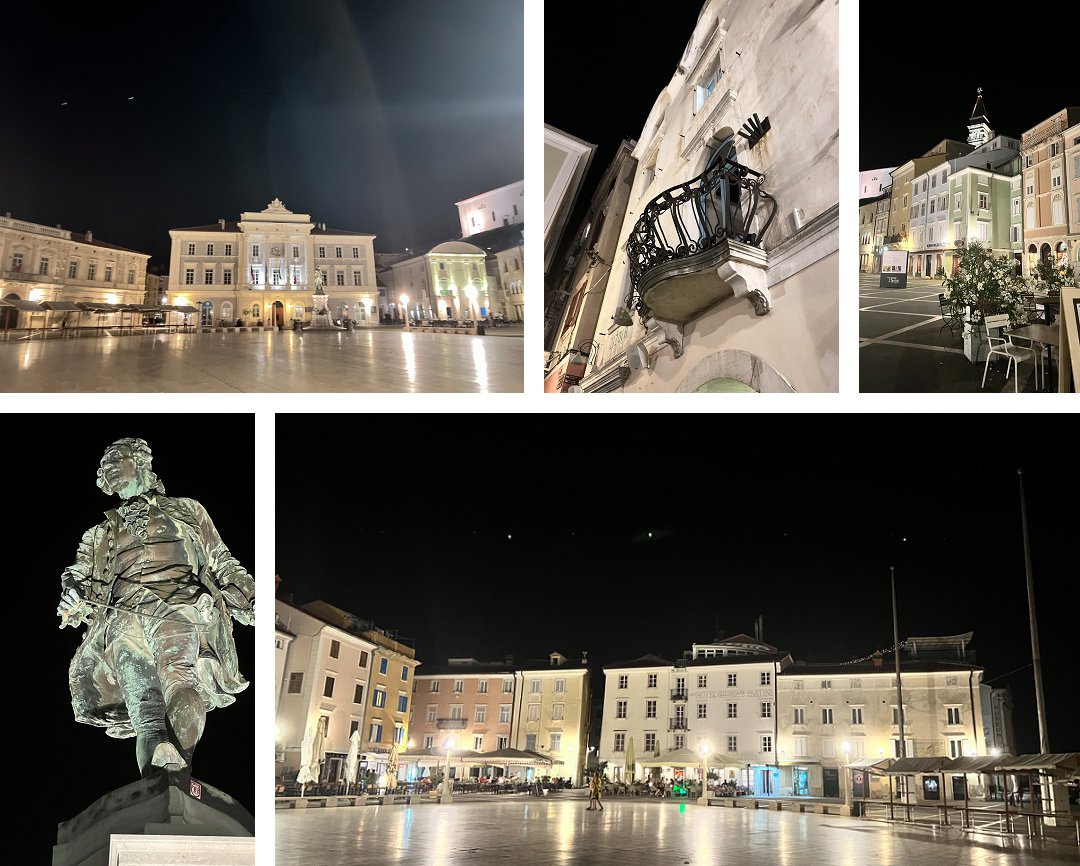
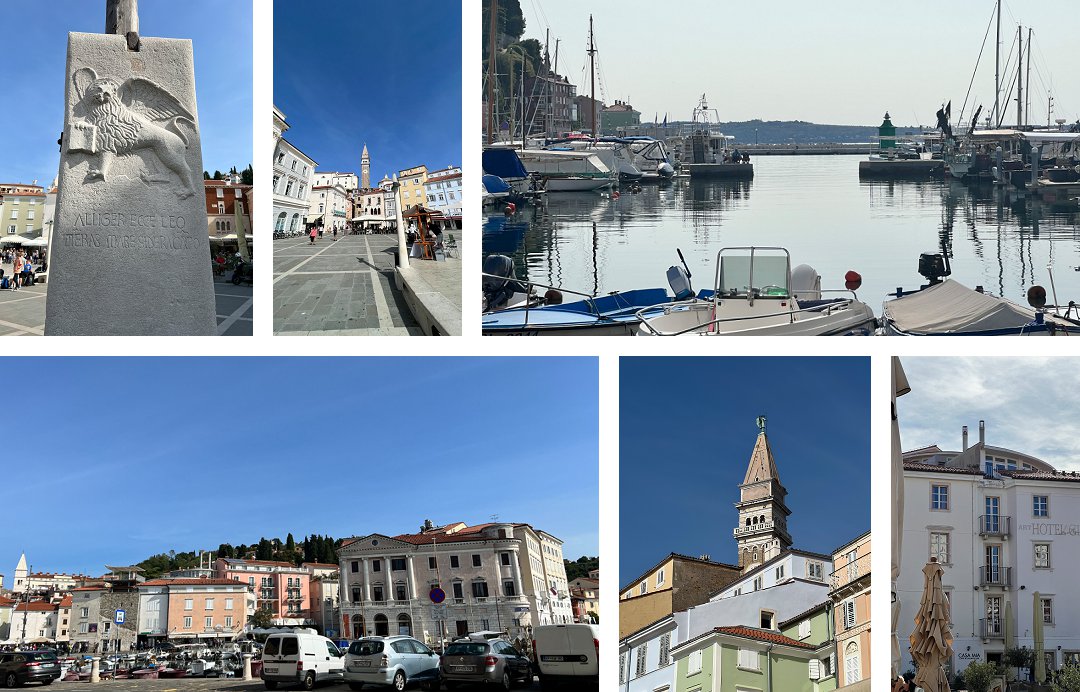
The old town leads directly off the square, via a series of cobbled alleyways, all taking you up to the top of the hill and the town walls, where the vantage point is amazing. From the walls (and the top of the campanile) you can see the whole of Piran below you, and the views across to Istria and Italy. The old town itself, is as pretty as picture. Higgeldy-piggeldy houses, of various heights and sizes, all painted different pastel colours usually with lowers tumbling down out of window boxes. Little independent shops and holiday lets and the odd boutique hotel, mingle with the houses.
Piran, I don’t think, ever gets very, very crowded, but if you did want to escape Tartini Square or the harbour, where the restaurants and bars are located, I’d really suggest the walk up into the old town and take in the cloisters of St Francis Monastery, considered by many to be the most beautiful in Slovenia. This is such a peaceful, serene place, and if you are lucky, you may even get the place to yourself, like we did. And, you’ll get the opportunity to sit on an amazing chair, carved out of the trunk of a 500 year old olive tree, just as our friend did. Do go into the church as well, and look up…
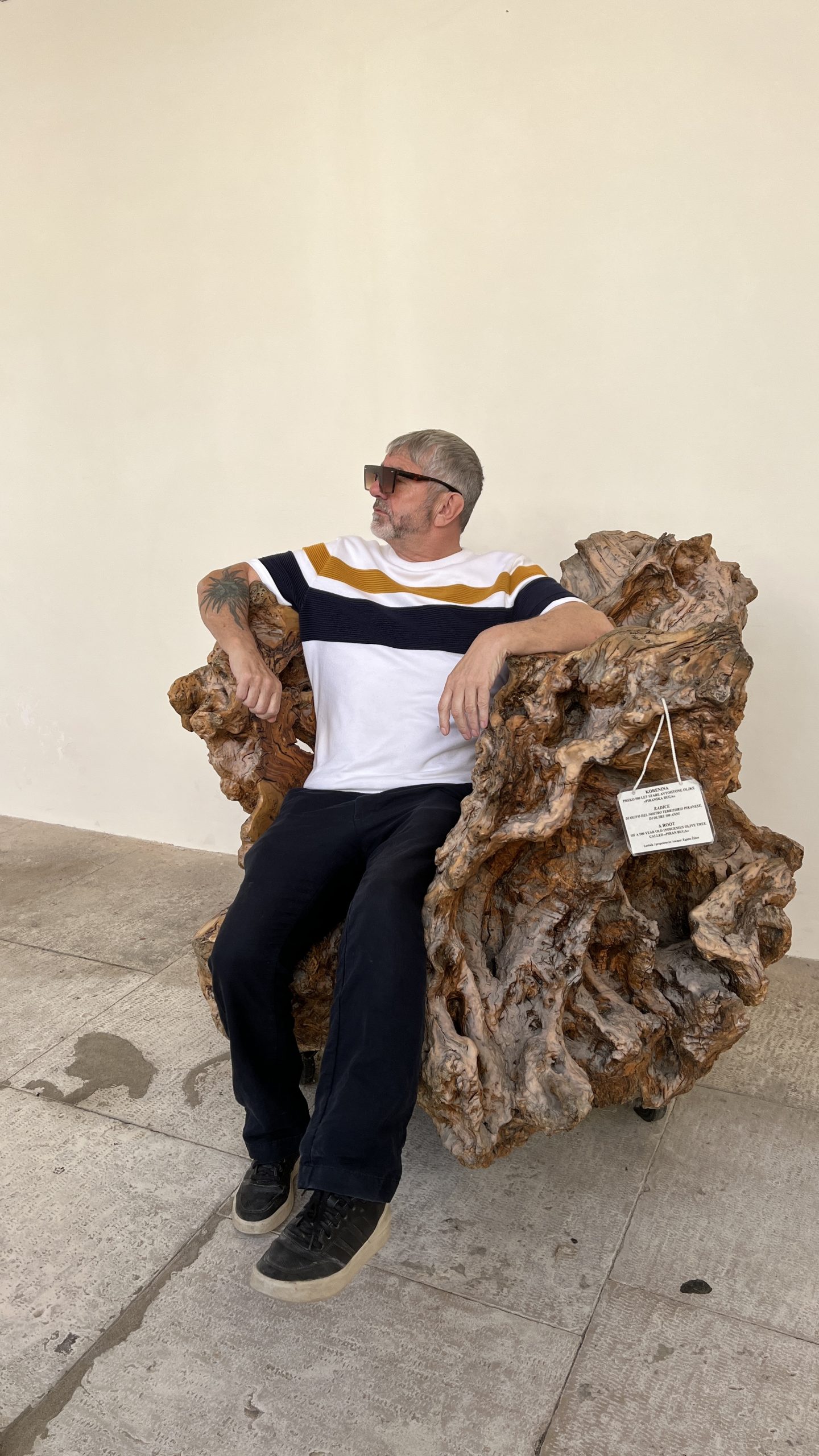
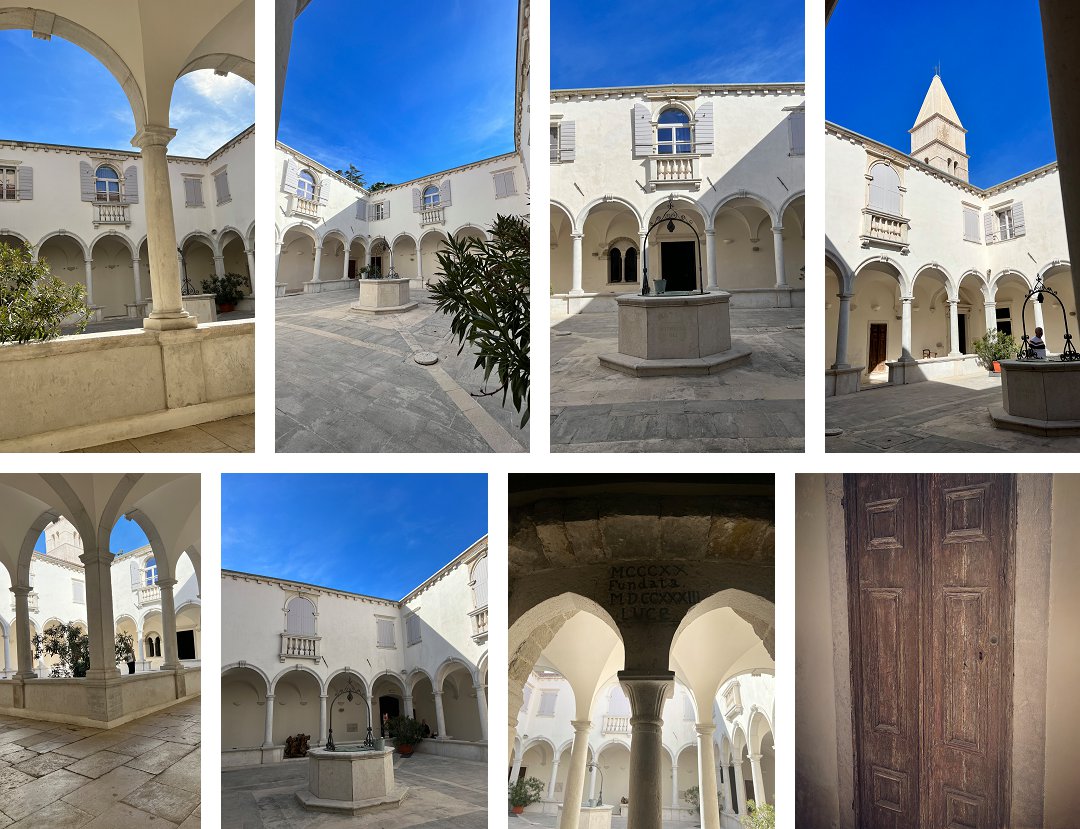
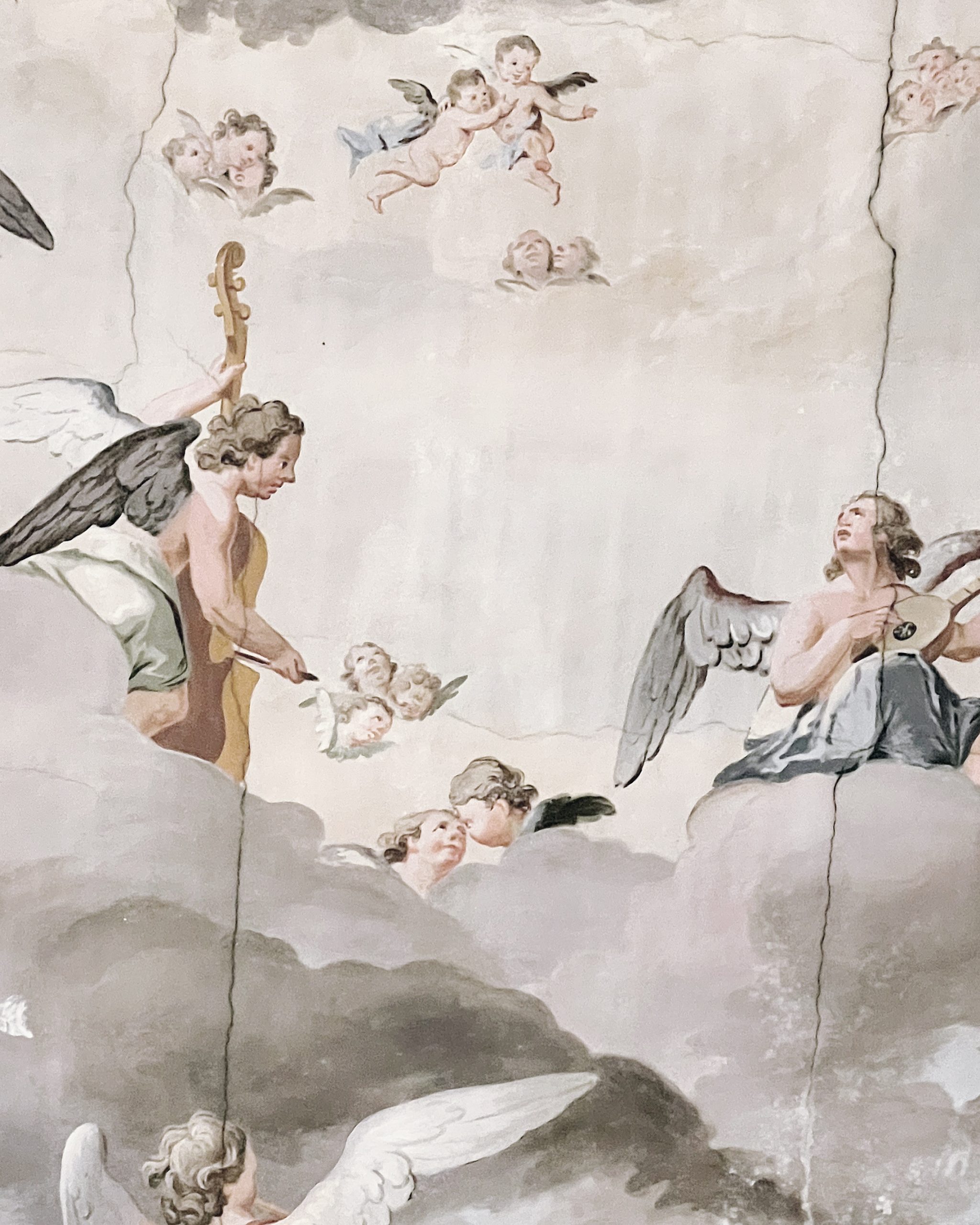
The harbour is small, and very pretty, as is the coastal path. There are lots of restaurants here, most specialising, obviously in fish. It’s safe to say we’ve not had a disappointing meal here, as like Italians, the restauranteurs of this town, know how to do food well.
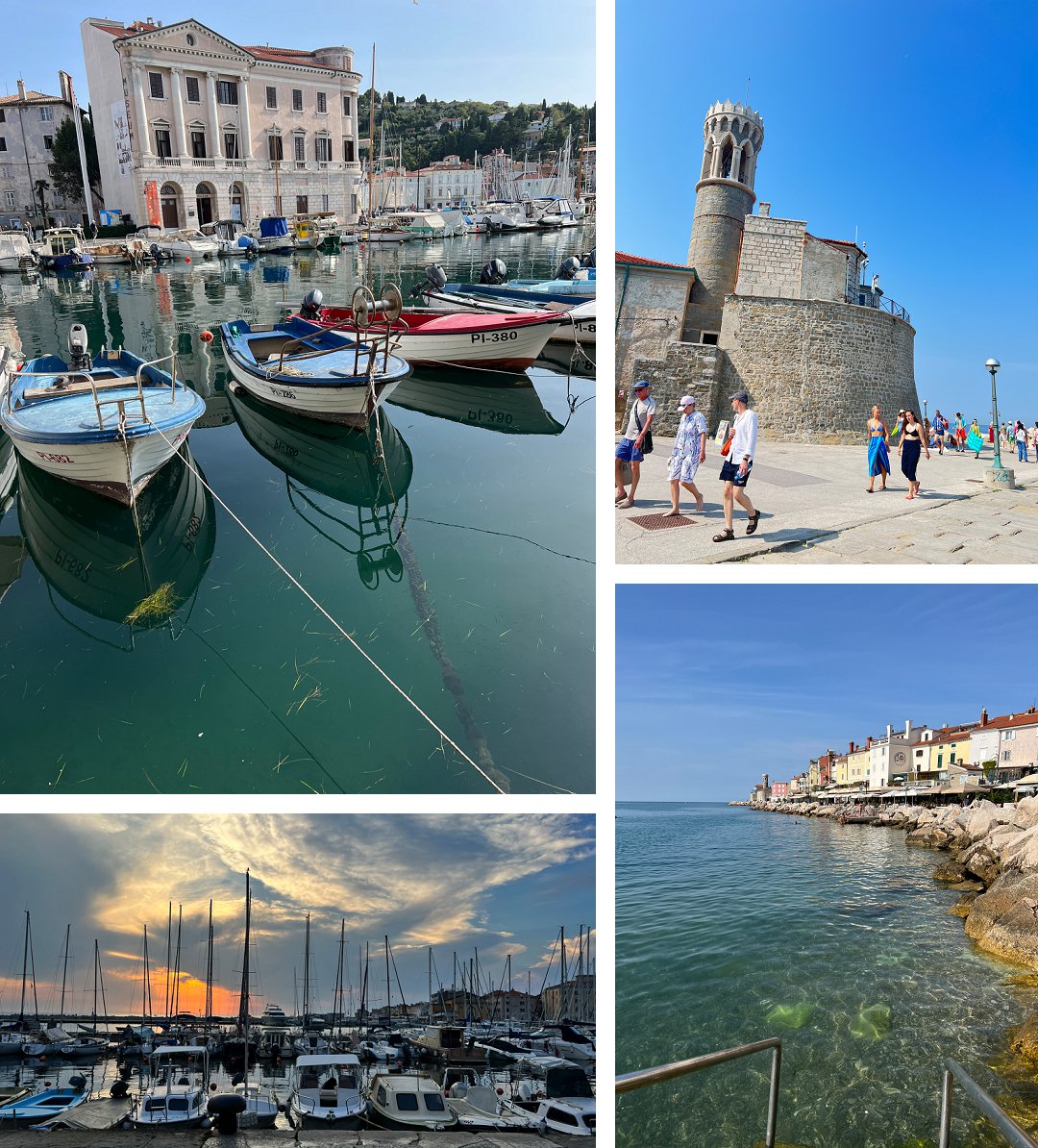

We are extremely lucky that we now live so close to beautiful places like Piran, and its neighbours of Portoroz and Izola, and can just drive across the border for an afternoon out or an evening away. Now that Croatia has joined The Schengen Zone, it has made travel across the border so much easier, and that means we can really explore our new(ish) locality. It’s a real privilege to live somewhere so stunning.
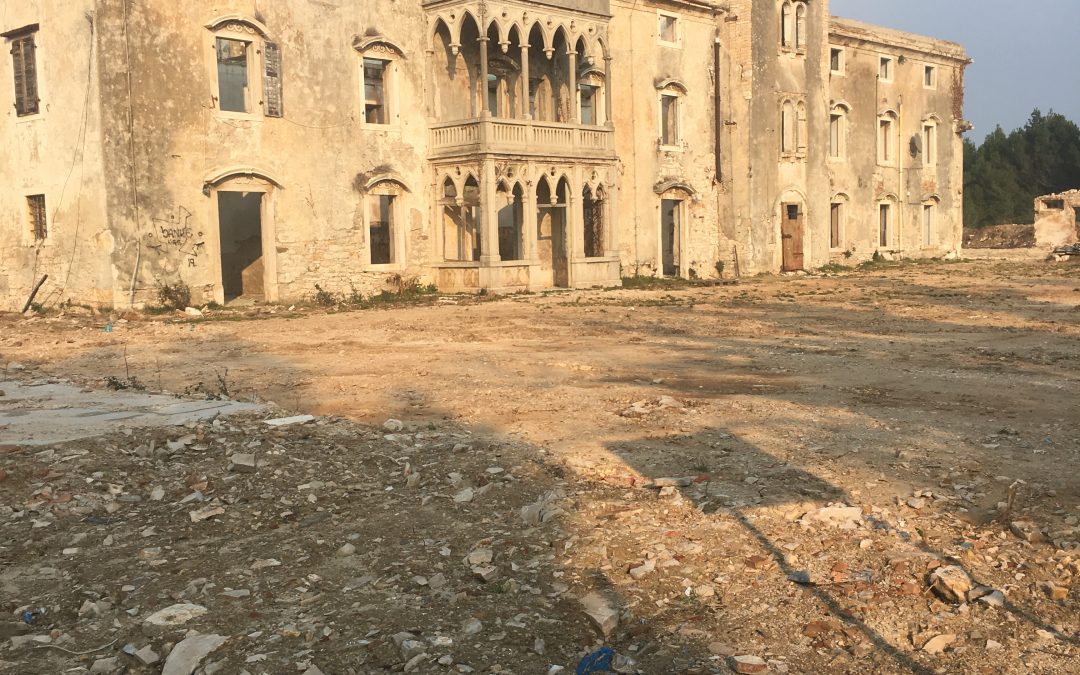
by Helen | Dec 18, 2023 | Renovation
A little bit of a different renovation tale today. One that is slightly more ambitious than the one we have embarked upon! When we’re out and about in Istria, we often stumble upon what we think are hidden treasures. Things that we think only we know about. Istria is a bit like this. Away from the coastal hot-spots and the famous inland medieval walled hill top towns, there are little villages, some mostly abandoned, hidden away. We never imagine that anyone else has discovered these half hidden treasures, and that we are the keeper of the secrets. Just after we moved to Istria, we found one such place. From a country road, nestled in the trees in the distance, we could see what looked like the turrets of a castle, so of course we had to investigate…
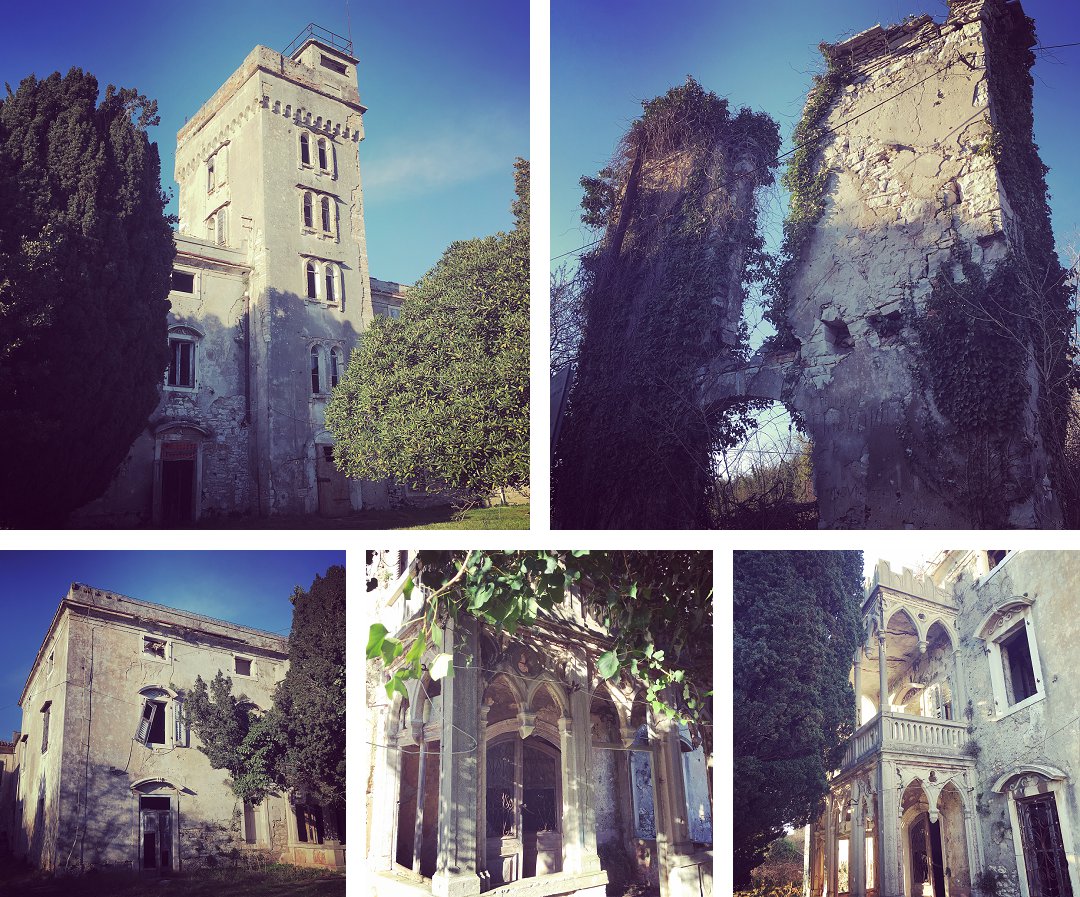
Up a an overgrown track, this beauty revealed itself. Although clearly not occupied, some of the adjacent properties were, so it definitely wasn’t the big secret we thought it was. We did manage to get quite close to it, and could see the unbelievable detailing and through certain windows, get glimpses inside. At some point it must have been very grand, but like many properties in Istria – even very majestic looking ones – it had obviously been left to be reclaimed by nature. But we were curious and after a big of digging around found out that it was known as Villa Cesare (also Stancija Grande), constructed as a villa with a country estate for a nobleman from Piran called Angelo Fabris, to be used for silkworm farming.
It was reconstructed and expanded in 1877 for Carlo Cesare, a ship-owner from Trieste, who extended the villa significantly, furnishing the western section of the building as his own residence, and leaving the eastern side for servants. In the centre of the building, he erected a high tower in the characteristic gotico quadrato style, inspired by the Miramare castle and the Lloyd Triestino arsenal building in Trieste. Cesare continually renovated the villa and organized a lavish pleasure garden. Unusually for the time, the Cesare family had running water in the house thanks to the free flow of water from the water tower, and their own electric generator for lighting and listening to the radio, all long before 1936, when electricity was brought to Savudrija, the nearest small harbour. Villa Cesare was taken over by the military during World War II, and since the 80s, left to fall into ruin.
But, we got quite a big surprise when we revisited recently. The whole area around the Villa, had been cleared of foliage, as well as the vines growing up and out of the Villa. The land at the front had been levelled and the whole estate fenced off. So, our interest was piqued again – what was happening with it? And, as usual, Google provided the answers…
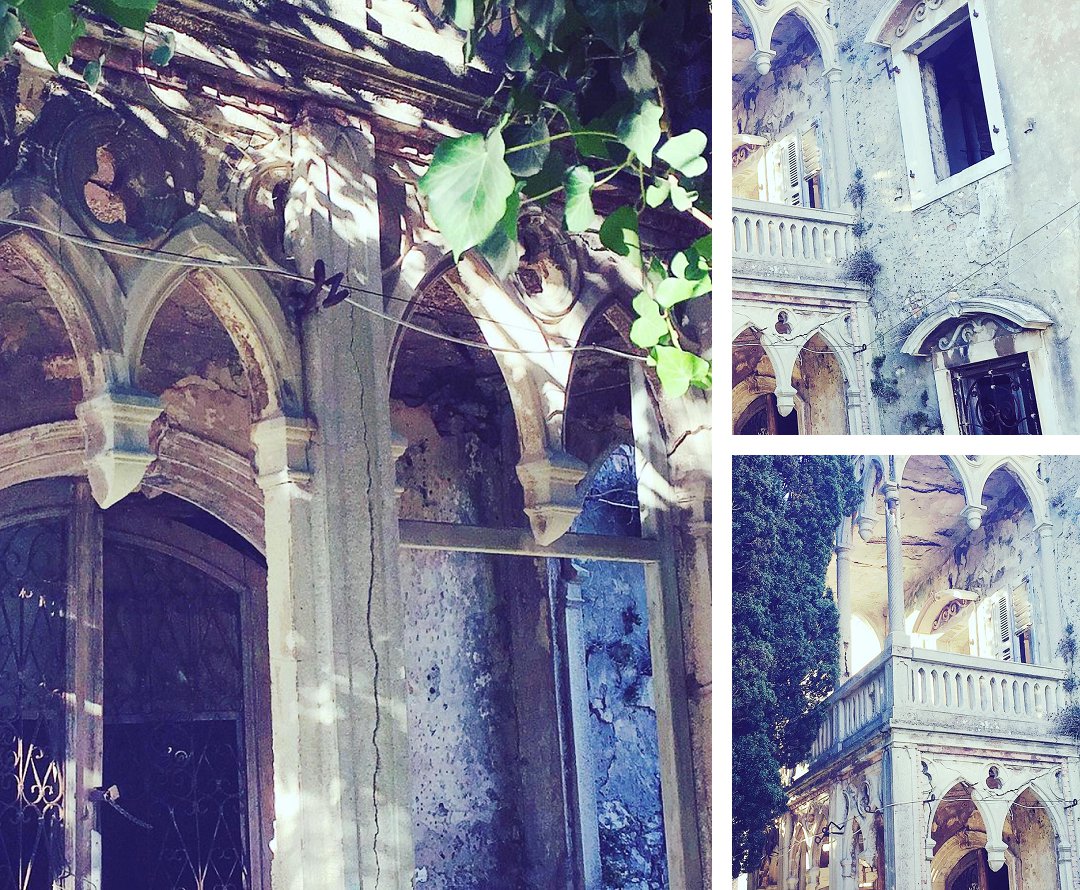
It would seem that new life is now being breathed back into the beautiful building, with a very ambitious renovation project, which will have the restoration of its original grandeur at the heart of the project. The architectural integrity of the building, as well as its layout, will be preserved according to strict conservation regulations, with the estate seamlessly integrated into the landscape as whole. Investors plan to build an 18-hole golf course, a five star hotel with a capacity of 200 beds, and catering facilities. The crown jewel of the estate, is of course Villa Cesare, and it is reported that this will house the most luxurious accommodation units within the resort. It is hoped that the the conservation research of the estate will contribute to a better understanding of the 19th Century leisure architecture of Istria, which has been much neglected in comparison to similar architecture of Classical Antiquity and the Middle Ages. Reassuringly, the investment company has stated that this project has nothing to do with the mass-construction of apartments on the coast, and will be subject to the supervision of authorities that care for historical and cultural heritage. The architectural integrity of the building, as well as its layout, will be preserved according to strict conservation regulations, with the estate seamlessly integrated into the landscape as whole.
So, hopefully, a new era for for one of Istria’s beautiful abandoned villas…
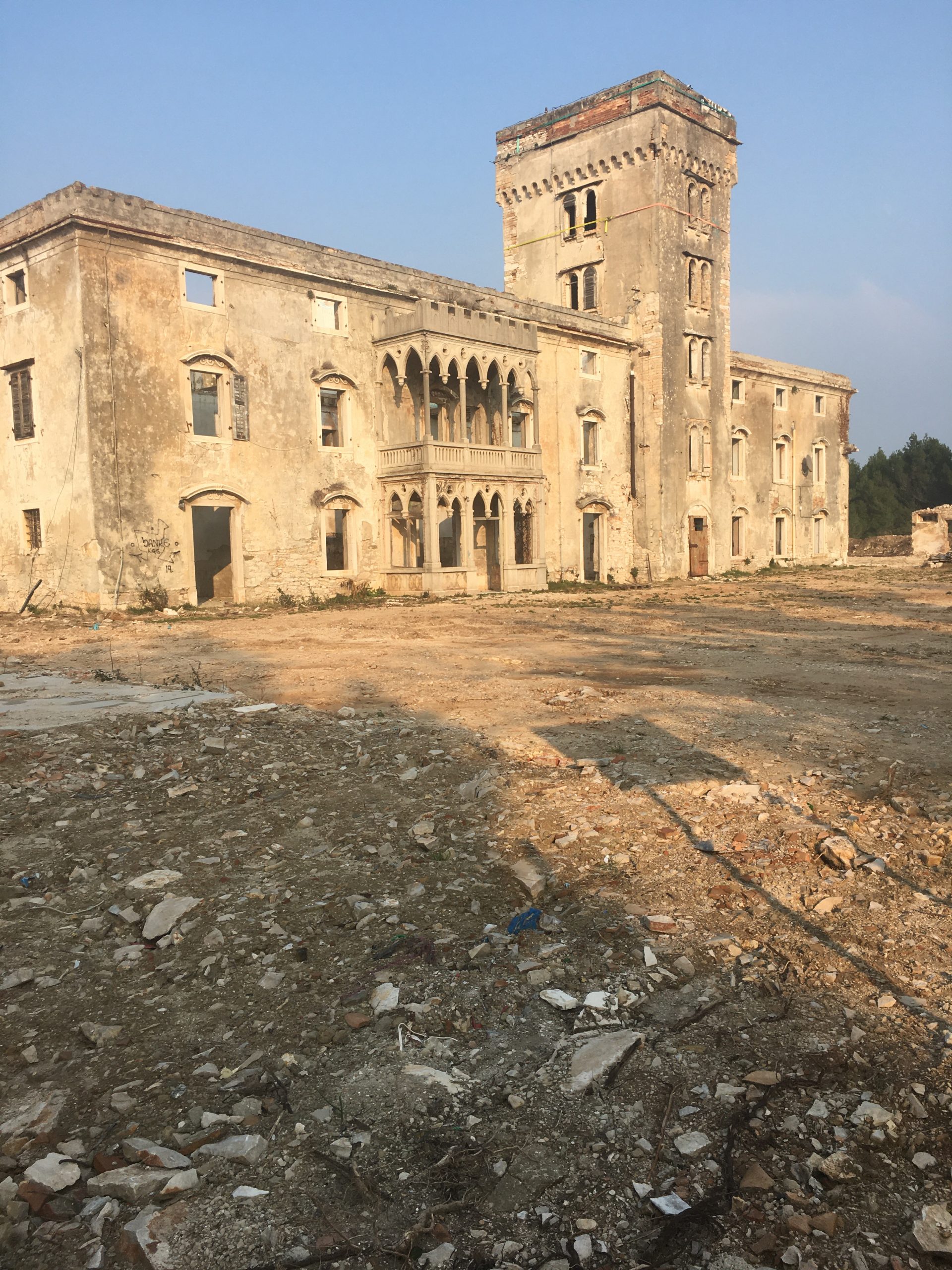
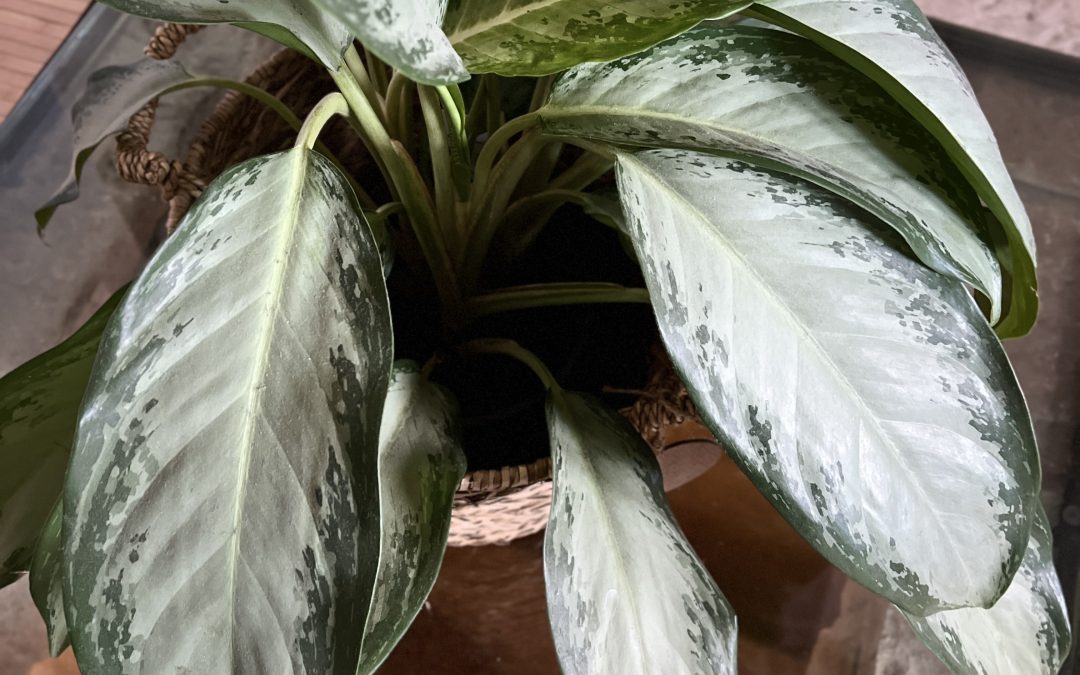
by Helen | Dec 14, 2023 | Renovation
Although the whole job isn’t quite 100% complete, we do have a very, very unique feature in our house. If you’ve never seen any of our photos, or read any of our renovation blogs, you might not not know about our Well Room. And, that’s clue. The name we call the room.
When we bought the house, an original stone cisterna stood in the middle of the room, at the front of the house. From what we’ve been able to ascertain, this was actually outside the house, and was the water supply for the village. One of the neighbours has memories of his grandmother coming to the well for water. The room that it sat in was then at some point, built around the well – we can see a join in the stone work at the rear of the house, which has only recently become obvious since the small house was demolished, and sunlight now hits this external rear wall, showing where the house was extended. The well was an obvious pull factor in us falling in love with the house, but, once we were actually living in it, its impractical position became clear. Off the Well Room is a downstairs bathroom, which we thought about relocating, but when we have guests, it’s in a very good position – and it’s good to have two bathrooms on separate floors. Once we decided to keep it where it was – but rip out all of the fixtures and fittings and totally renovate – we knew The Well had to be addressed. But we had to think carefully about how we were going to address it, as it was clearly a historical feature of the house – you can see the pulley system and zinc bucket, used to draw the water. And, we also had considered the chamber, which has a drop of 10 metres and was full of water.
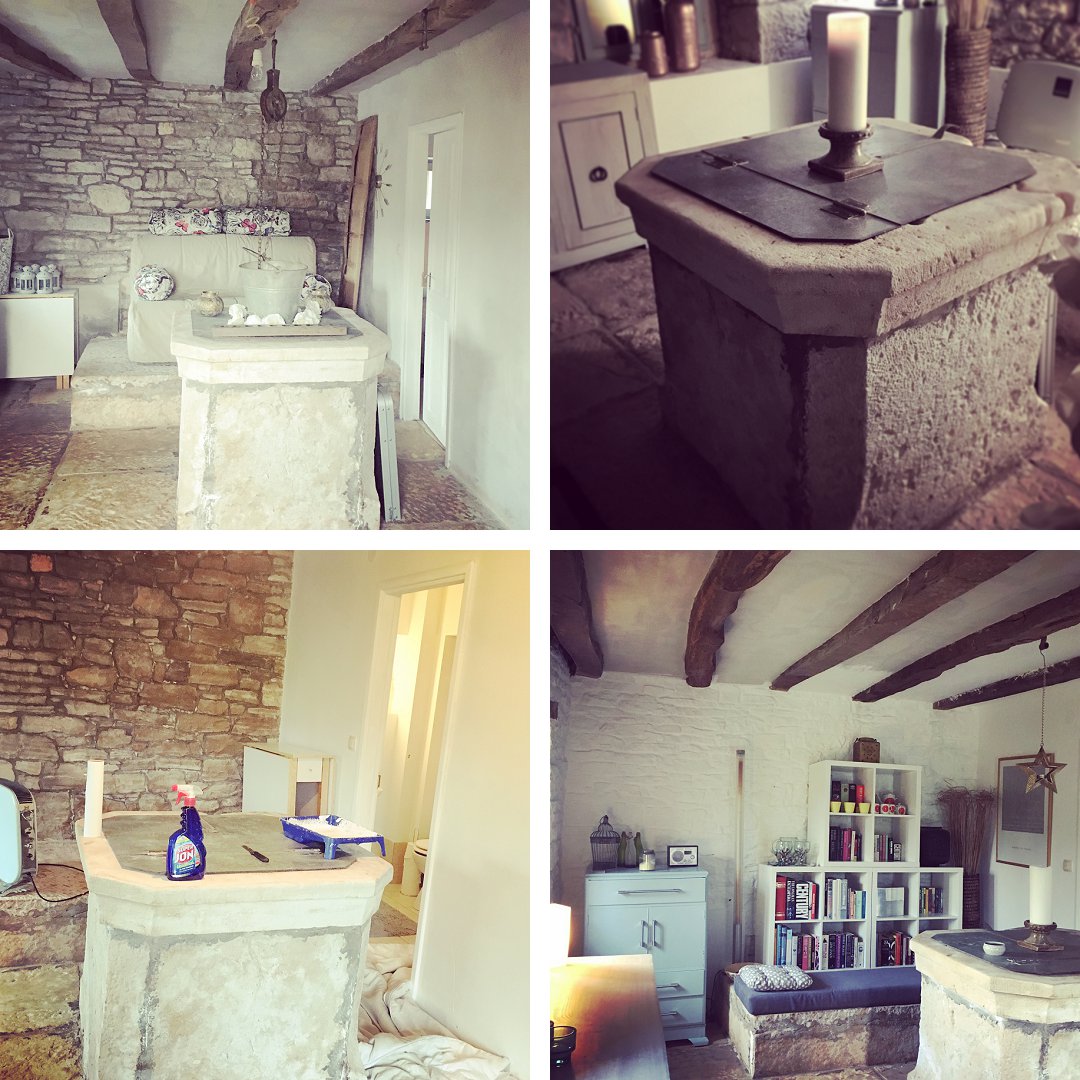
so, what did we do?
The first job was to drain the chamber, and using a pump, it took over two days to get all of the water out. The drain pipe, from the roof guttering, which fed the chamber with rain water, was diverted and the access hole blocked and filled so that no further water could get in. A dehumidifier was then carefully lowered into the chamber and over the course of a week, with much hauling back up and emptying, we started to see the Istrian stone walls drying out. Once all of the water had been pumped out, we also saw the original metal hinged cover, lying on the base. It had obviously fallen in at some point, but could not be recovered and now that the water had drained, we could see how old and rusty it was. The decision was made to leave it lying, where it had been for who knows how long.
A stone mason then arrived to dismantle the well structure as we had decided that the perfect place for it, was going to be on the raised concrete outside the front door, once again positioning her outside the house. With great care, he removed all of the mortar from the joins and once outside, he re-mortared the sides and top together again, making it look as if she had always been in her new position.
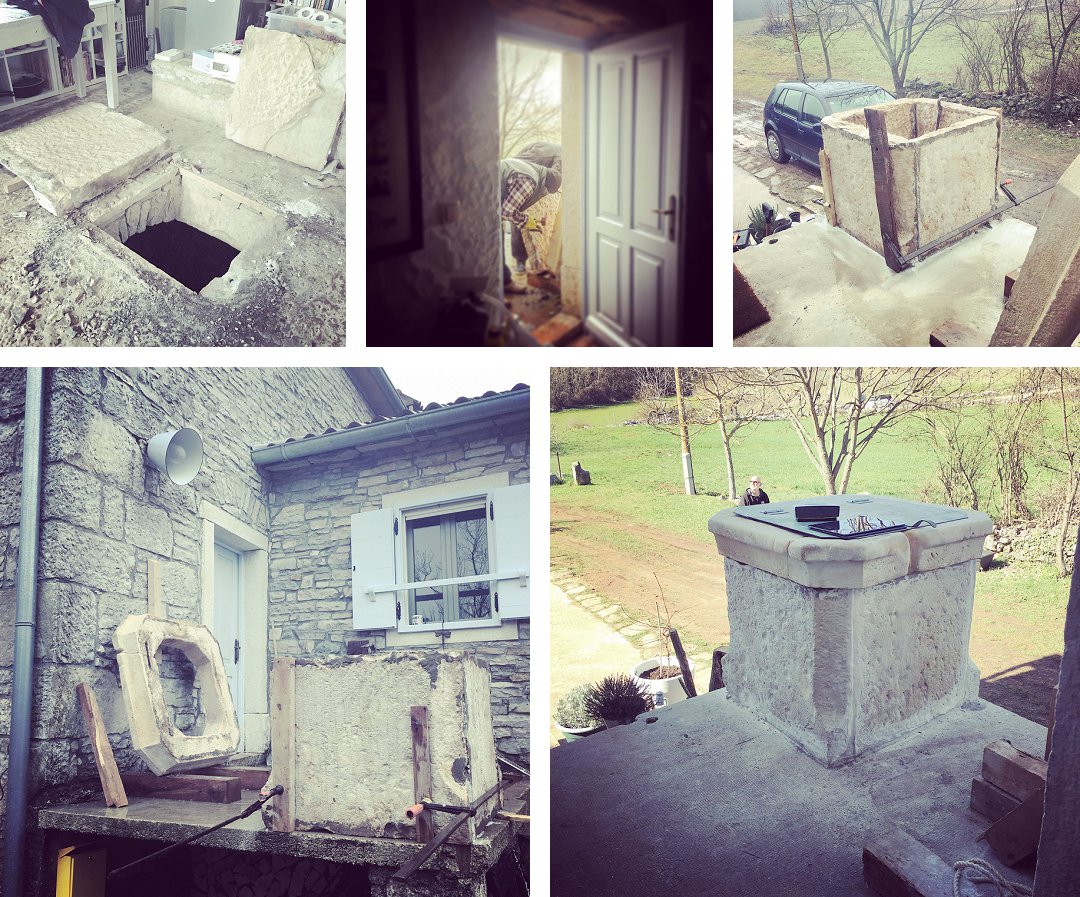
Five years on, she’s looking very much at home. A small wall has been built between the wall and the main front wall of the house and with a tree planted up in the structure, all looks lovely…
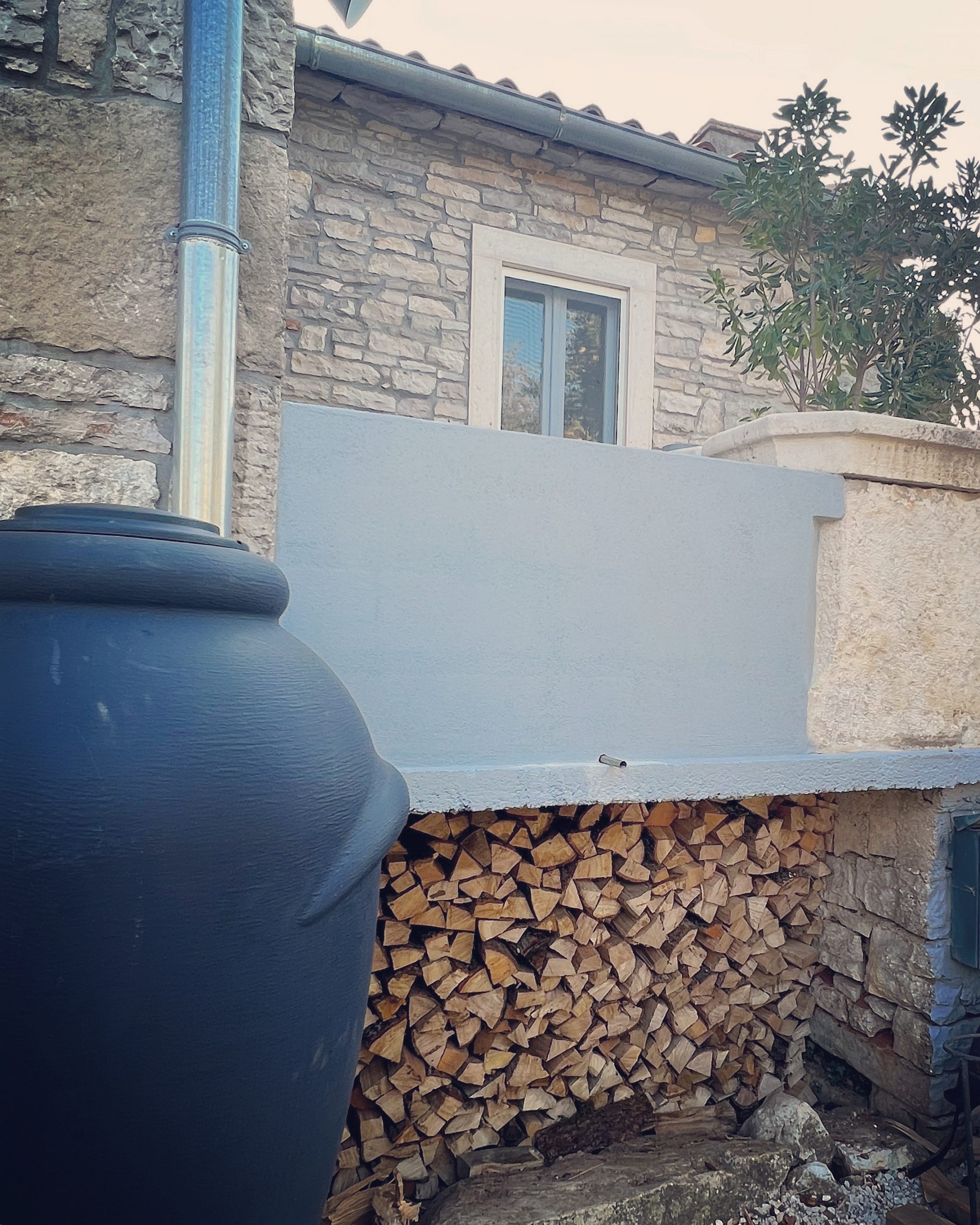
And, what about the hole in the floor, with a 10 metre drop, where once a well stood? Well, after many delays due to manufacturing, we took delivery of a very heavy, triple glazed reinforced glass cover, which has been sitting on a metal frame ever since, covering the hole. However, this is where we still need to do some work – the glass is about 2cms high and so if you are a bit clumsy, there is a real danger of a toe stub! A round furry rug and a plant currently sit on top of the glass, minimising the toe danger, but we do know we need to finish this project properly. The plan is to have our builder drill out a channel in the stone top of the chamber, so that the glass will sit within it and be flush to the floor. This though, we think will be done in the New Year, as the thought of power drills, and noise and dust, in the run up to Christmas, is just too much. With family here for the festive season, we just need to make sure that toes are well protected…
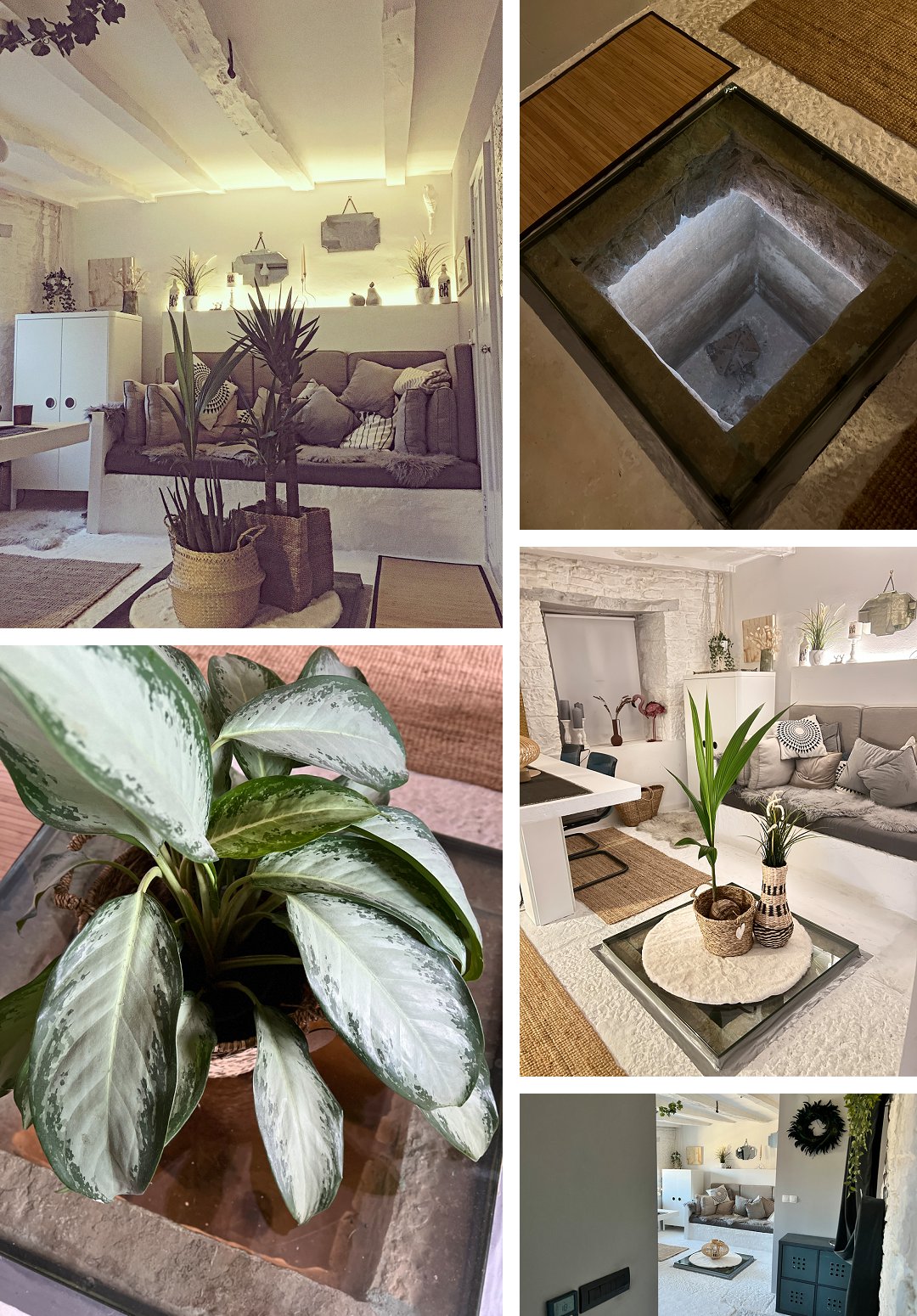
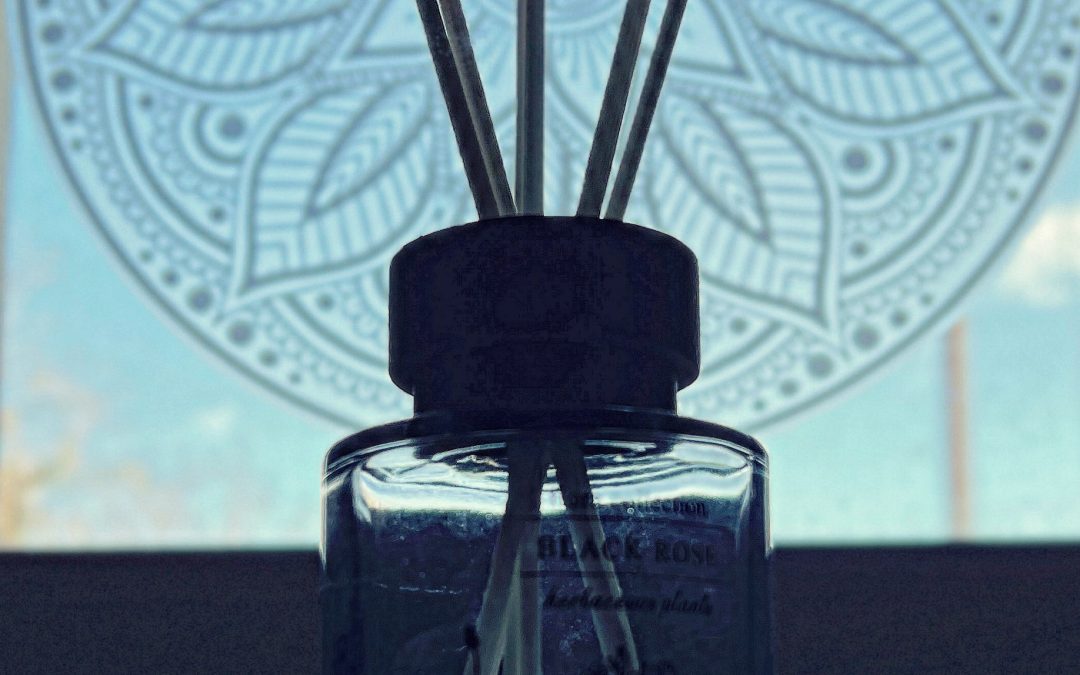
by Helen | Dec 14, 2023 | Renovation
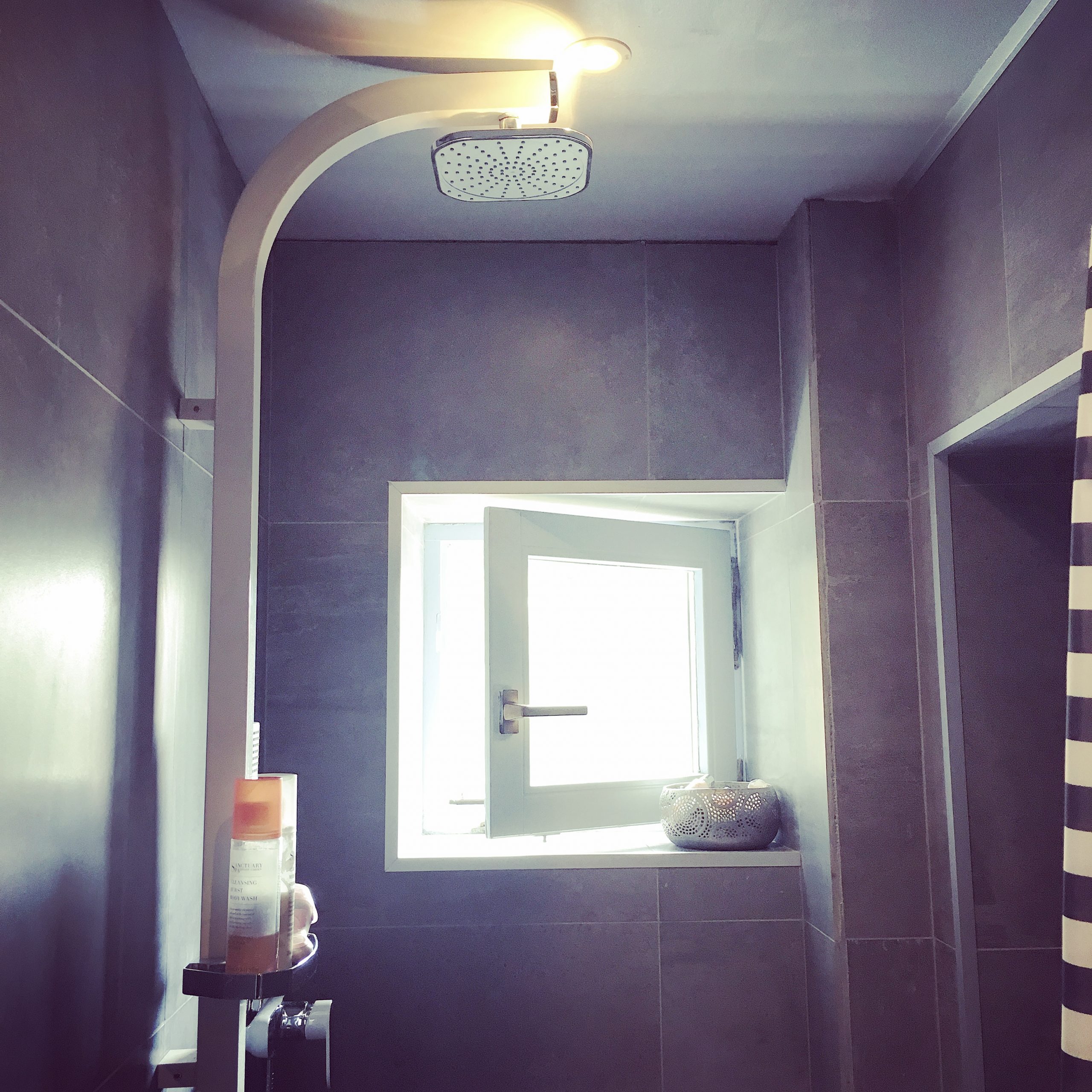
Although not overlooked, now that the small house has been demolished, we felt we needed to do something with the downstairs bathroom window. No-one can see you in the shower, because the house is elevated and so all we’ve looked out onto previously, has been the roof of the house, covered in ever growing vines. But that’s all gone now, and the big expanse of sky, just seemed a bit too expansive, as we’ve not been used to it. And then I remembered a mandala transfer, which had caught my eye a while ago, and which I just had to buy, as I knew there might be an occasion when a mandala was just what I needed.
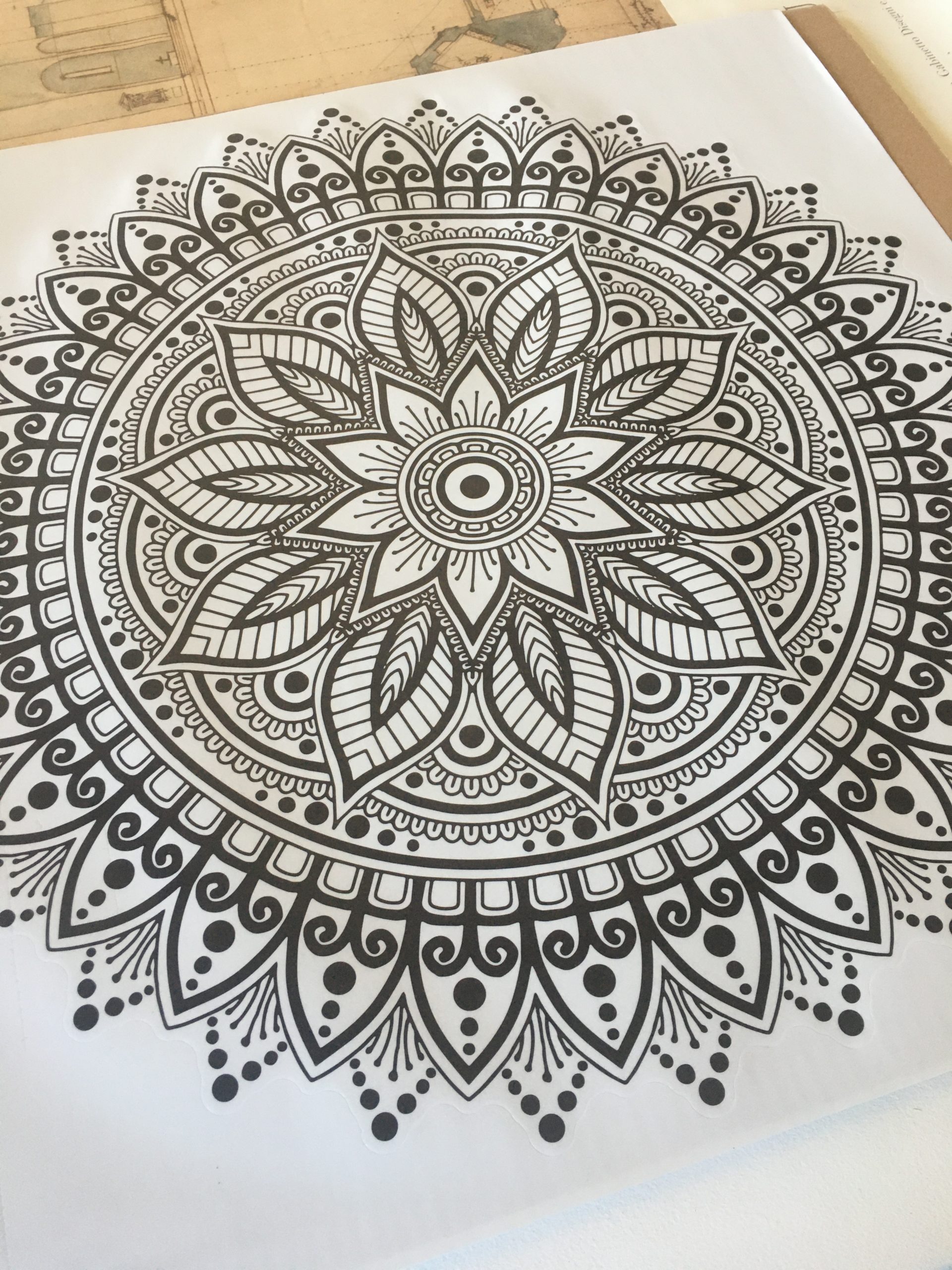
The shape was a little too large for the small square window, so it was carefully trimmed into a circular shape, and, voila! A pretty perfect fit, for our small bathroom window. Although in adding something with so much detail, and photographing it close up, did nudge us into also getting out the sandpaper, caulk undercoat and top coat and giving the whole frame a bit of a makeover, too!
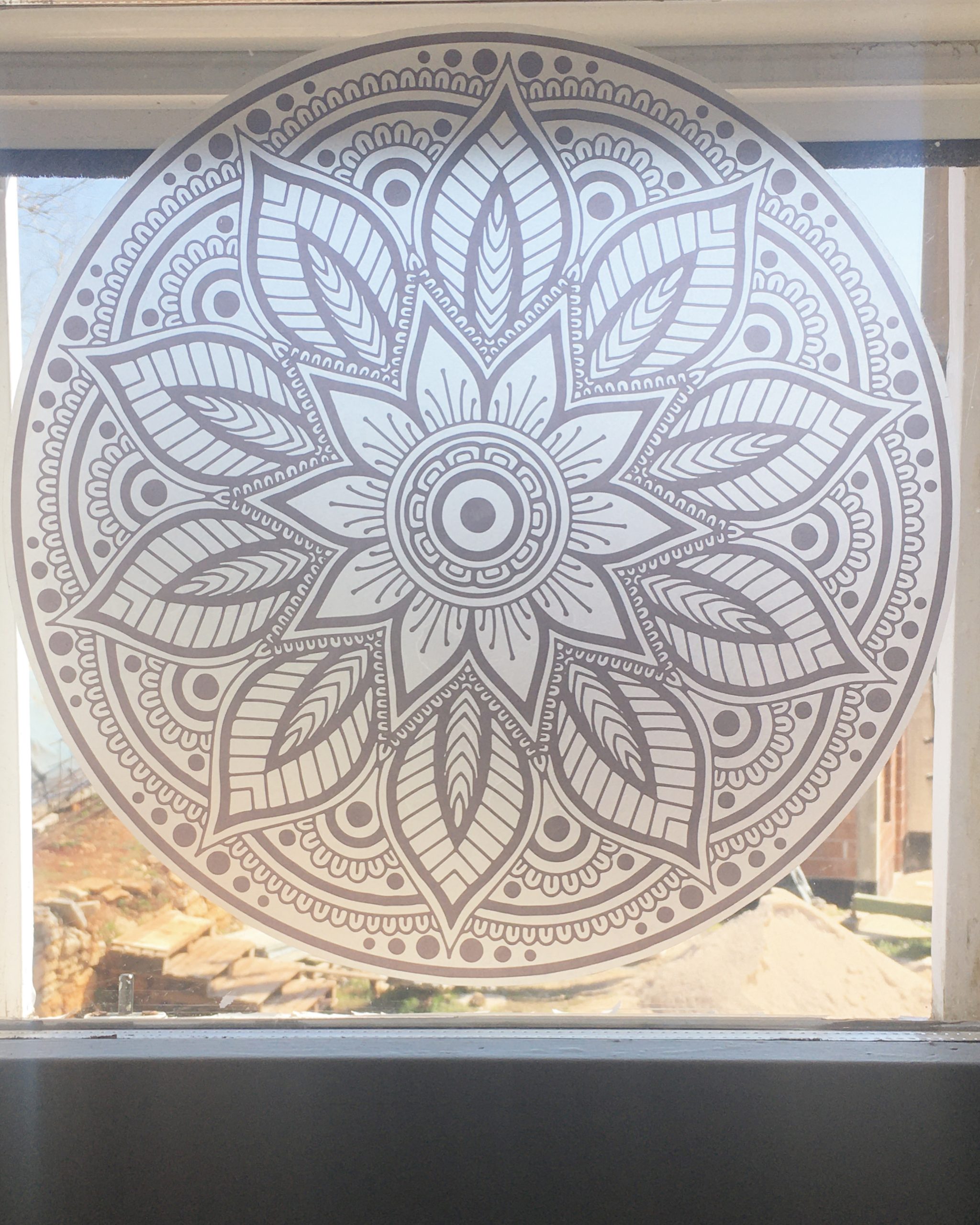
It’s such a small thing, but the transfer does add a little bit of something extra, in the bathroom. It’s certainly pretty and at the moment, it does detract from a crane which is being used further down the village, in the building of a neighbour’s new cottage. We like to add our own style and design personality on all of our rooms, even the smallest ones – and I have to say, this is a very cheery sight when you have your morning shower.
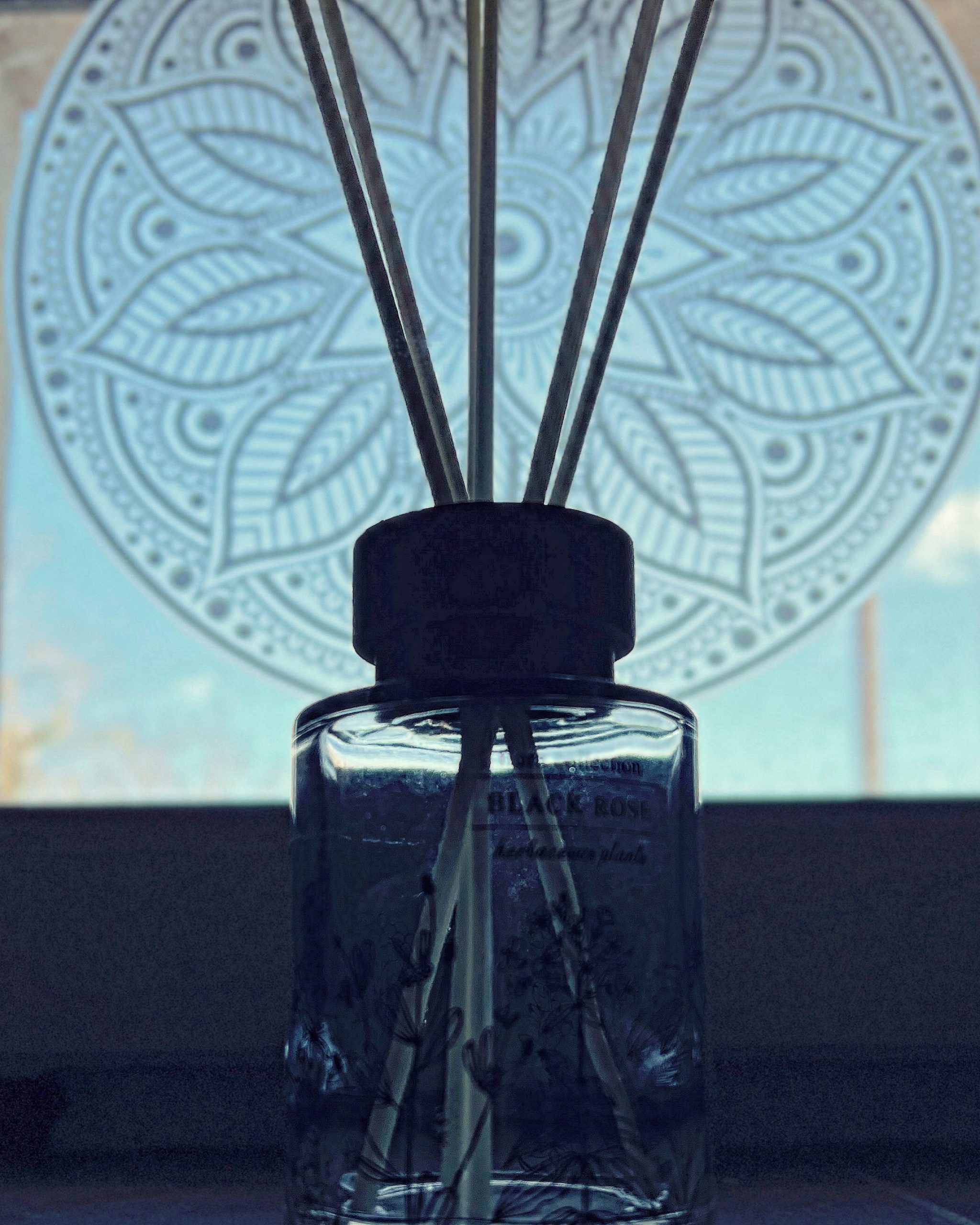
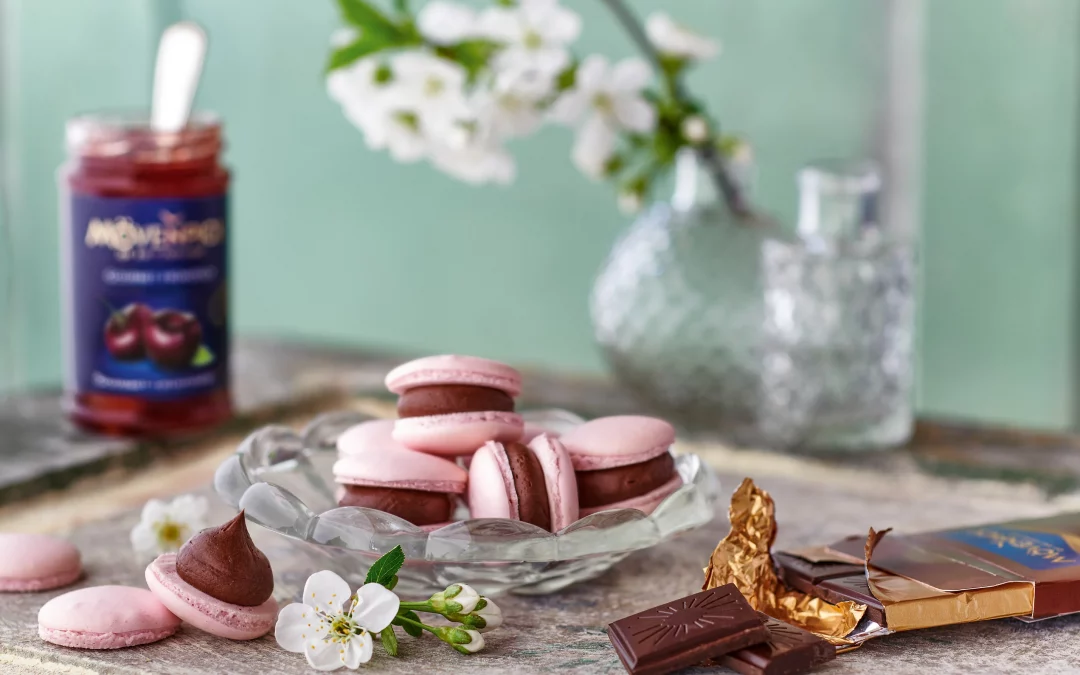
by Helen | Dec 13, 2023 | Croatia, Travel
Hotel Mövenpick, Zagreb, is located in a business area nestled near the Museum of Contemporary Art, Bundek Park, the city centre and the international airport, Zagreb Franjo Tuđman Airport. It’s in a location that we wouldn’t normally stay in, but we were taking friends back to the airport, and decided that somewhere which promised a little bit of luxury, with an on-site restaurant, would be ideal, before the drive back to Istria. We visited Zagreb a few times, and so didn’t feel the need, on this short stay, to book somewhere in the centre, so we could explore. After a busy summer, with family and friends, we decided that a relaxing time was in order, rather than being tourists in the city. Also, the hotel had a secure garage, so we didn’t have to think about finding car parking.
One other thing which caught my attention was the daily Chocolate Hour – a chocolate-filled event, a perk of the stay, which apparently happens in every Mövenpick Hotel around the world. All 83 of them. Just unfortunately for us, not the Zagreb hotel, on a Saturday afternoon. However, we don’t suffer from a lack of chocolate in our lives, and so we weren’t too miffed to be missing out on profiteroles decked in chocolate, petit fours, churros, chocolate-dipped strawberries, marshmallows, or mini ice-cream cones, amongst other delights.
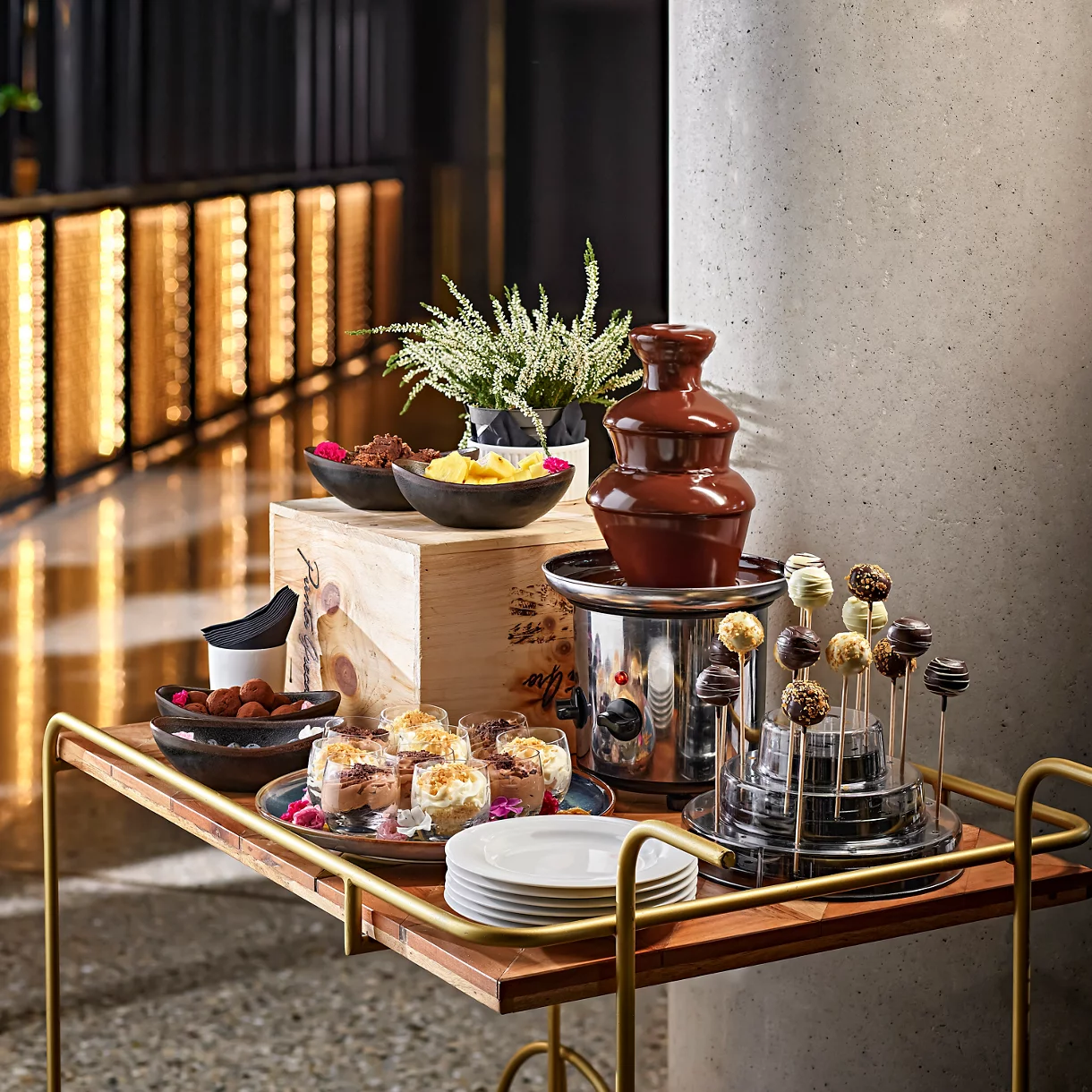
The hotel is a very modern structure – tinted glass exterior and industrial, dark vibes going on in the interior, which is carried through to all of the rooms presumably. It’s also quite high-tec, in that everything in the room – TV, lights, heating, aircon, blinds & curtains – run off a small console on the wall by the door. We are pretty tech savvy, but it did take a little bit of time to work out how to get everything functioning, so I dread to thing what turning on the bathroom lights might be like for a technophobe! However, technology aside, we were very impressed with our large double room. With lots of dark panelling and low lighting and dark furniture, it was definitely classy in style and very under-stated. Furniture was of high quality and very stylish. The divide between the bedroom and the bathroom was beautiful vertical ribbed glass, which let the light through, but nothing else.
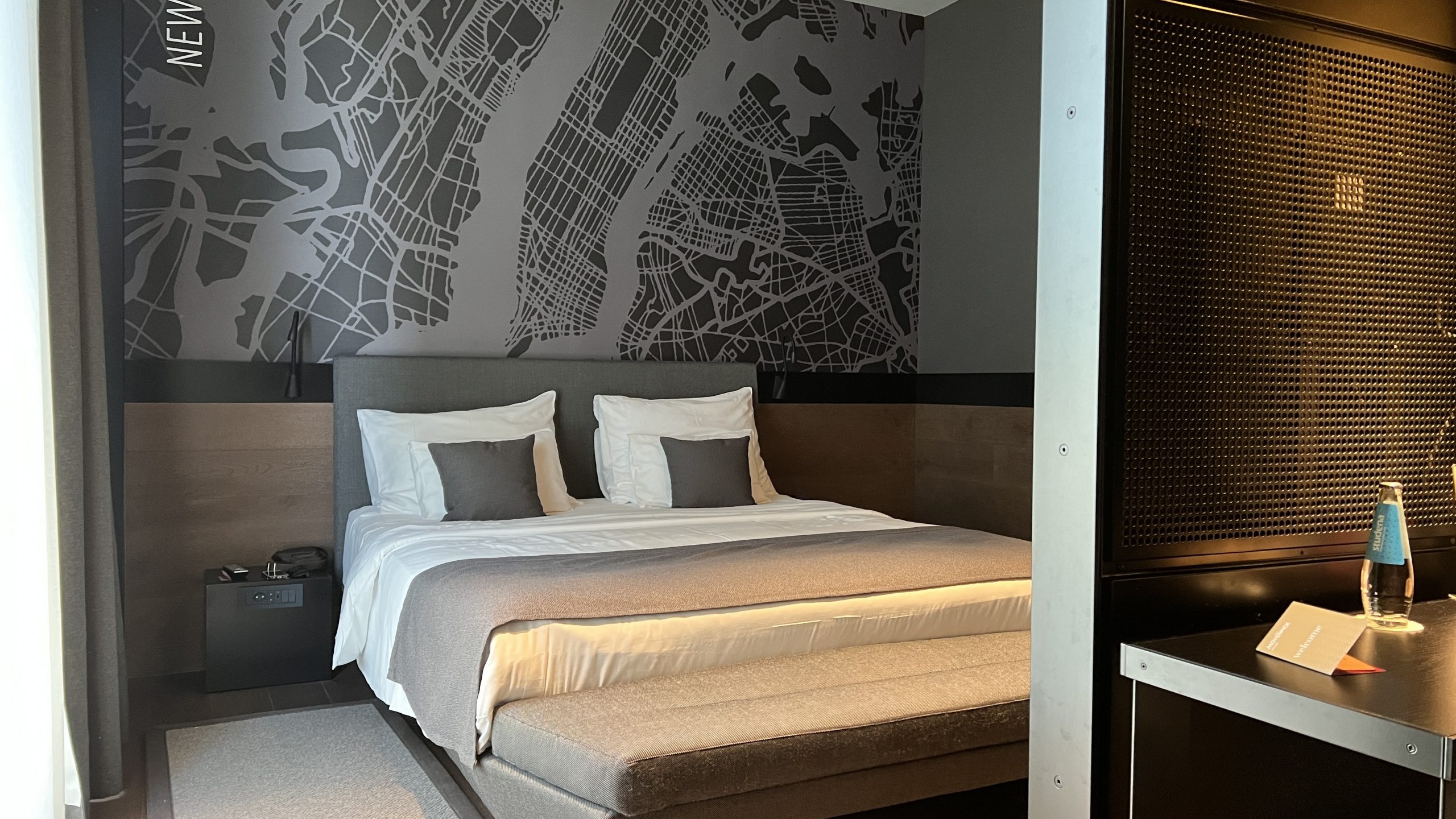
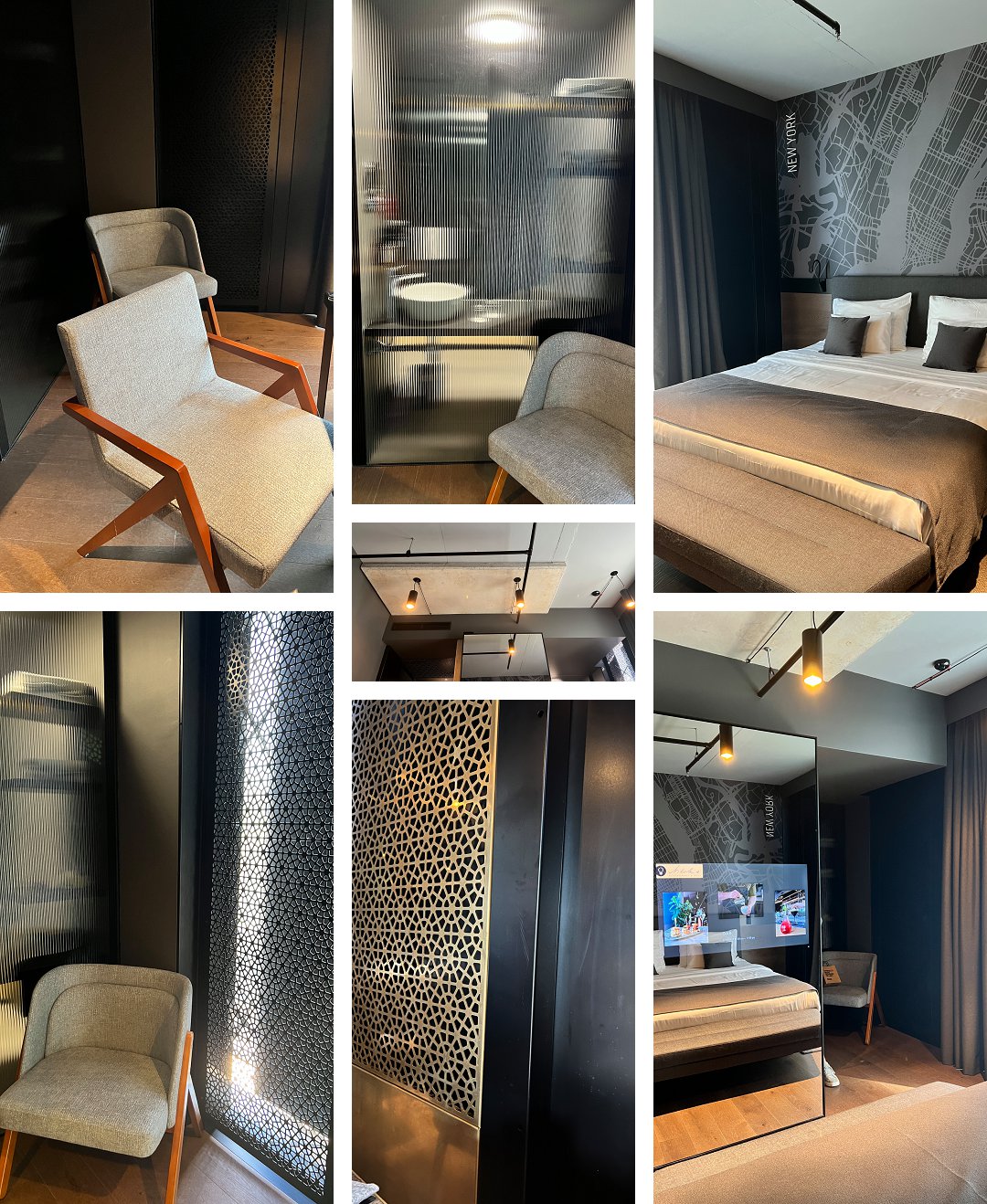
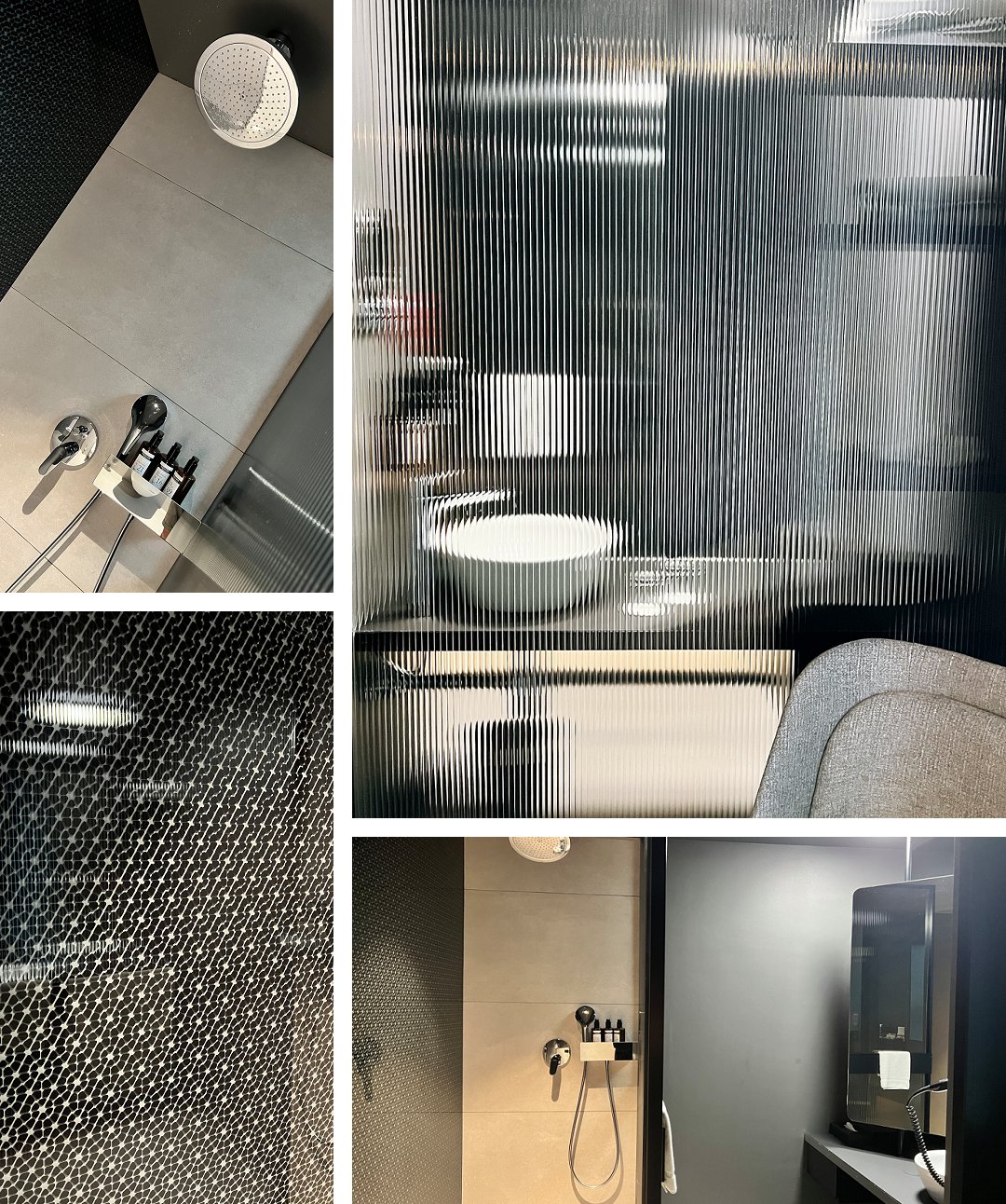
The communal areas – reception, bar and restaurant – were equally as well designed, with obvious attention to detail. And, the areas which I sometimes think are a little bit overlooked – corridors and lifts – were pristine. Top marks there, to the housekeeping staff.
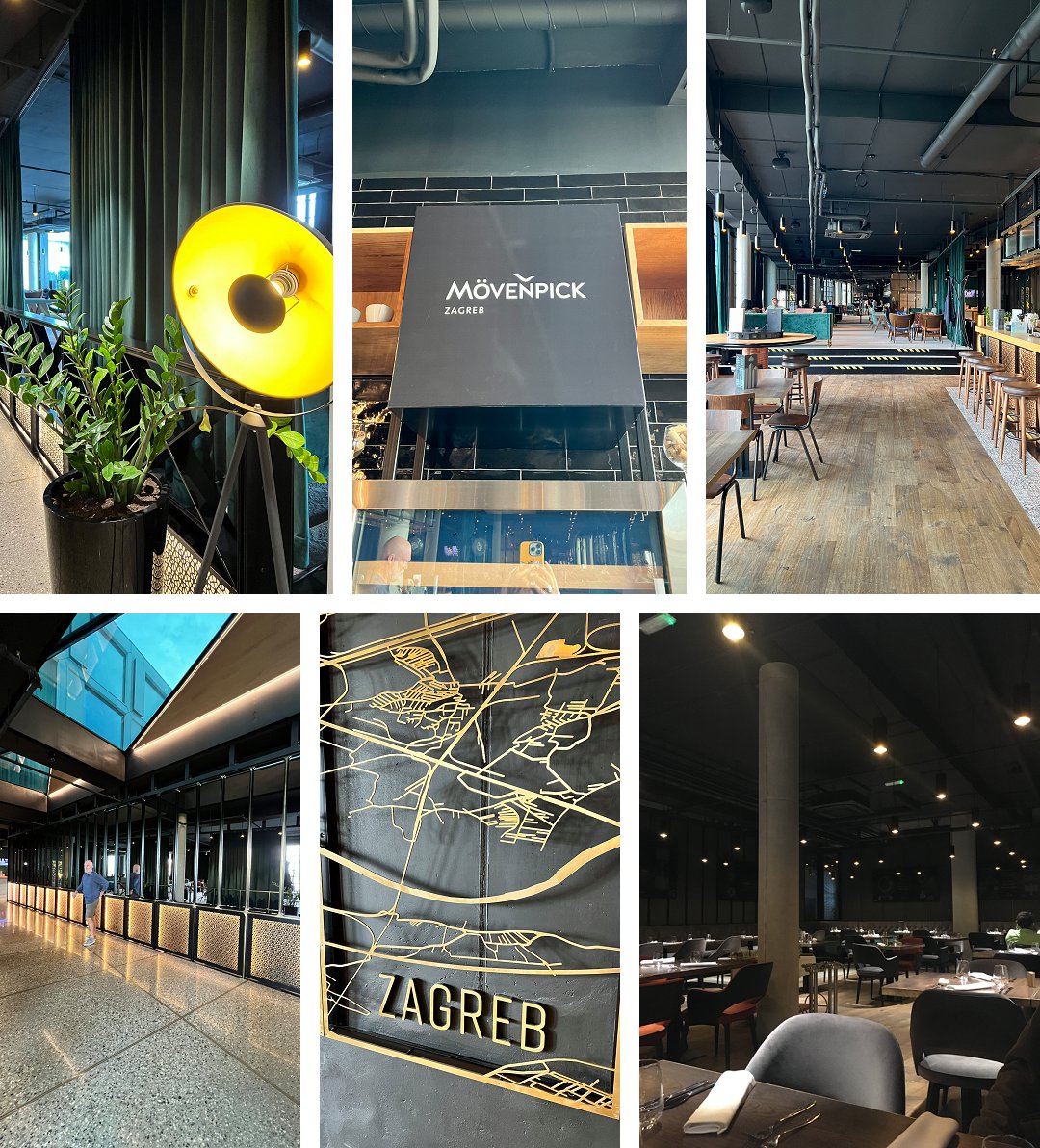
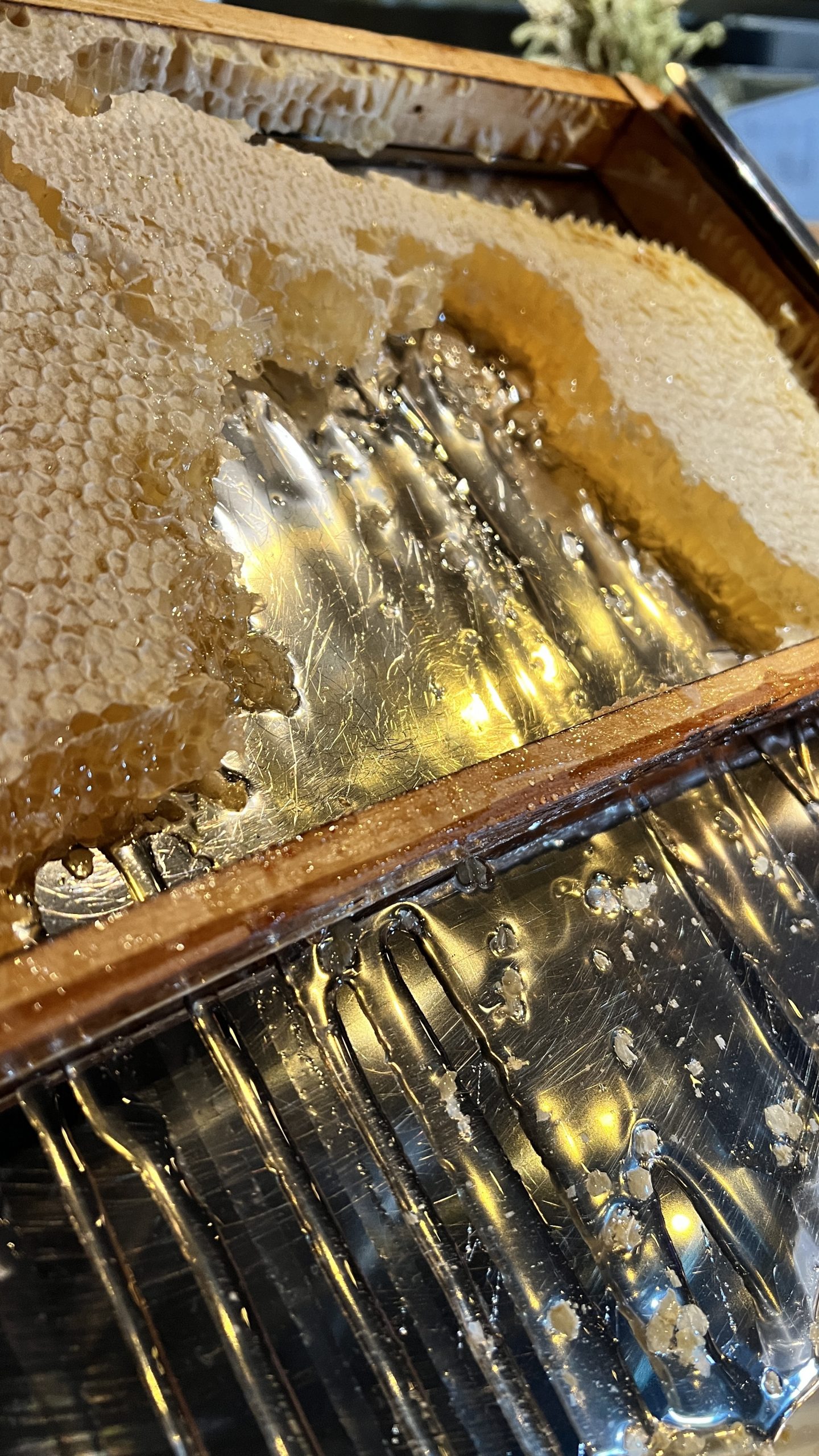
The restaurant, although almost empty on a Saturday evening in early October when we stayed, was of a very high standard. Our evening meal was lovely – well presented and cooked, and everything hinted of understated good taste. Heavy silver cutlery, thick linen napkins, grinders for salt and pepper and lots of olive oils to sample, with the complementary breads. As expected from a hotel which also specialises in a brand of chocolate, the desserts were exquisite. The restaurant was a lot more full at breakfast time, so people may have chosen to go into Zagreb the previous evening, or because it is a hotel which serves the airport, perhaps hadn’t arrived or had departed for flights. The choice at breakfast was extensive, and was replenished regularly – especially the eggs, which I was delighted to see, as I hate cold, rubbery scrambled eggs. And, being a hotel in Europe, where yukky baked beans are just not a thing, no gloopy bean juice in the eggs. There is certainly sufficient on offer to set yourself up very nicely for the day, and all again, was high quality produce. I especially liked the honey. A very nice touch.
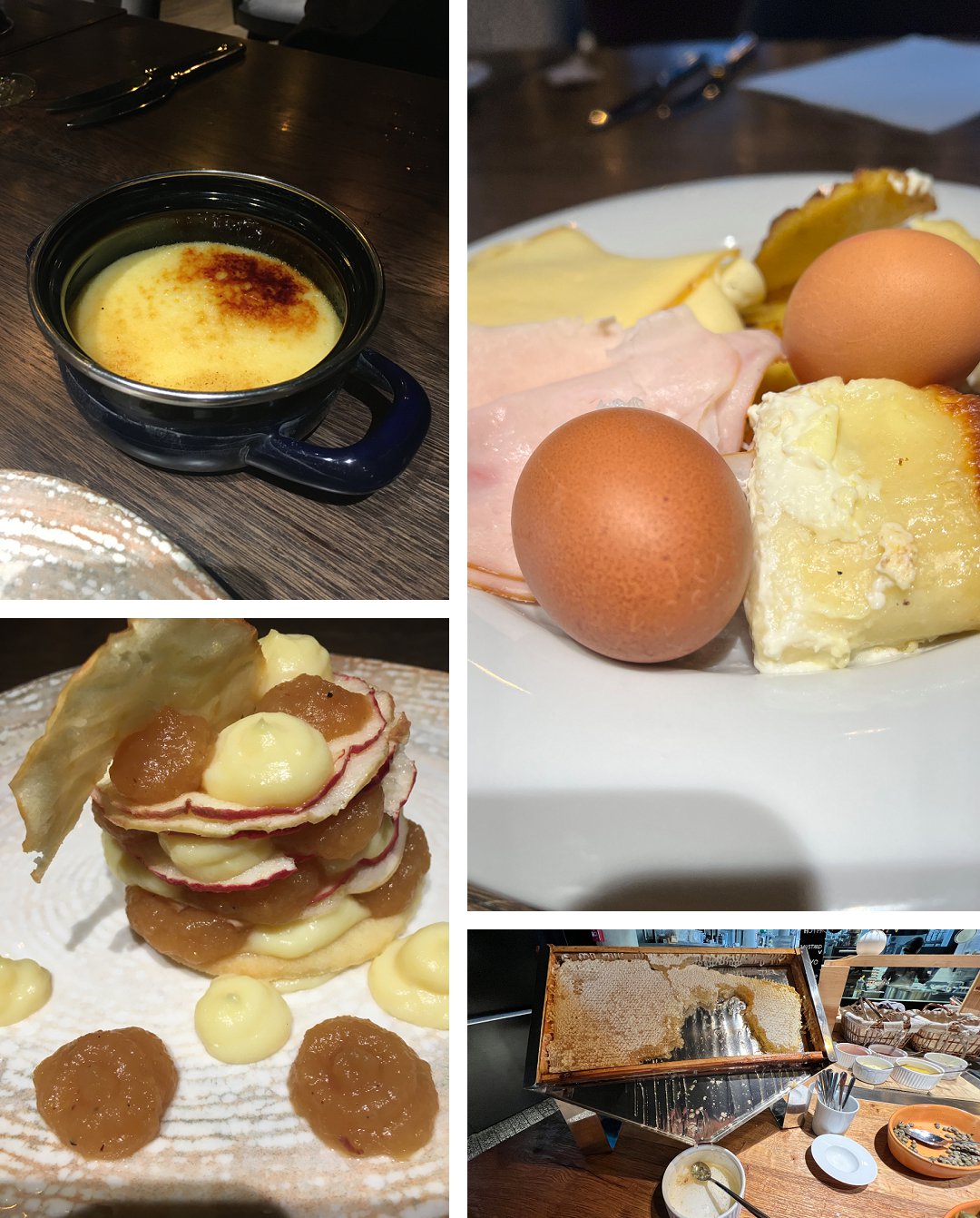
If you are ever flying in and out Zagreb, I’d definitely recommend the Mövenpick, as it’s hassle free and for a good rate, provides quite a luxurious experience. And, I imagine even more so, if you caught the Chocolate Hour…
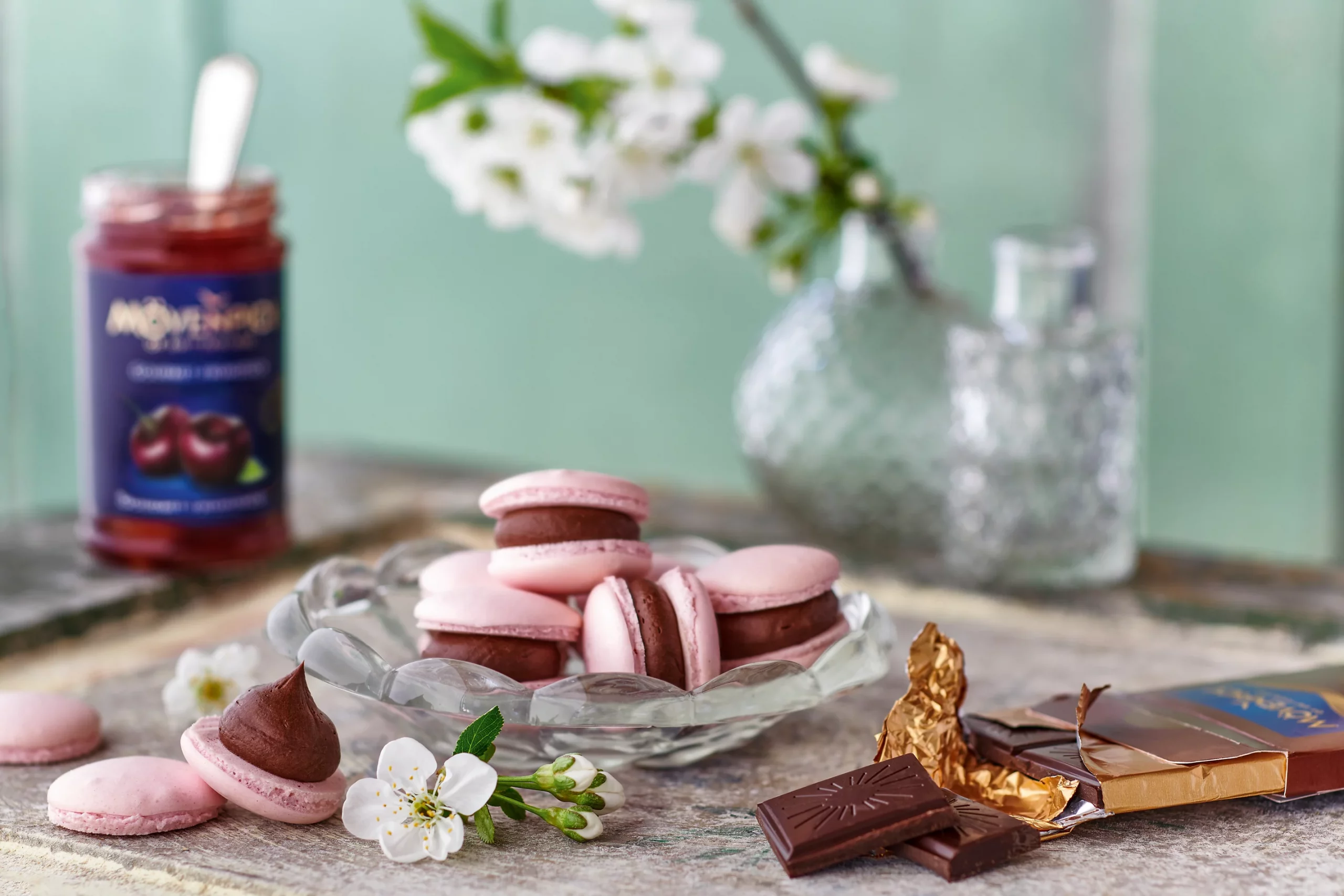
Chocolate Hour Photographs : Movenpick Hotel Website
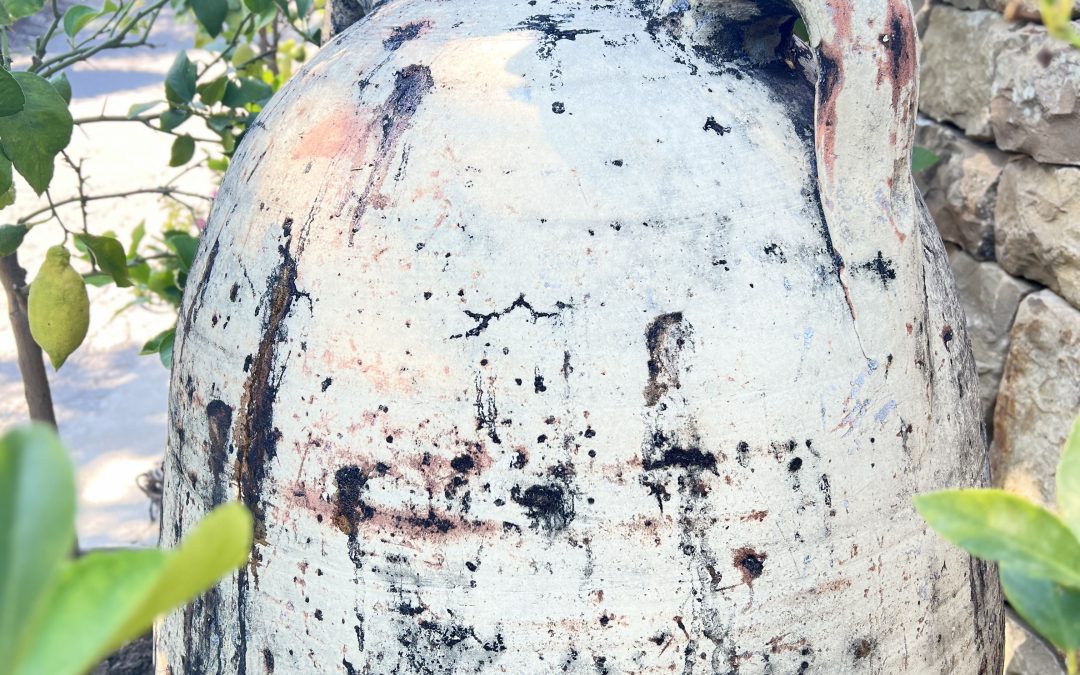
by Helen | Dec 13, 2023 | Lifestyle
I love a good rummage around an antiques market. I dream of living in a village with a brocante. But I’m just not very good at bartering and securing a bargain. The last time we were in Ljubljana, the Sunday Market was on, along the river. I think this was my most successful bartering exercise ever, as I managed to buy two old zinc planters and negotiated a whole 10€ off the price he gave me initially. What I paid was probably he wanted anyway, but I still felt like I’d secured the bargain of the century. But, as I say I’m not a seasoned bargain hunter – and we don’t really have places here, where I can hone my skills. Or, so I thought until recently. Maybe I’ve just been walking around with my eyes closed, but this summer, we did discover some very rich pickings, and so maybe I can practice and become a better bargain hunter.
In Istria, it seems that there are two accessories which are mandatory in any outdoor space – big glass demijohns and greek style urns. Every self respecting garden and outdoor space, has a least one of these, if not multiple versions. And, this summer I finally found out where these Istrian must-haves can be found.
Right on our doorstep…
That’s right, within a few kilometres of the house, we have discovered a couple of real treasure troves. These will most likely be known to everyone in these parts, but as we’ve not found them before, I feel that I have uncovered a secret. A secret full of antiques…
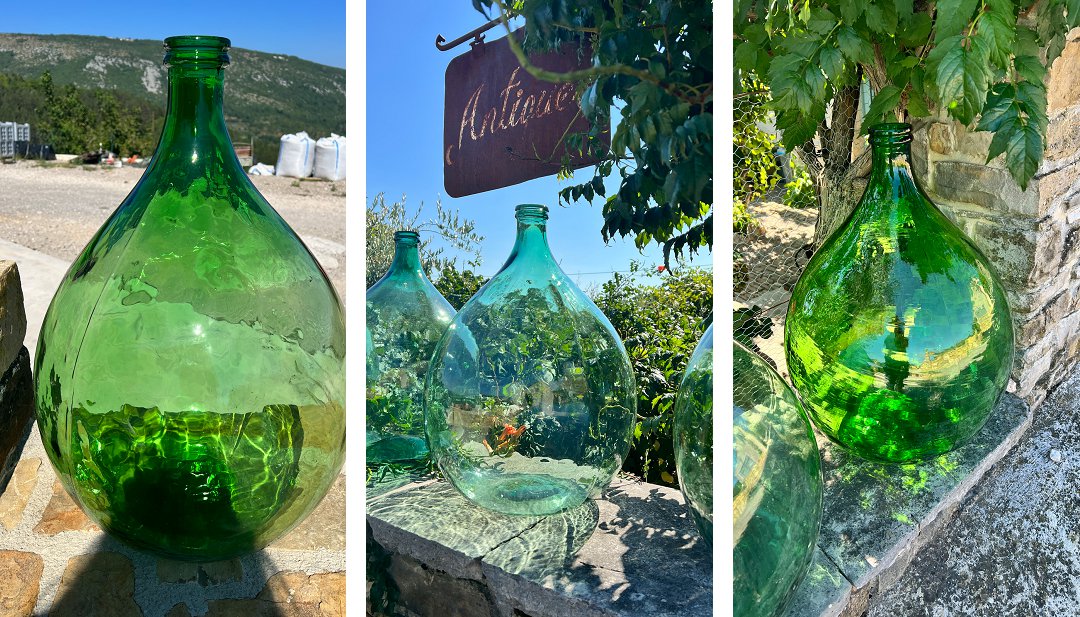
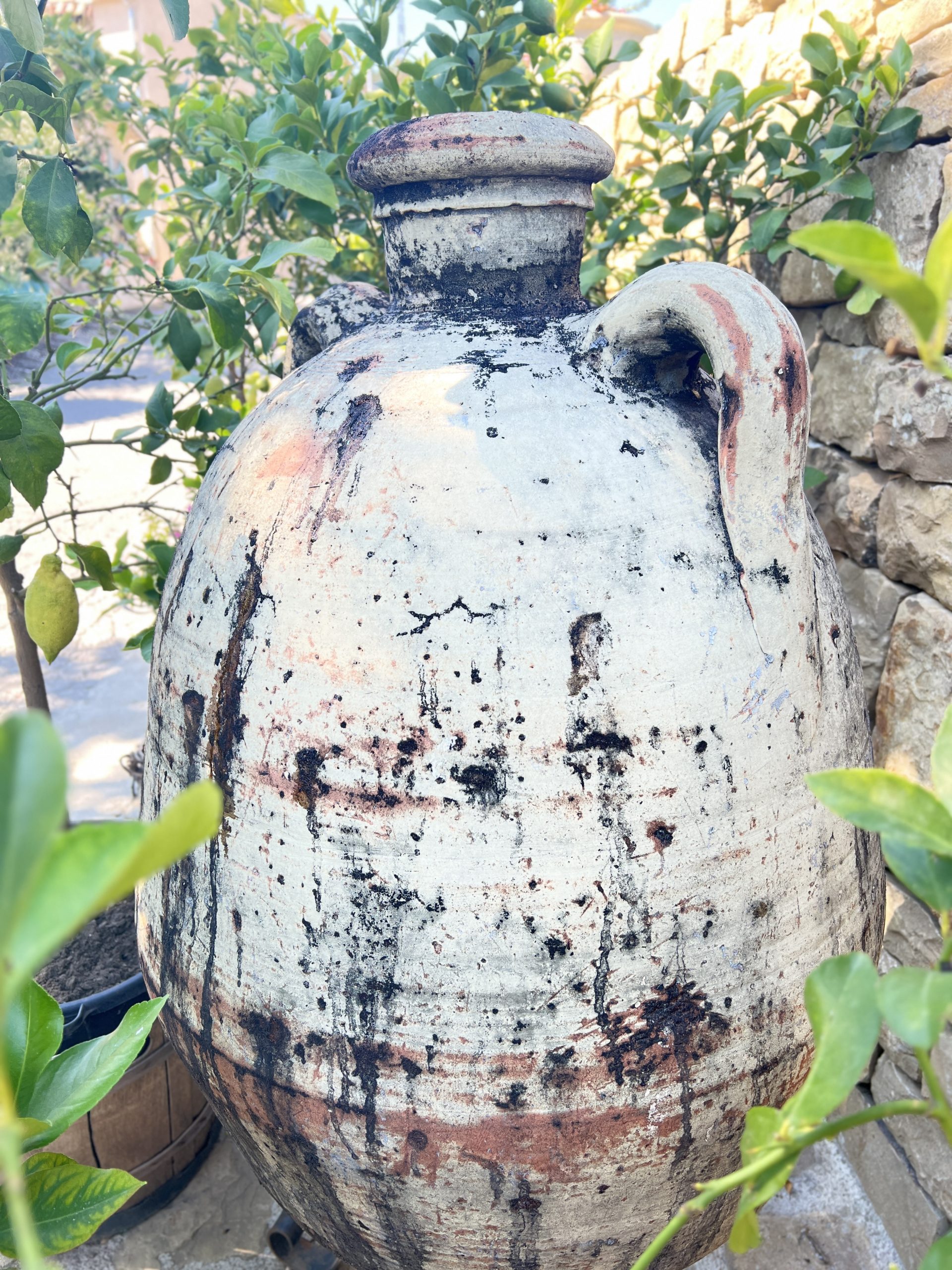
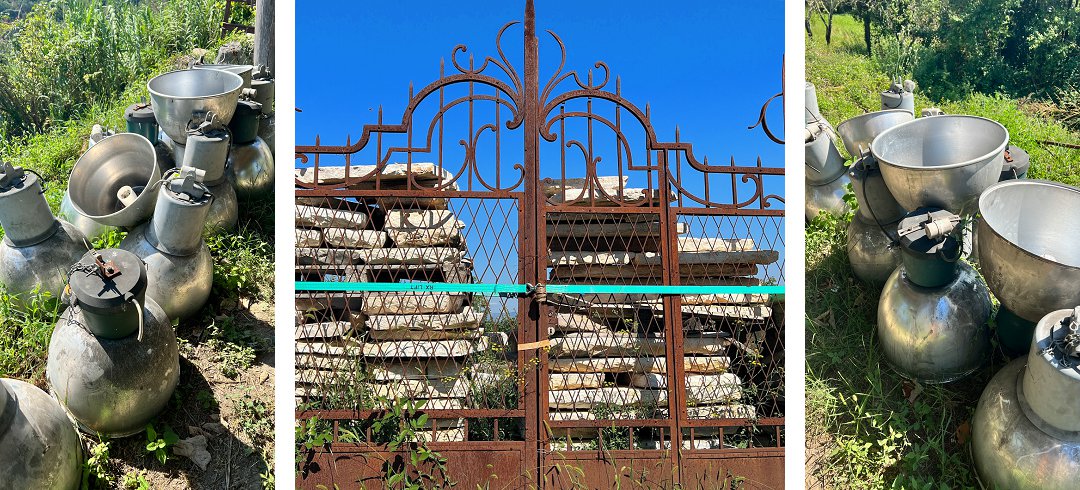
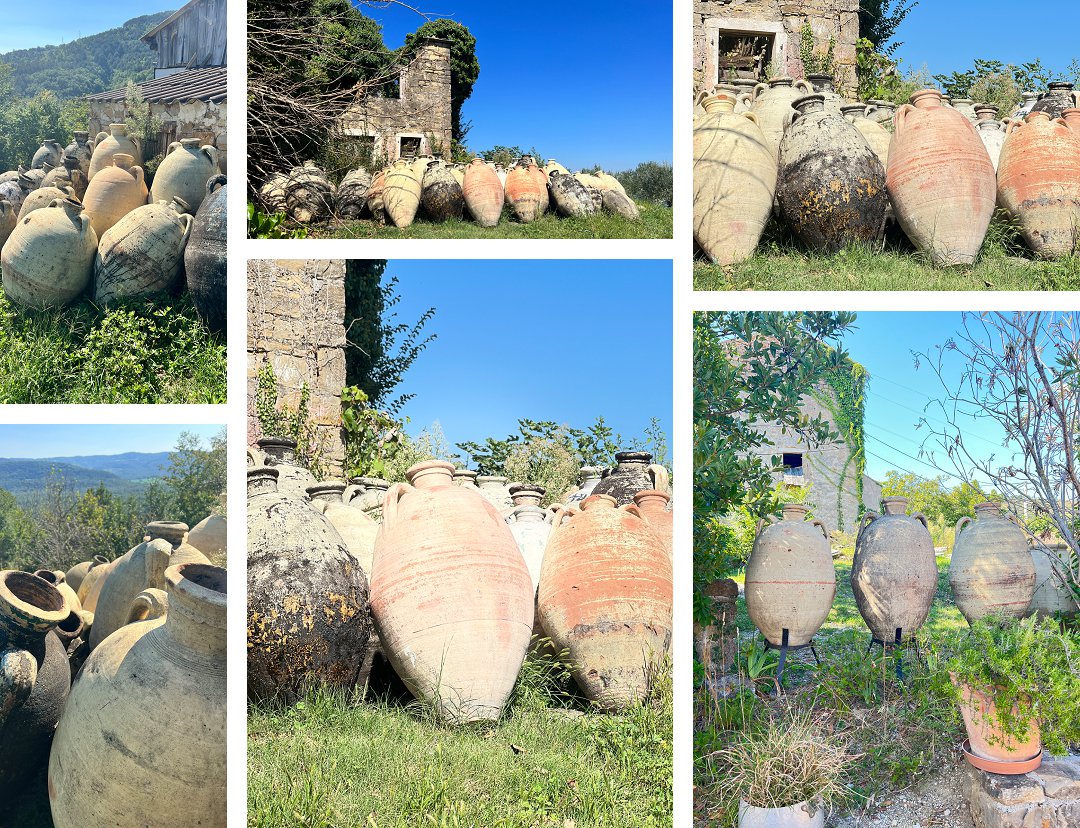
This is typical of Istria. These beautiful urns, and demijohns and industrial vintage light shades, are all just stacked up outside the antique seller’s property. They’re not taken in and kept under lock and key, because there’s no need. Because no-one would ever think to just grab a few and drive off. Because honesty is held above all else out here. It’s one of the things we absolutely love about where we live.
The urns are absolutely stunning and I am still mulling these over – as beautiful as they are, they are also expensive, so I think I have to be absolutely sure that our garden really, really needs one. Or, two…
But the demijohns are much more affordable, and so we do have three of these. Because I couldn’t decide on the shade of green I wanted, I decided that a mix of shades would work. And now, they are sitting prettily on our little balcony, out of the way of the winter winds, so we can see them from the living room. I love them so much, that I may be tempted to add to the collection, come the spring.
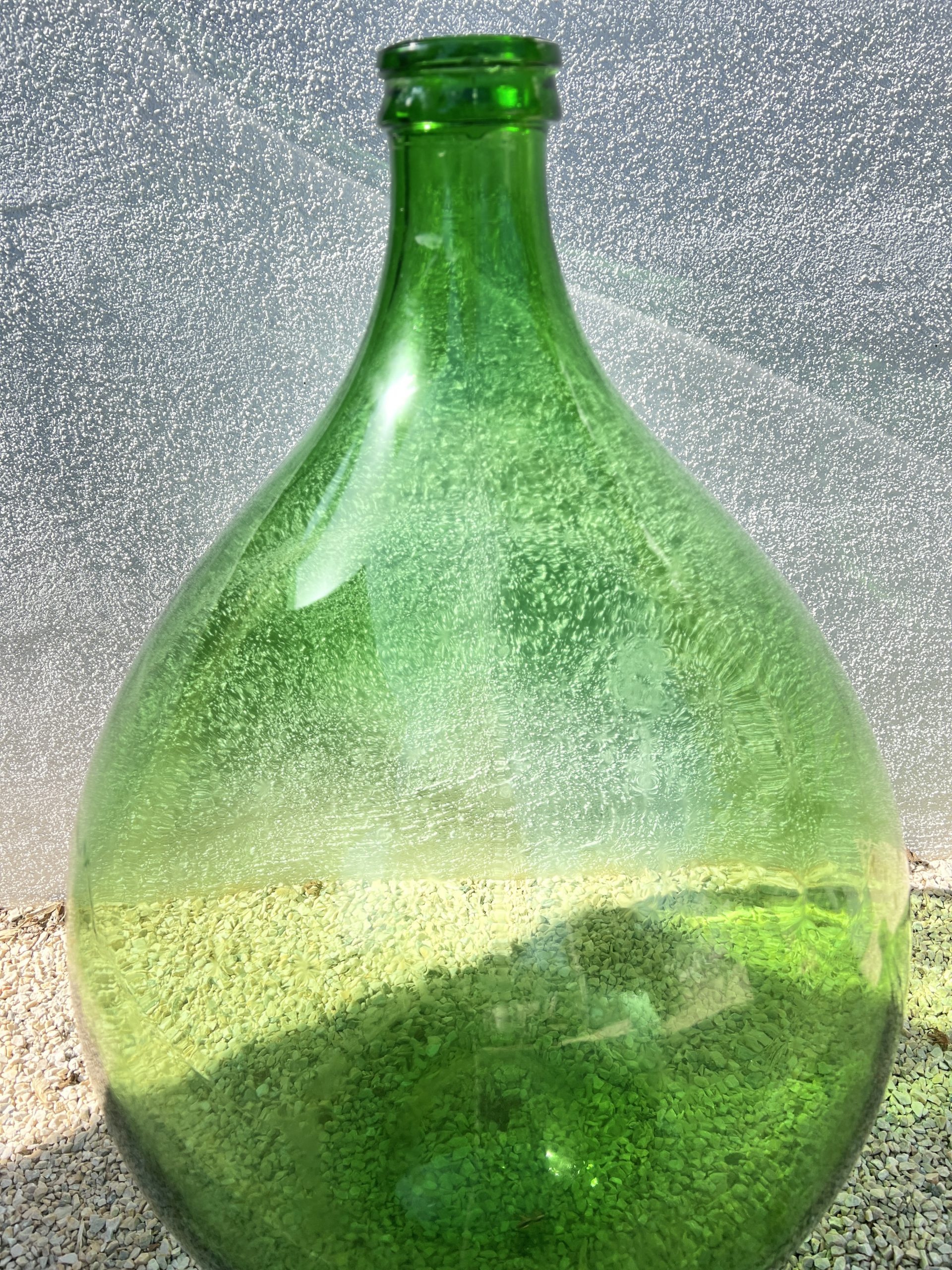
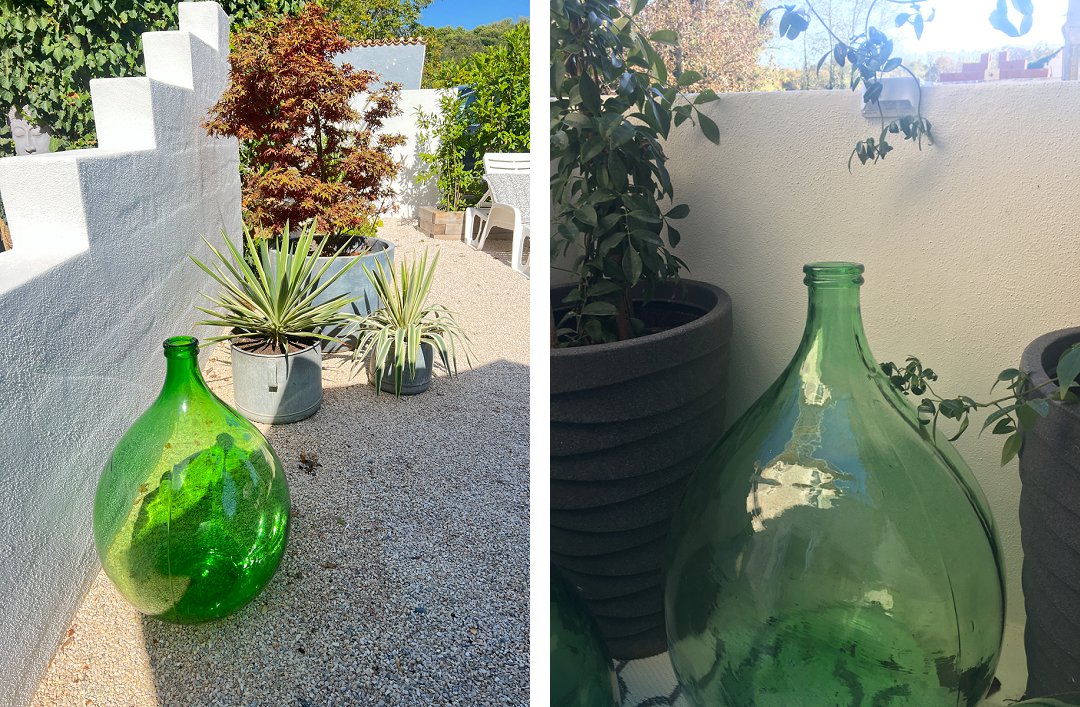
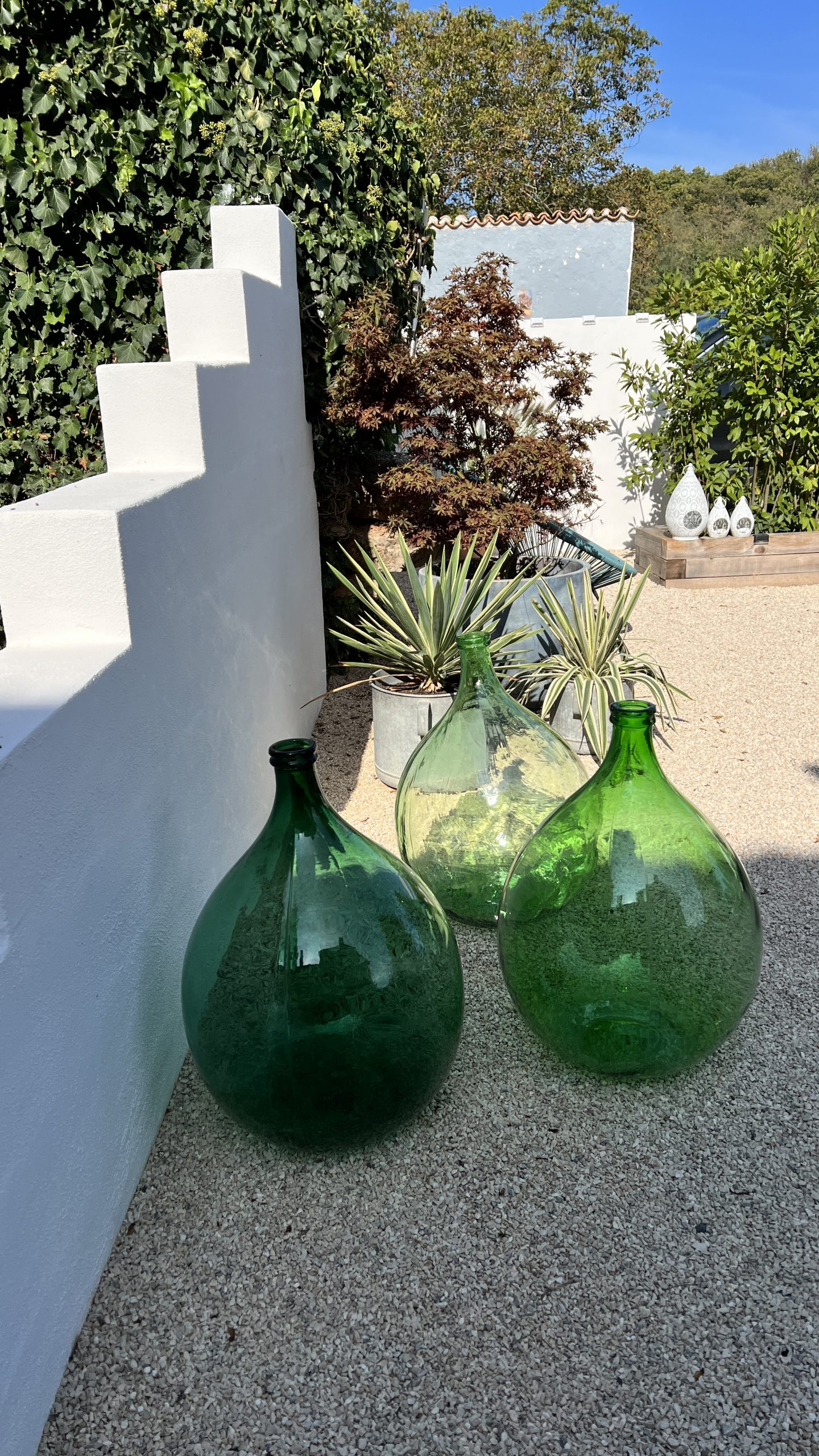
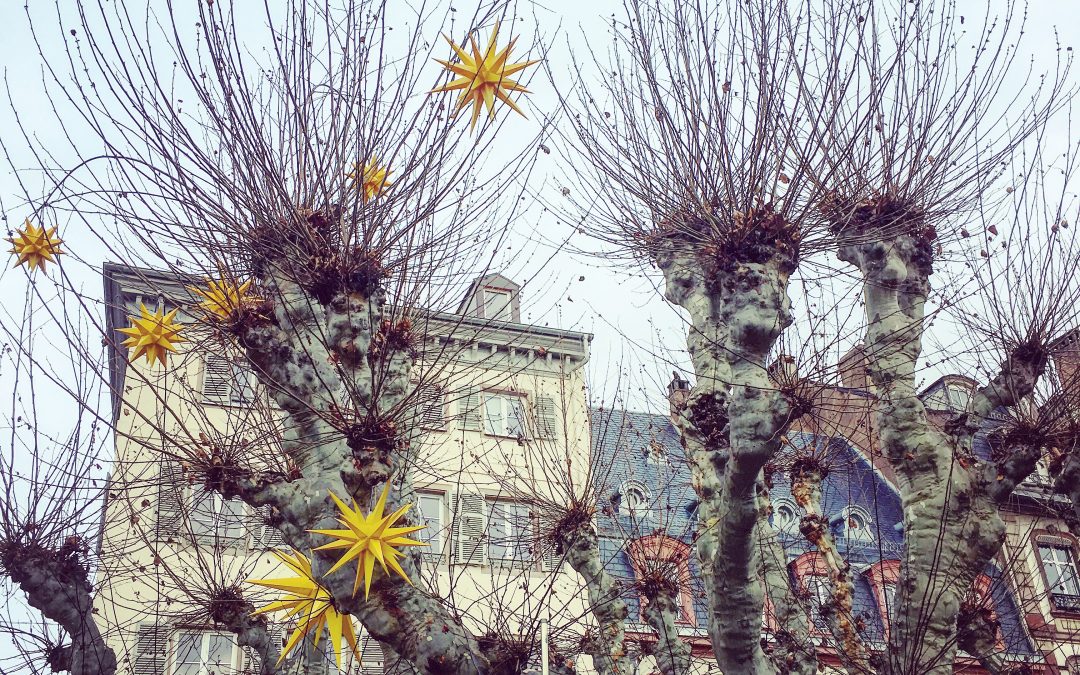
by Helen | Dec 12, 2023 | France, Travel
Strasbourg, frequently named “European capital”, is a city in eastern France in Alsace on the left bank of the Rhine, playing a major role as a business, commercial, and cultural centre. Besides its traditional role as the chief city of Alsace, Strasbourg is also the seat of a number of European institutions and bodies including the European Parliament, the Council of Europe, and the European Court of Human Rights. And these are the things I knew Strasbourg – until we visited it, one chilly day in January, on our road trip back from the UK to Istria. Long after Christmas had ended for most people. But not this city, known as…
…the capital of christmas
Now, I’m not a superstitious person, but I do like to have my decorations down well before the 6th January. Once New Year is done, I like the idea that spring is just around the corner, and so I want the house to feel less cluttered and more spacious. Christmas decorations are all lovely and make the house cosy, but they do have a sell by date, and after a week or so of twinkling lights, I want a bit of minimalism back. Well, it’s a good job I don’t live in Strasbourg, because however pretty it is, the ongoing display of festiveness would really do my head in. We stayed over between the 12th/13th January, and the city was most definitely still in the Christmas mood, in the medieval centre…
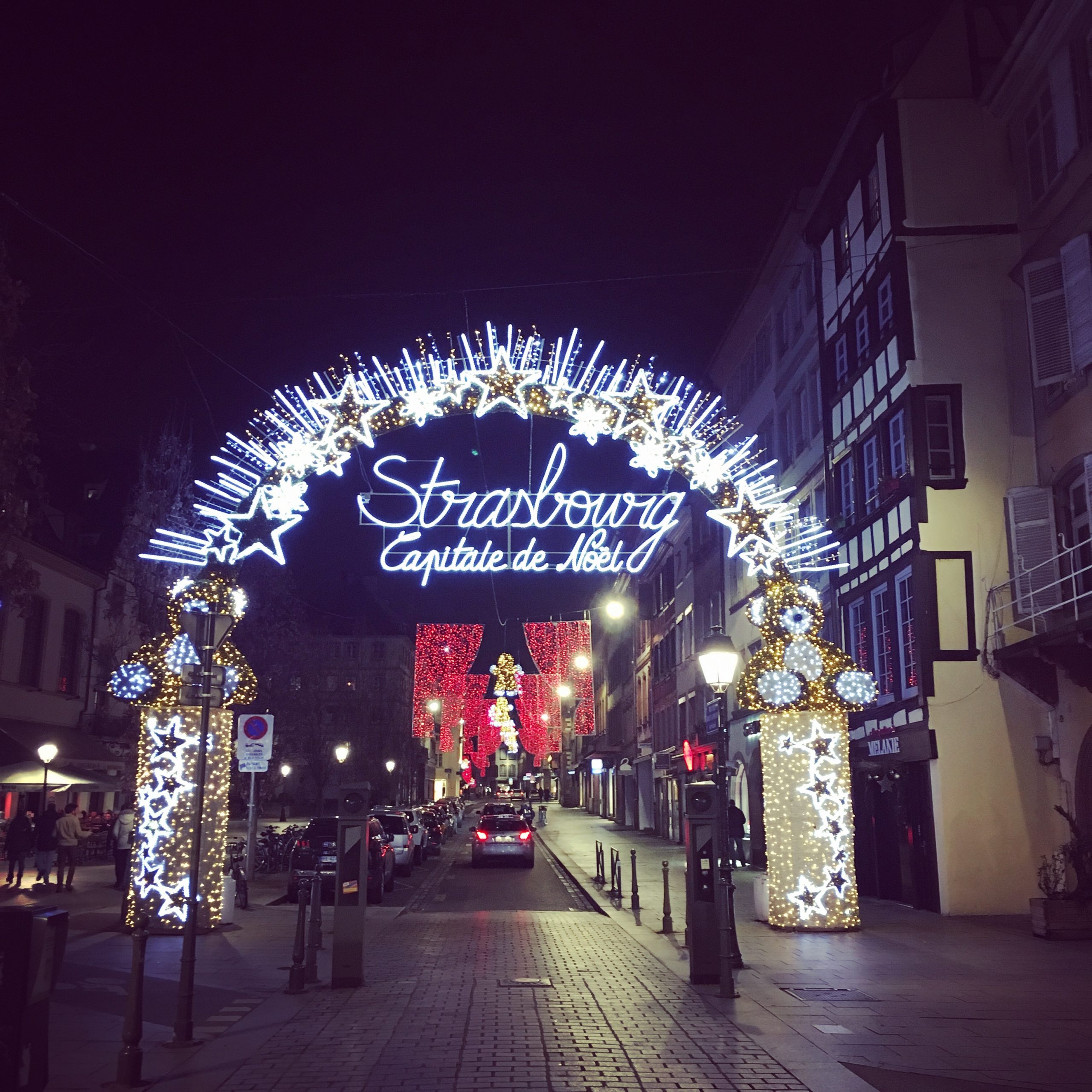
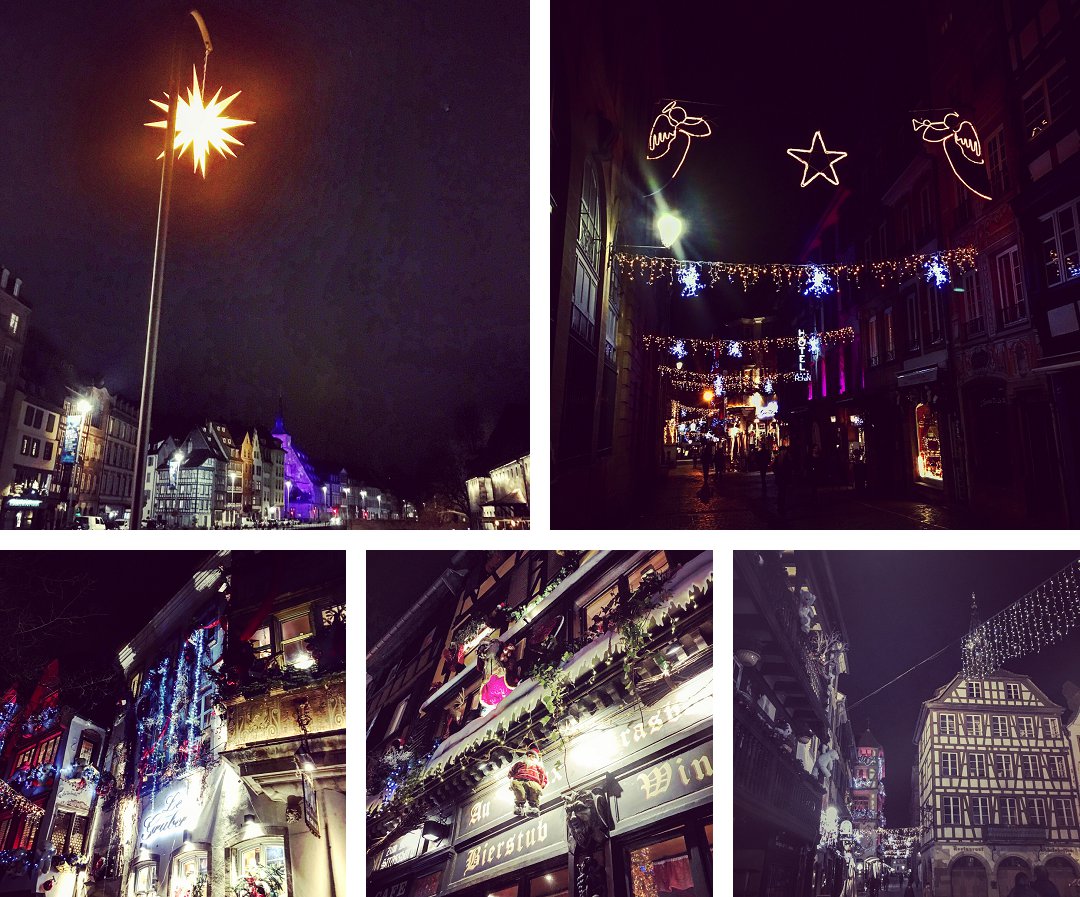
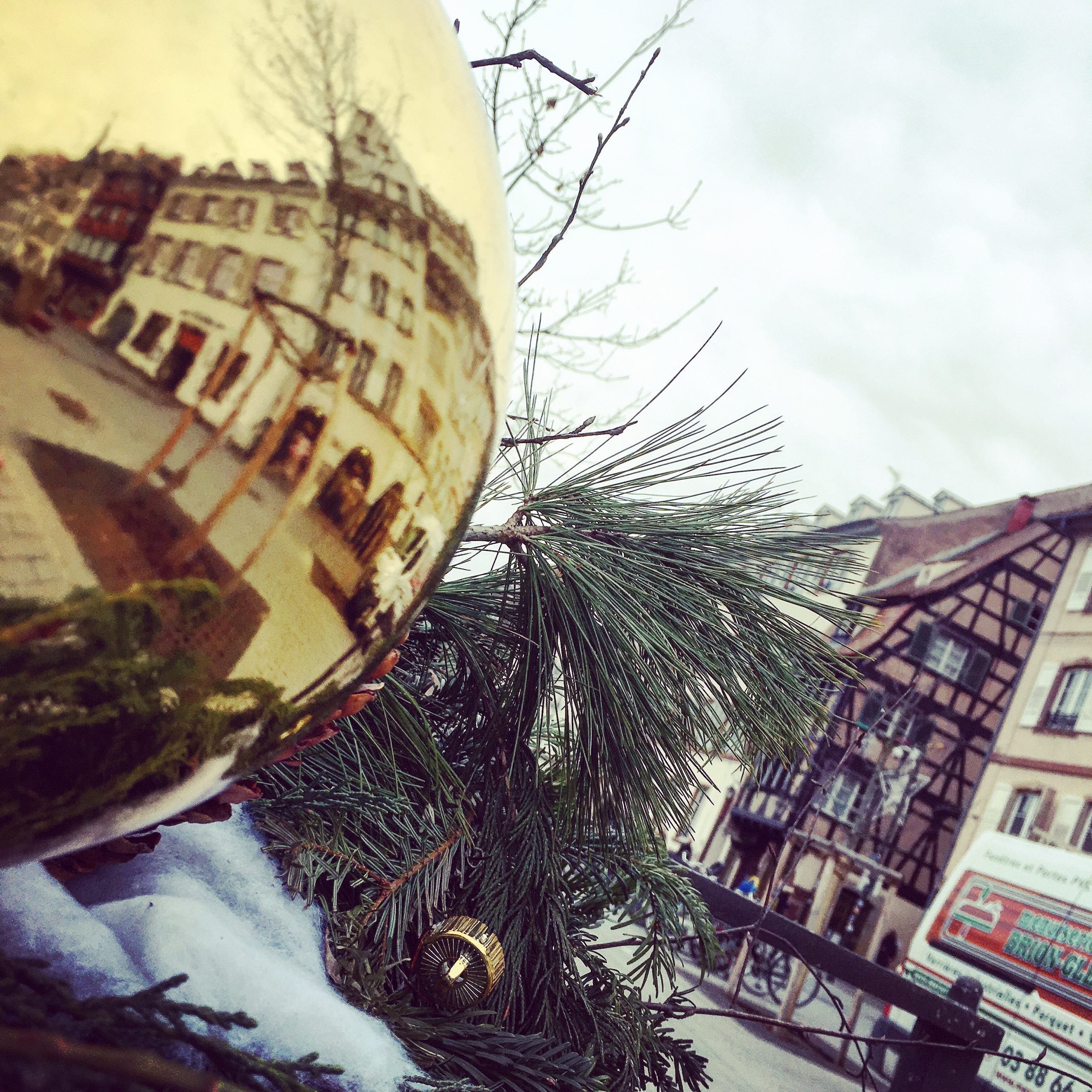
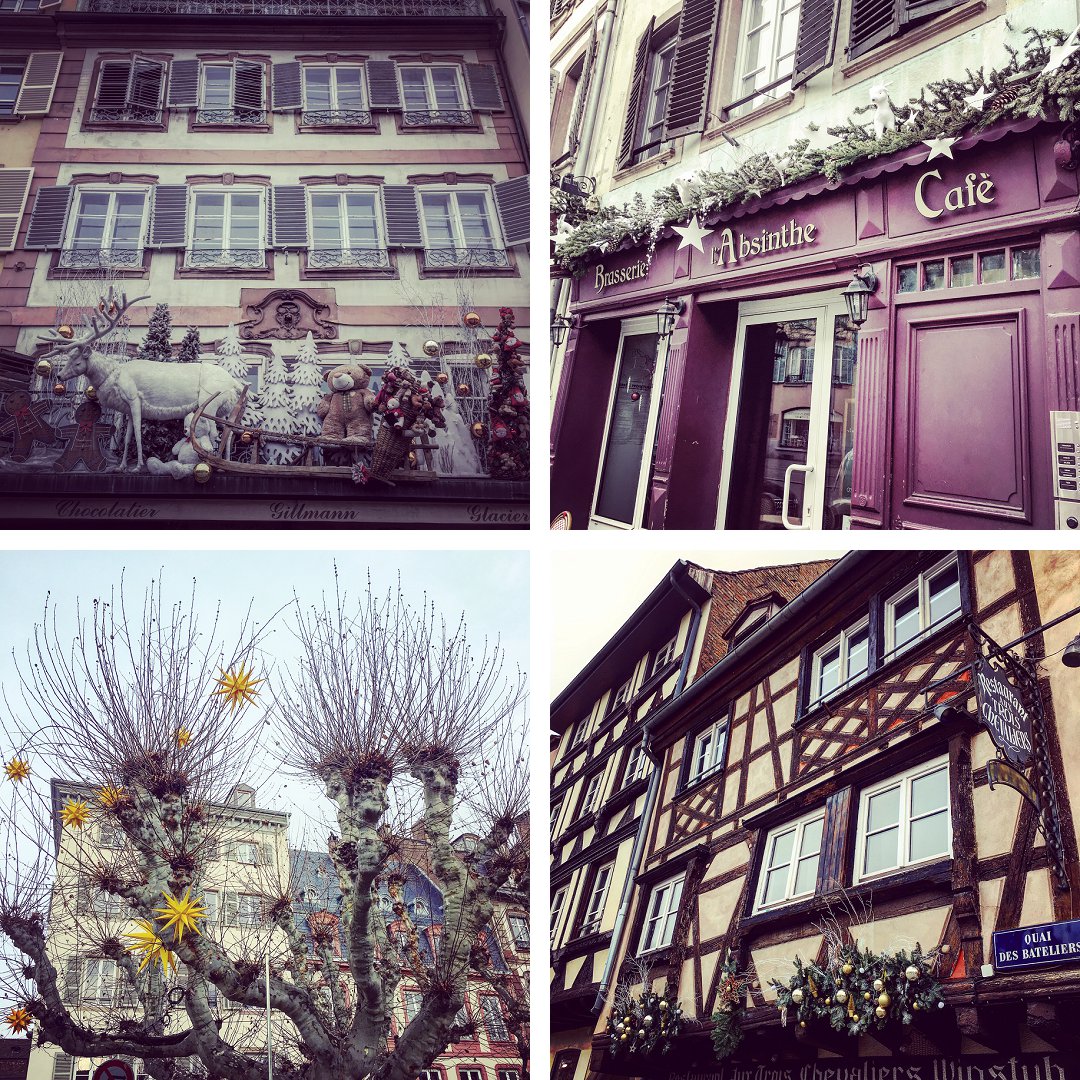
Perhaps the most visited part of Strasbourg – apart from probably the Markets – is the Carré D’Or Area, a little neighbourhood, not too far from the Cathedral, and if you LOVE Christmas, you’ll love this area. The streets here are fully decked with glittering light strands to greenery on doorways and teddy bears, polar bears, penguins, nutcrackers, and glittering stars and garlands above the shops.I found it all a bit too over the top for me – but that’s the point I guess…
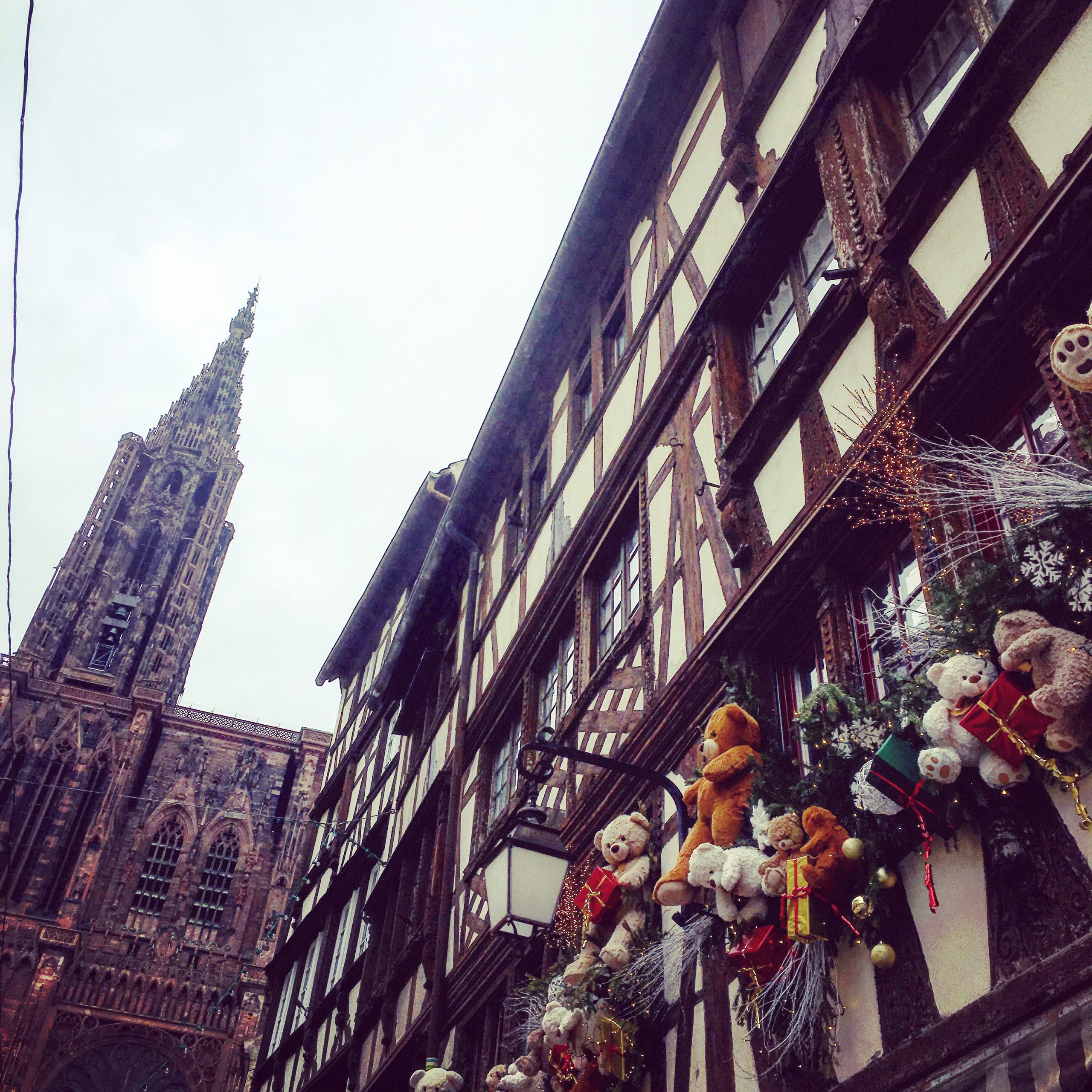
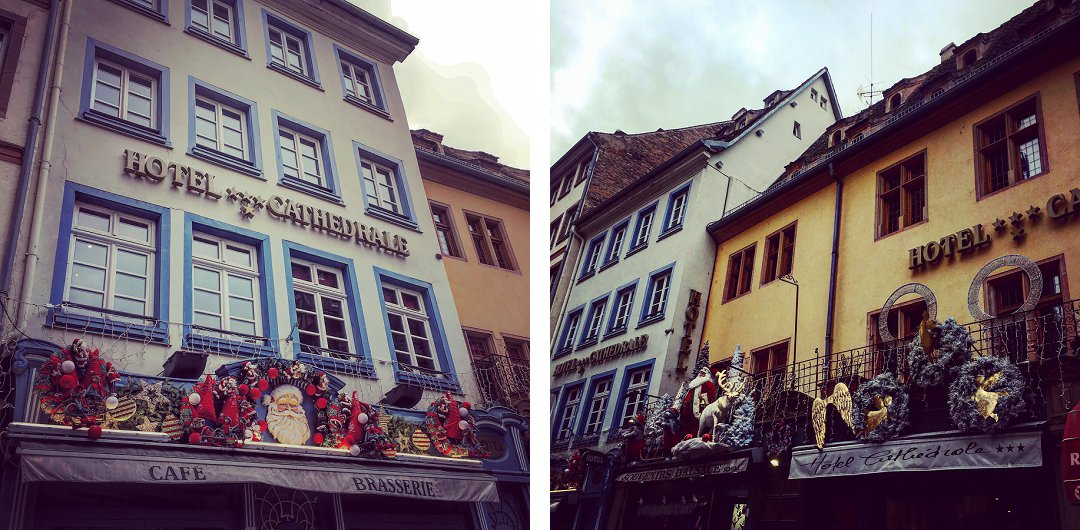
Strasbourg Cathedral – Cathédrale Notre-Dame-de-Strasbourg – is an outstanding masterpiece of Gothic art. The construction of the Romanesque cathedral, of which only the crypt and the footprint remain, began in 1015, and the spire of the current building, in a Gothic style, was completed in 1439.
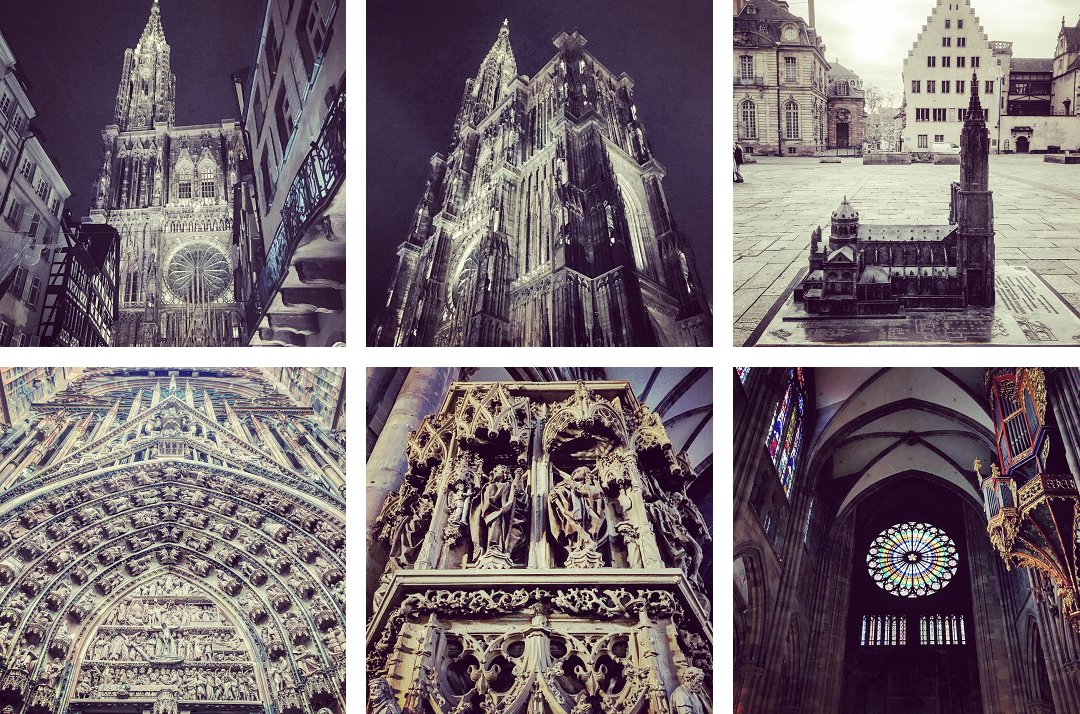
It really is an astonishing structure – and when you’ve had enough of teddy bears and tinsel and glitter, I’d really recommend that you explore this building, if just to see the astronomical clock, which dates from 1843. It is the third clock which has occupied the spot, the first being built in the 14th century and the second in the 16th century when Strasbourg was a free imperial city of the Holy Roman Empire. The main features of the current clock are a perpetual calendar, an planetary dial, a display of the real position of the Sun and the Moon, and solar and lunar eclipses. However, the main attraction has to be the procession of the 18-inch high figures of Christ and the Apostles, which occurs every day at noon, while the life-size cockerel crows three times. It really is pretty spectacular.
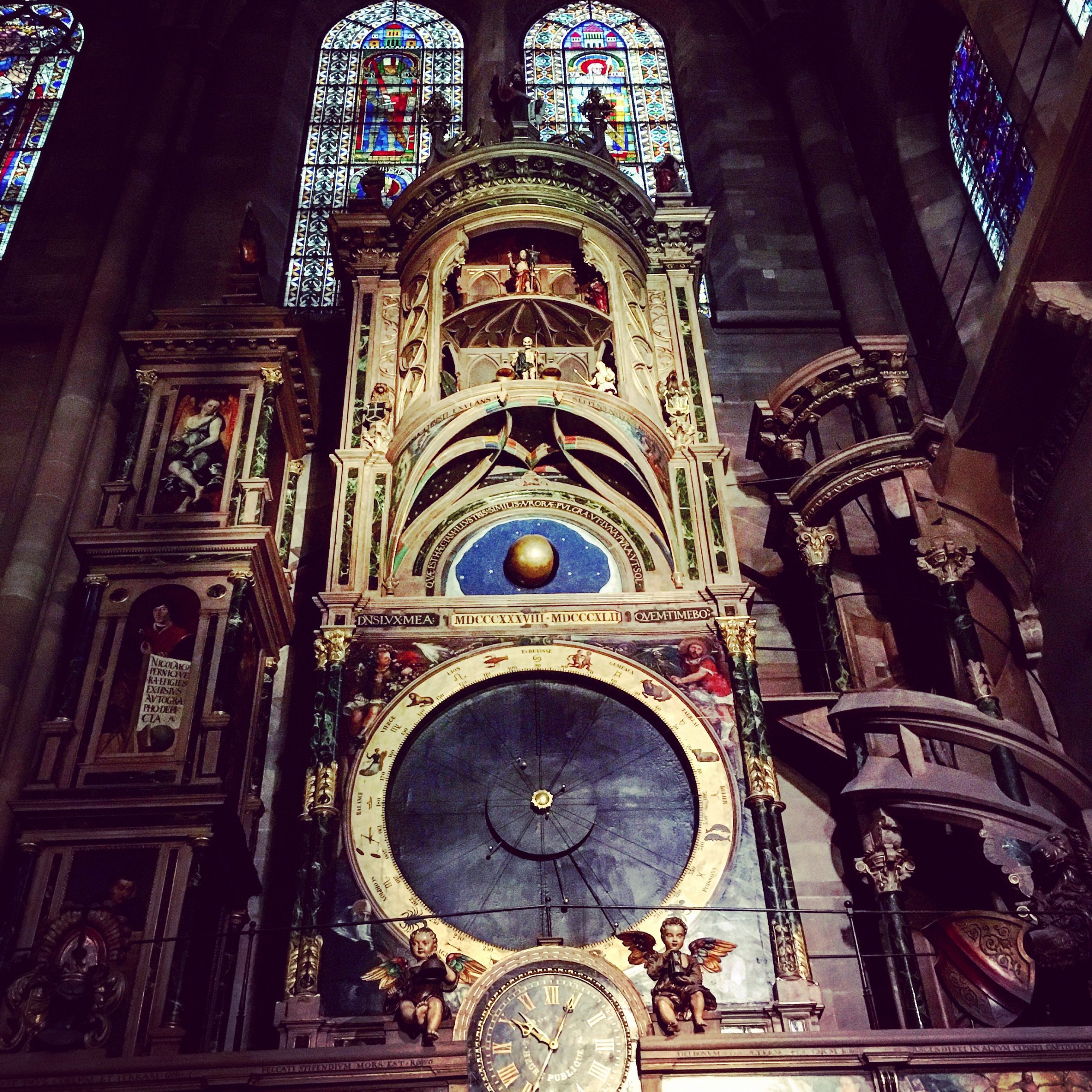
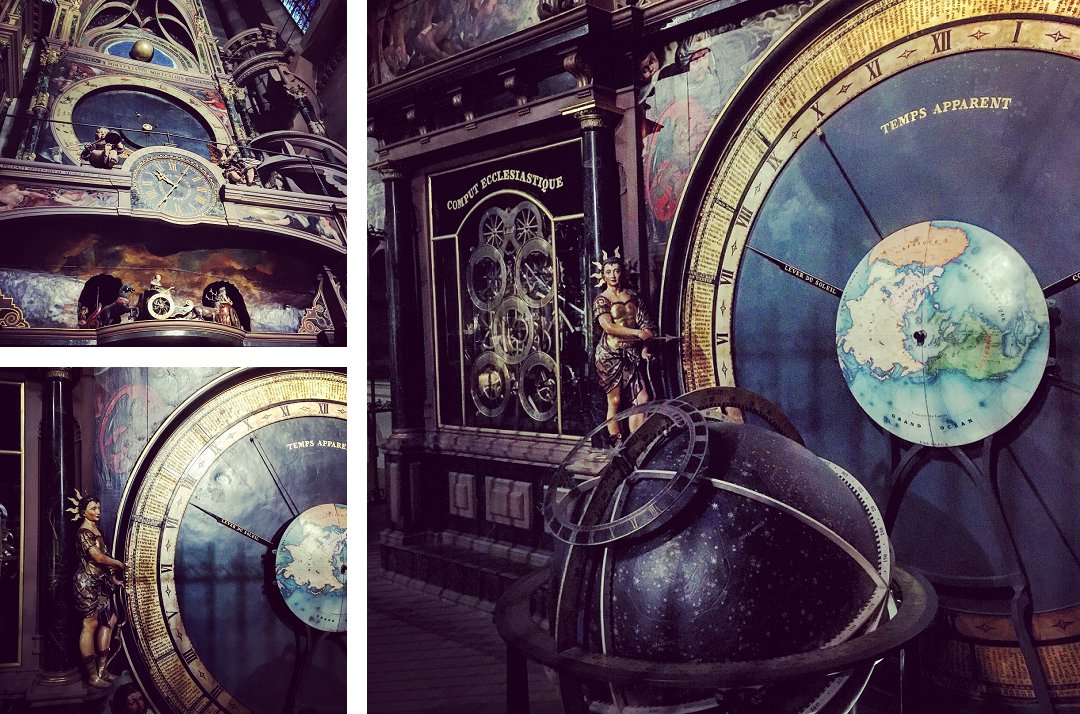
There is so much more to take in besides the Astronomical Clock, but when we were there, it was still Christmas all the way…
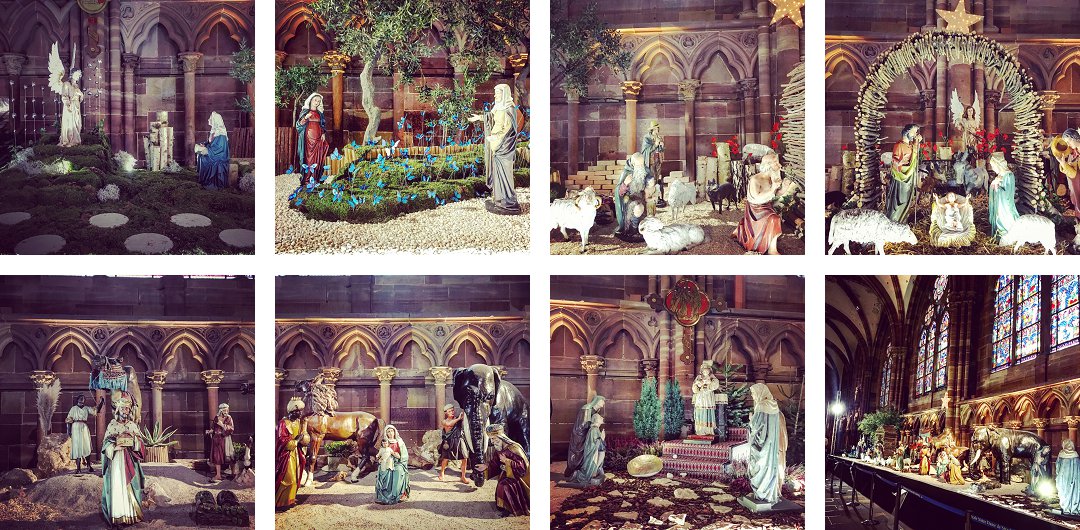
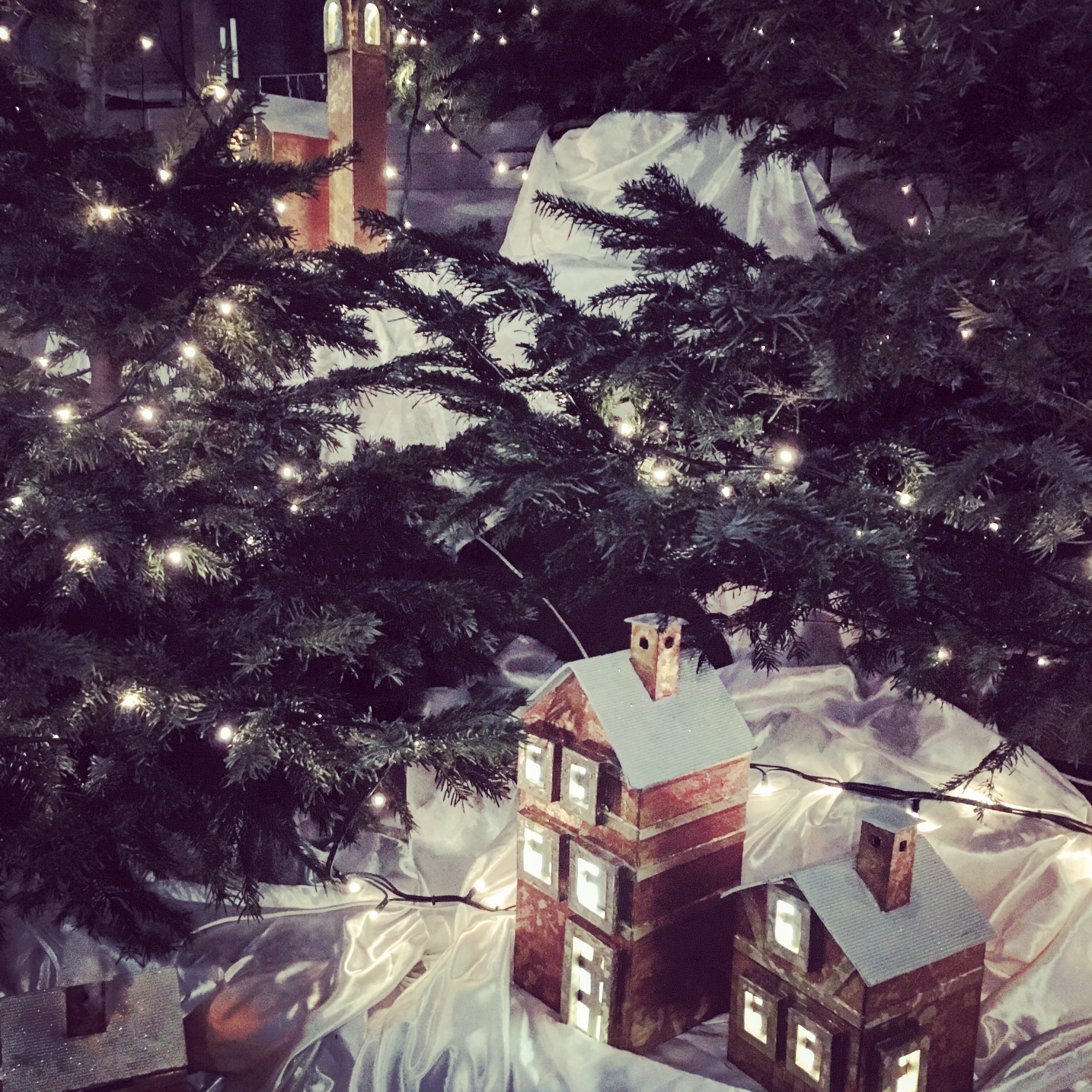
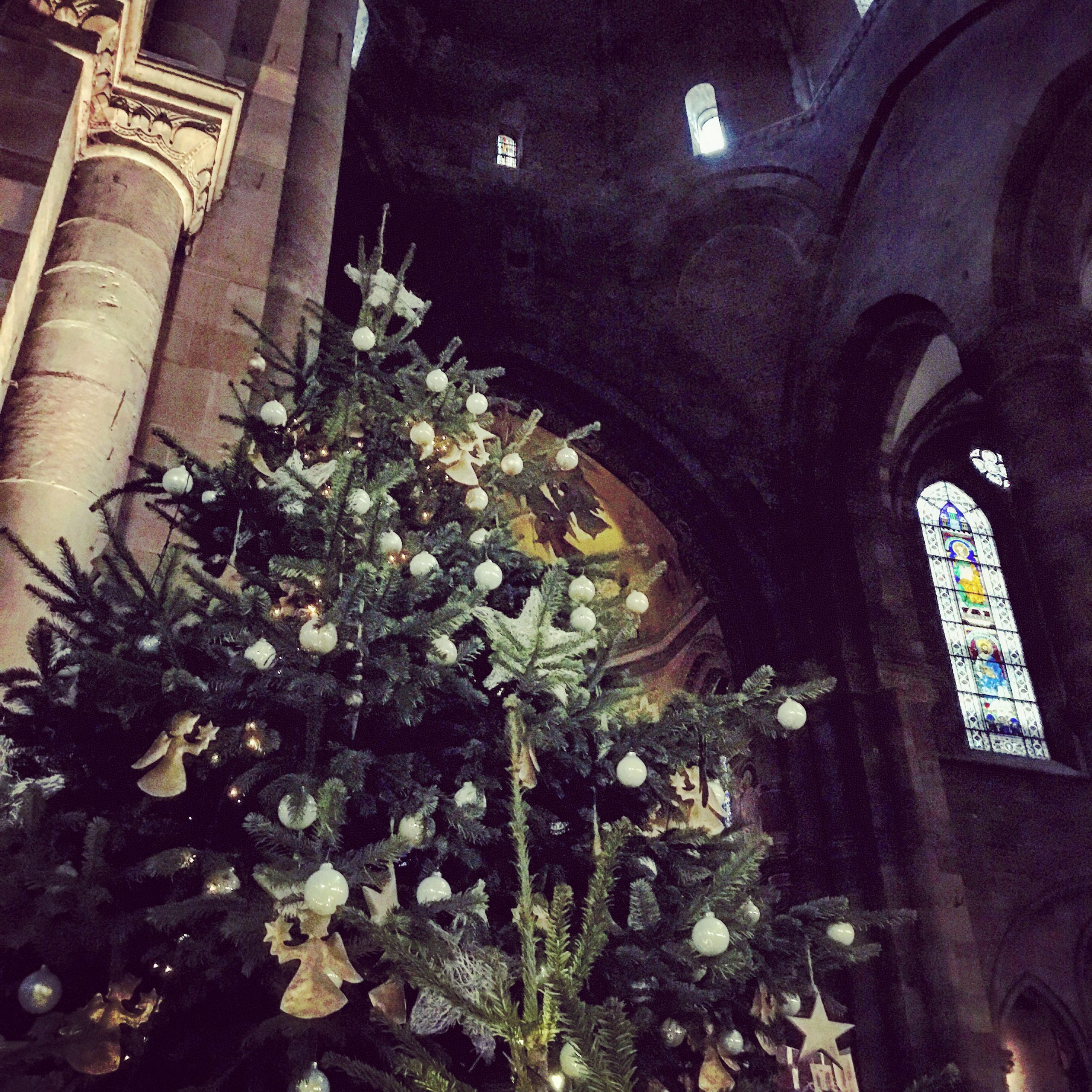
Strasbourg also lays claim to having the oldest Christmas markets in Europe. Dating back to 1570, the famous Christkindelsmärik, appears to work its festive magic every year, as the visitors just keep coming. With a medieval centre, you can expect to find an old building or two – such as La Maison Kammerzell, which is said to be the most beautiful house in Strasbourg, and certainly one of the oldest. Built in 1427, and elaborated in the 16th century, it takes its name from its 19th century owner, Philippe Kammerzell, who was a grocer. It has quite the stunning location too, nestled just underneath the Cathedral.
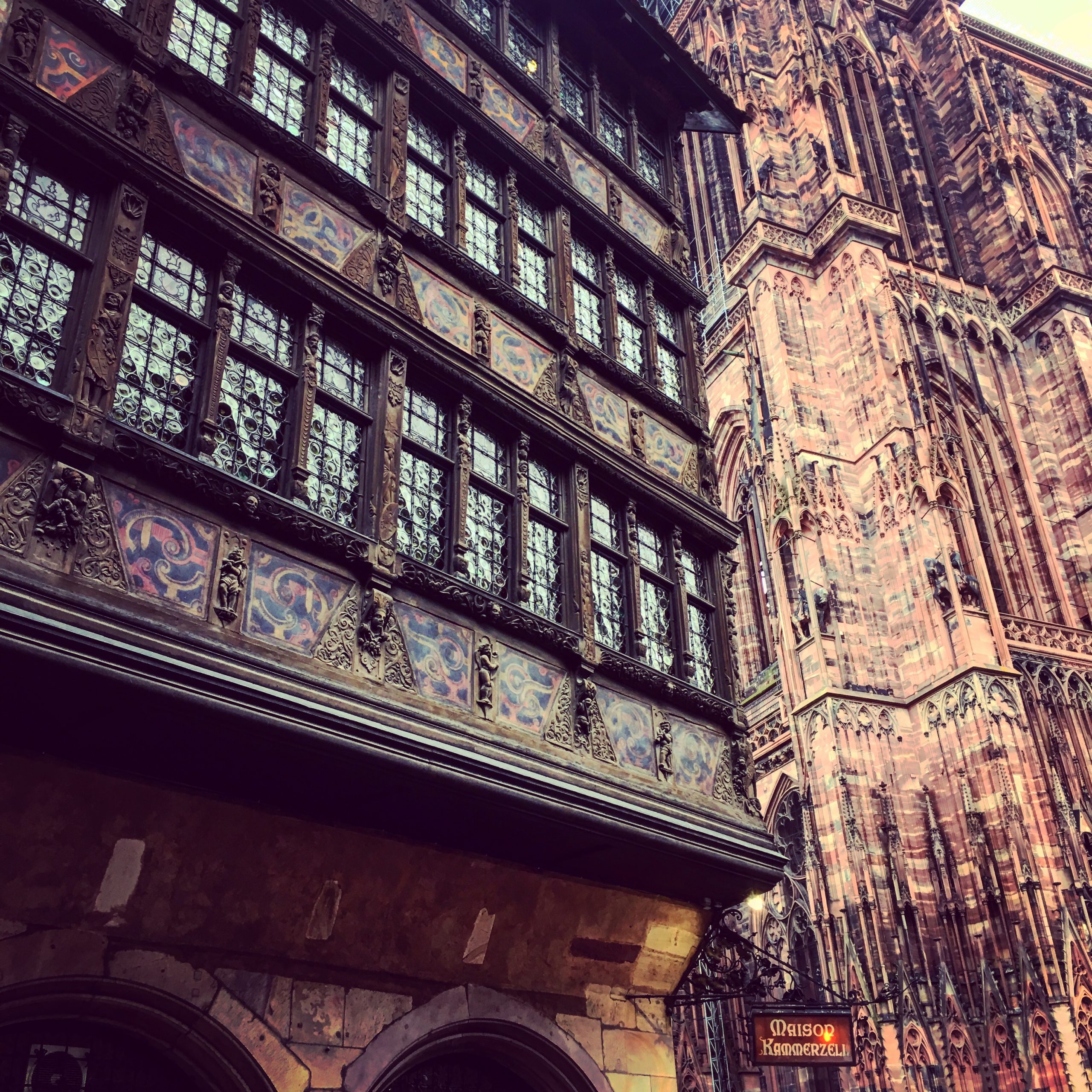
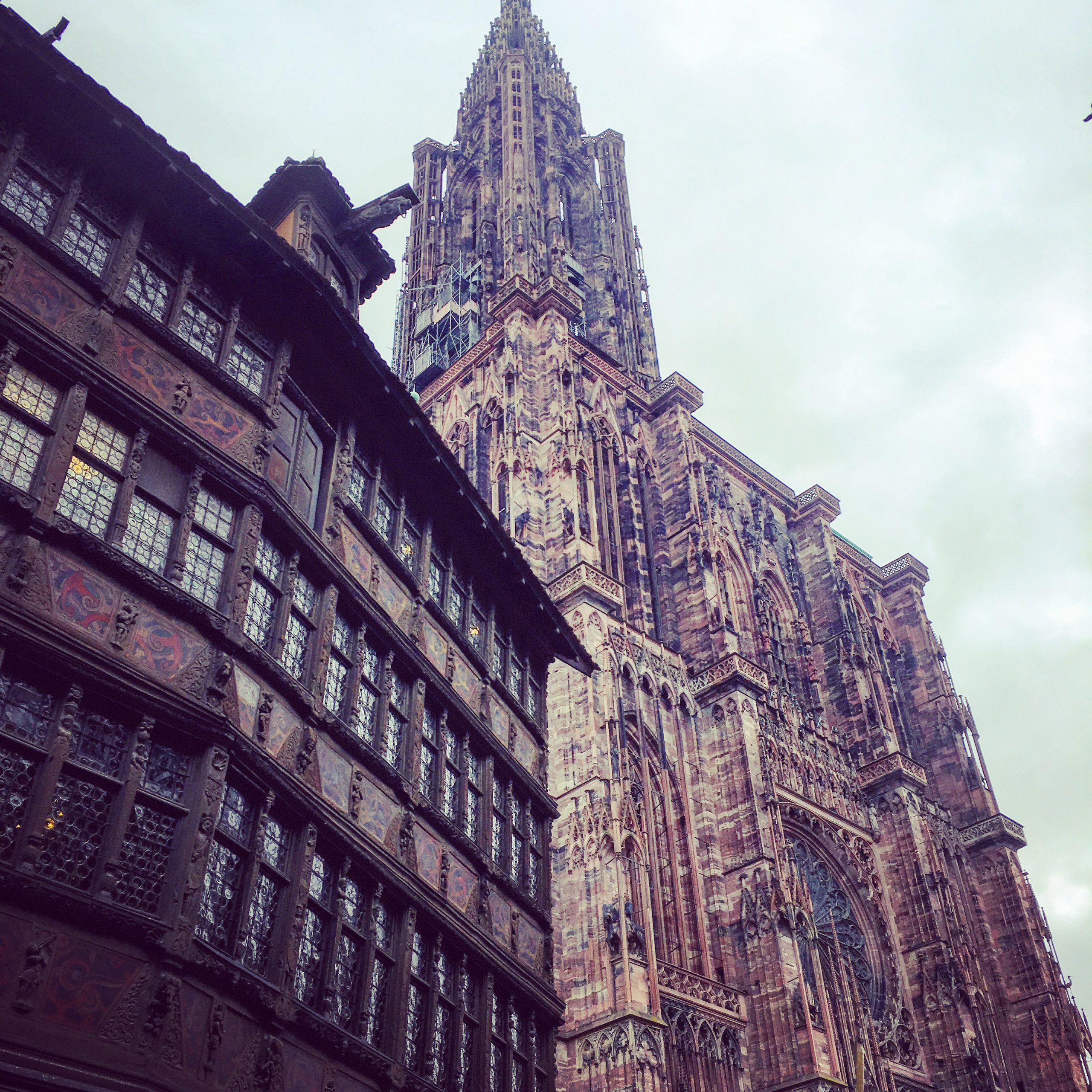
We found the most gorgeous French bistro to have our evening meal – almost like being in brocante which served the most delicious food and wine.
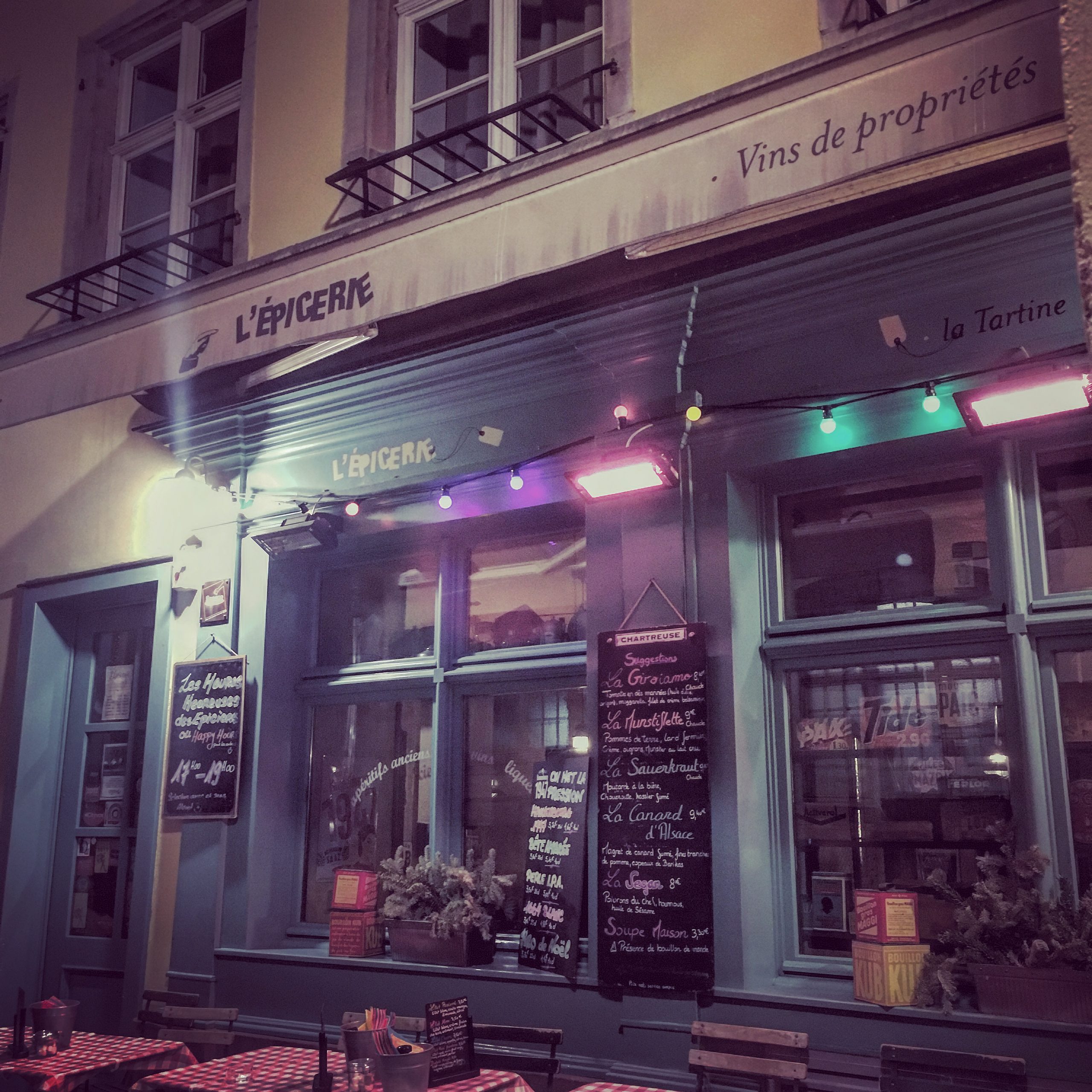
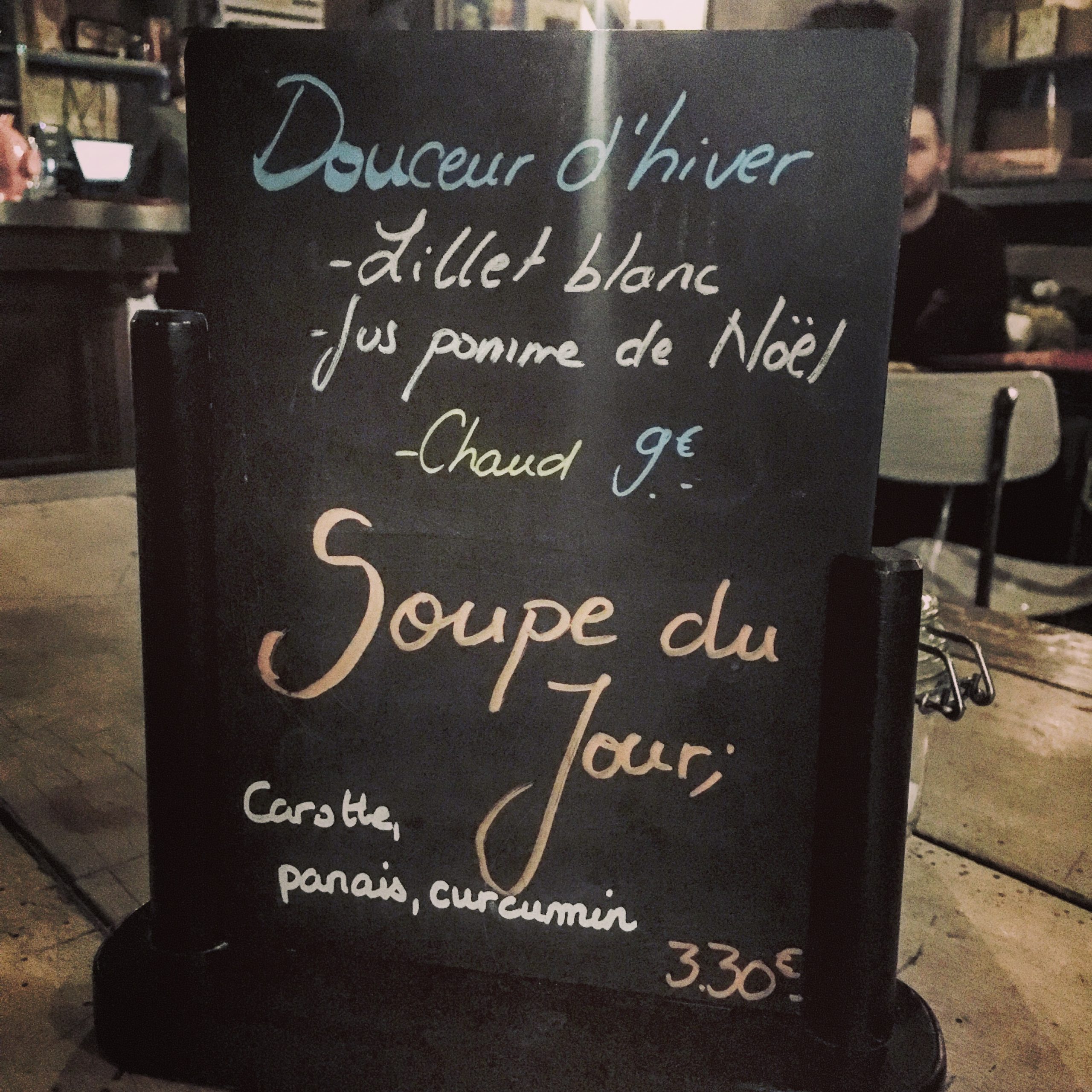
But of course, being in a French bistro, it would have been verging on criminal not to have opted for the thick, rich French Onion Soup. I wouldn’t have forgiven myself if I’d not indulged, on a chilly, January night in Strasbourg…
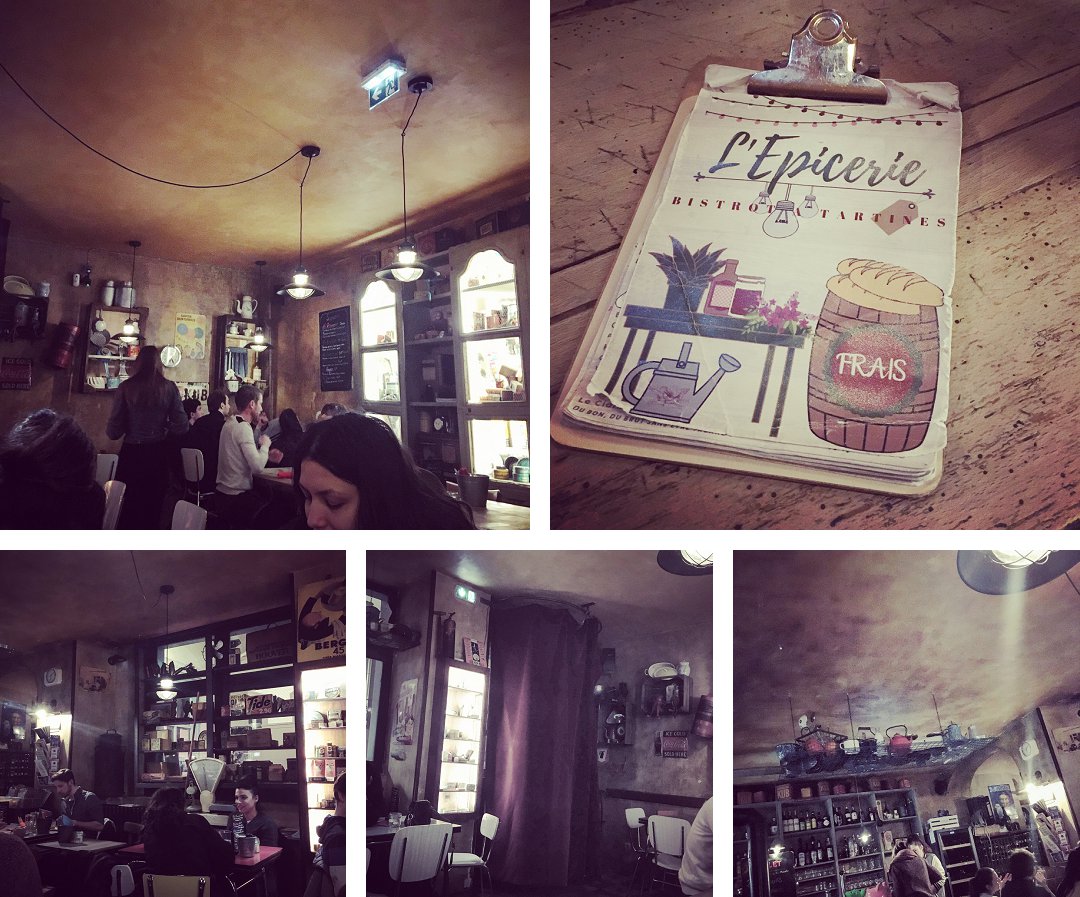
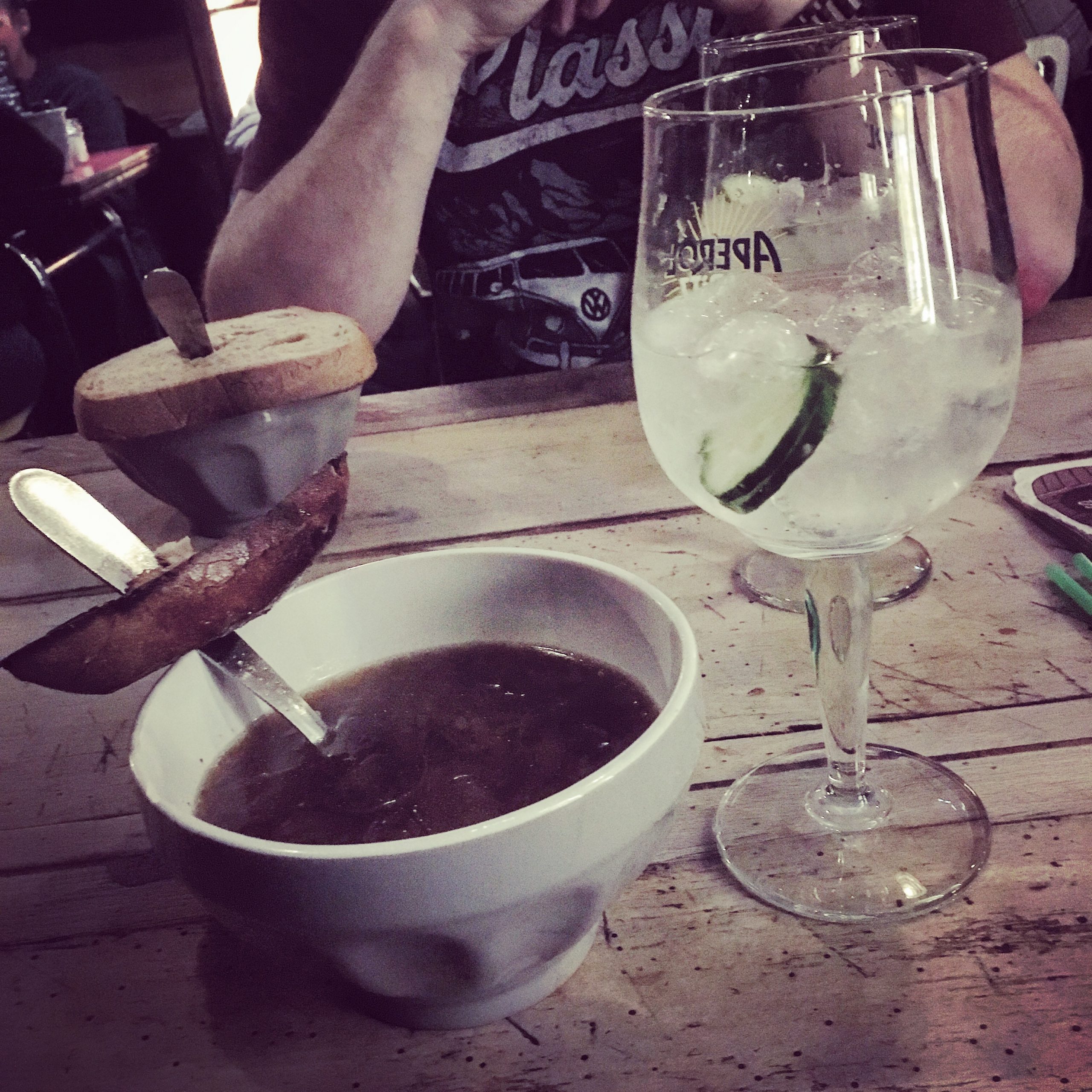
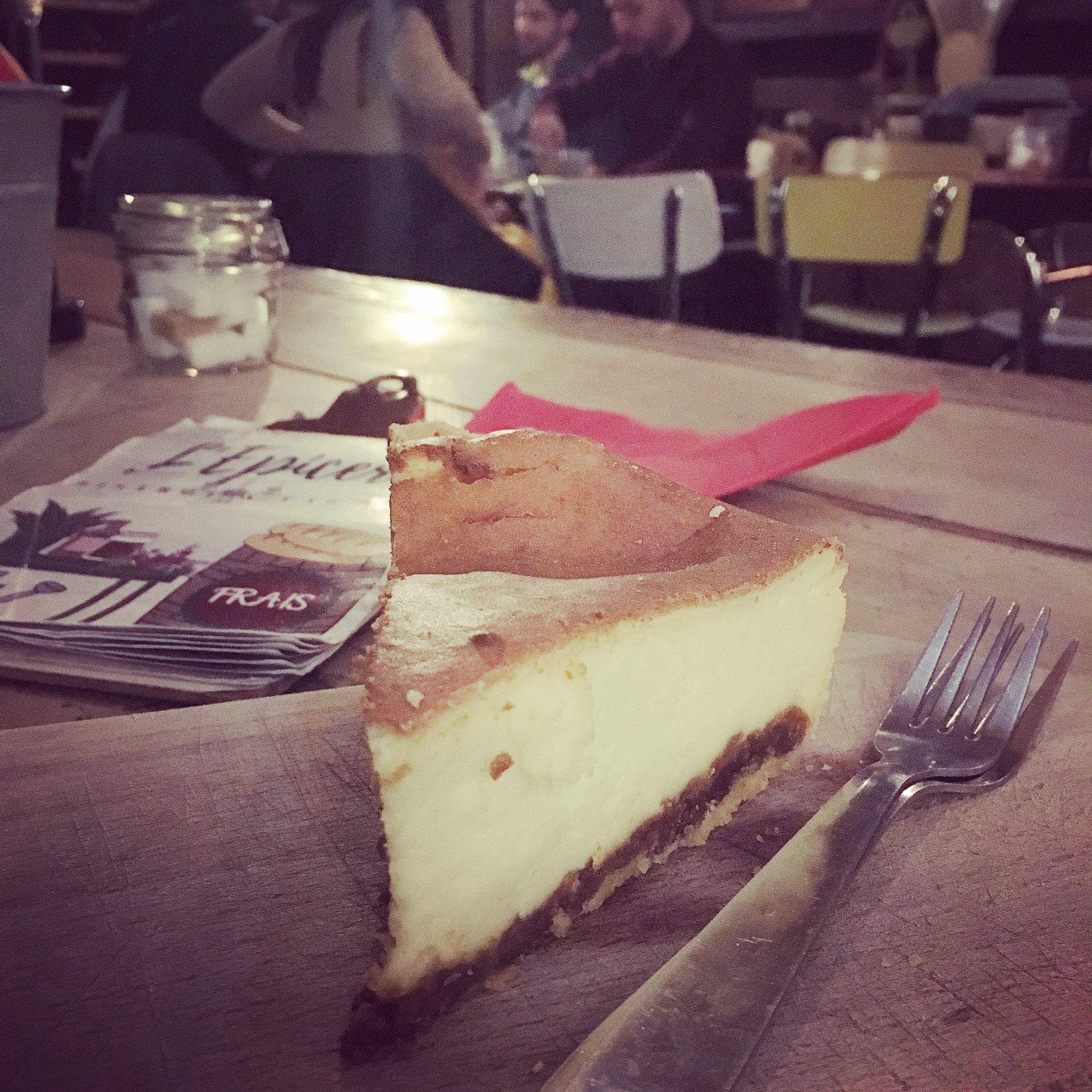
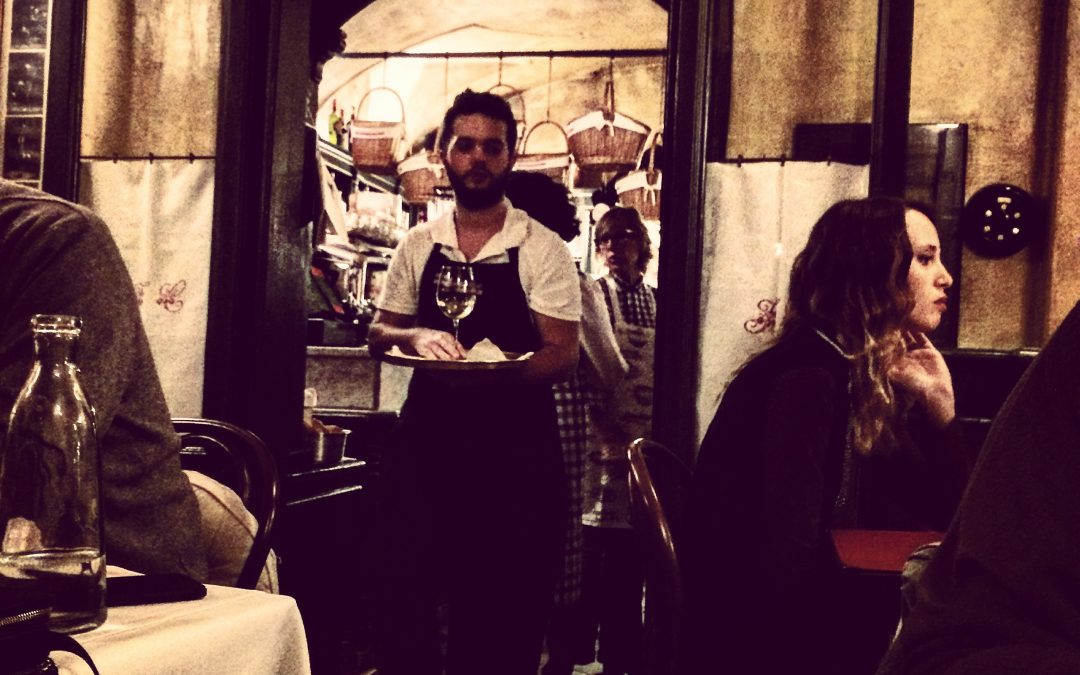
by Helen | Dec 12, 2023 | Lifestyle
Bergamo is a fabulous city in Lombardy, northern Italy, not too far from Milan. It’s often overlooked for Milan, but don’t make that mistake – you’ll only regret it. With a medieval walled upper town, a cosmopolitan lower town and views across to the (often snowy peaked) Orobic Alps, it is a stunner. But, if history and beauty don’t float your boat, maybe eating out will. And, Bergamo does this in the best of style. From takeaway pizza shops to high end restaurants, it does everything. And everything, very, very well.
We spent last weekend in Bergamo with friends who’d flown in from Manchester. It was their first visit and we were keen that they were impressed. It was a short visit so we had to choose places to eat, wisely. One place we knew we had to visit though, was Vineria Cozzi, a quirky, thoroughly original and totally bonkers (decor wise) restaurant in the heart of Citta Alta, where we were staying. This restaurant has been operating since the 1840s and it’s clear to see why it’s still thriving and very popular. As well as the restaurant – lots of little nooks and crannies and rooms, winding their way back from the entrance – the bar is open to non-diners and when I say it is a veritable Gin Palace, I am not exaggerating. Beautiful old walnut mirrored cabinets house hundreds of bottles of gin – and if this is your tipple of choice, you will spend quite a long time placing your order.
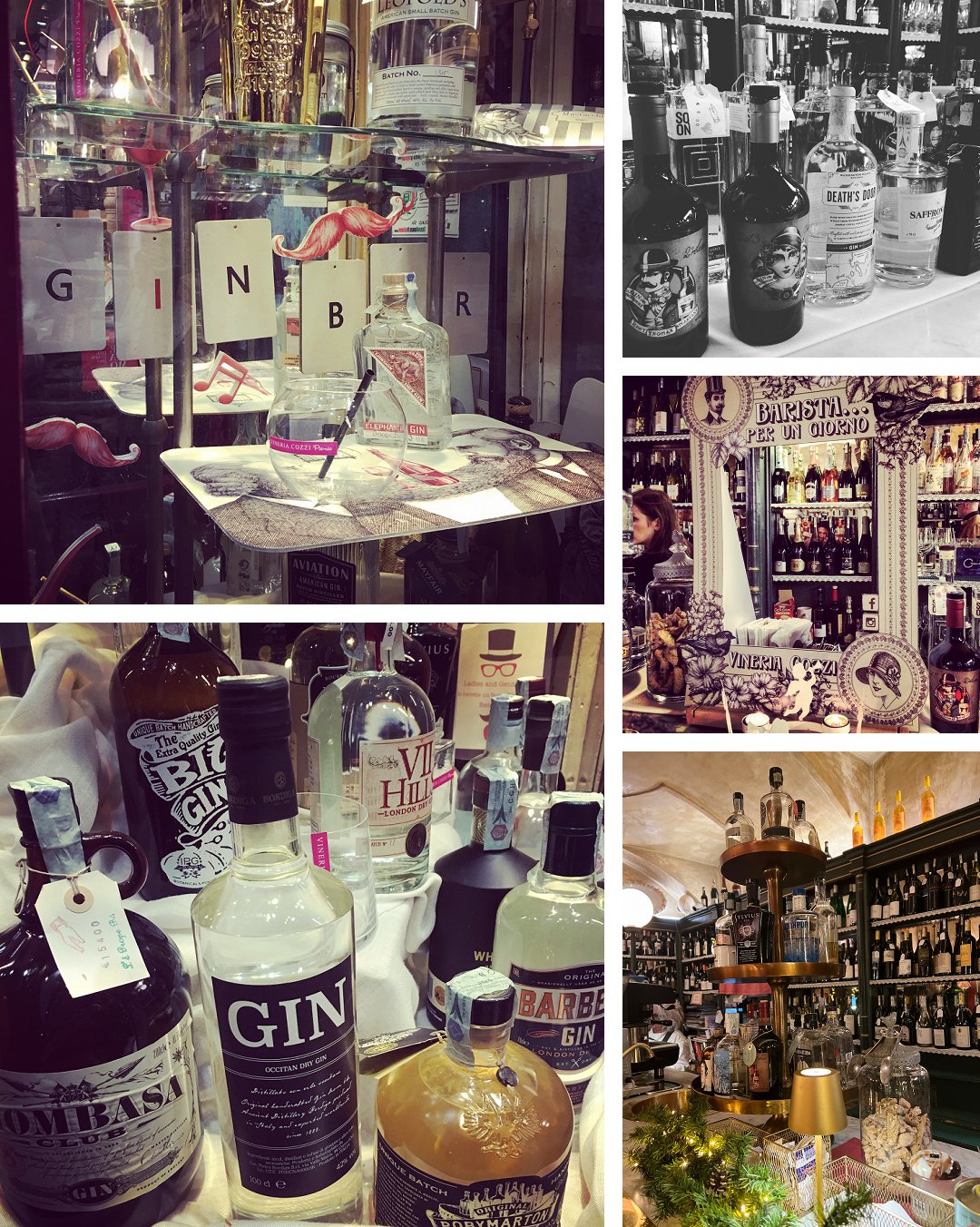
However, it is the food which is the stand out star of the show, at Vineria Cozzi and it’s the food which keeps bringing us back, time and time again. The menu is so inventive, with many nods to local produce and Lombardy inspired dishes. But, all with a twist. This is no ordinary Italian restaurant. Pizza is not available on the menu, and whilst pasta does feature, along with red meat dishes, they are not what you would normally be served. The dishes are quite magical when they arrive – even a “hamburger”, normally to be avoided at all costs, is a sublime work of art. Often with vegetarian options, nowhere near as much attention is paid to them as with their meat counterparts, but not so at Vineria Cozzi. There is a real variety of dishes and all are given as much love as the non-veggie options.
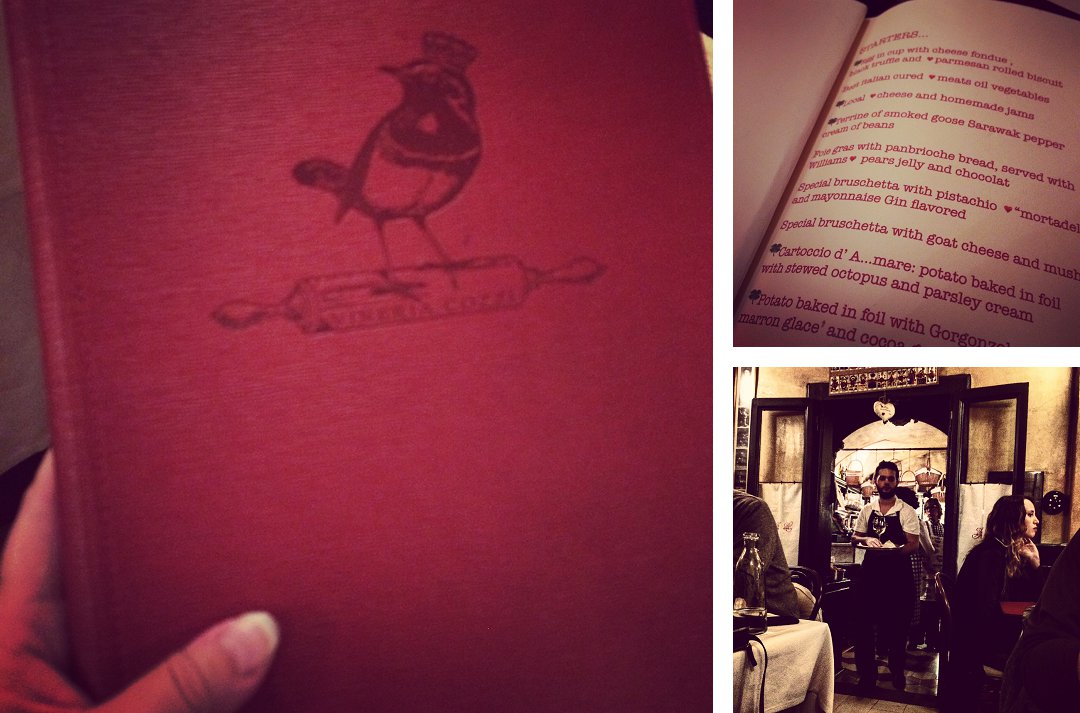
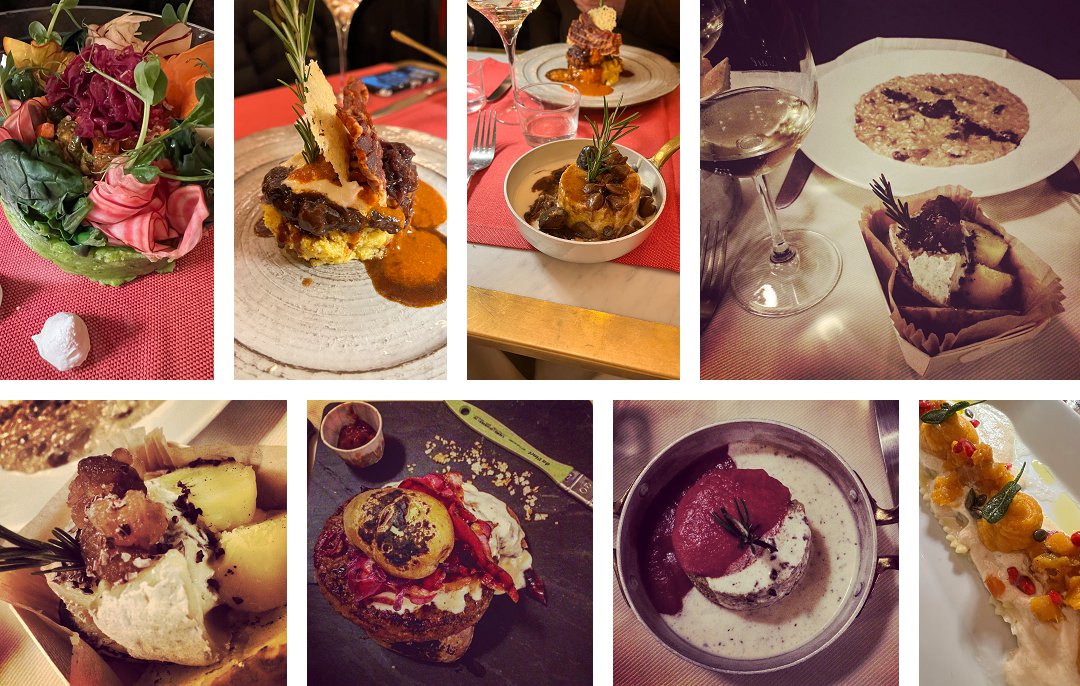
Vineria Cozzi is a real special occasion restaurant – when we last visited it was our friend’s birthday and so we knew that it was the perfect choice – but it is not overly expensive. It’s not the cheapest place to eat in town, but for four people with two bottles of wine, we paid just over €120, which for a birthday meal, was more than reasonable.
We also took the funicular up to the highest point in Bergamo, the stunning San Vigilo, and just outside the small station is Baretto di San Vigilio, described on its website as “the most romantic restaurant in town“. Without doubt, it has the most splendid view of the city of Bergamo, with the Orobie Mountains in the background, and to the front, a large terrace where you can enjoy the shade of the lime trees of the summer or the warmth of blankets and heaters – as we did – in the winter. Housed in an old Bergamasque villa, the restaurant has a feel of English charm, mixed with French bistro, serving generous traditional cuisine reinterpreted with a modern twist. We decided that we’d have a Sunday afternoon bite to eat here, as the winter sunshine still had a little heat in it and we were lucky to get a table right on the edge of the terrace.
The menu is not extensive, but wow – it’s amazing! We were initially slightly concerned that there weren’t any real options for our two veggie friends, but our concerns were soon allayed when we were advised that they could indeed be catered for. So, the decision was made to stay – and how glad are we, that we did. Prior to our food arriving, we were presented with a basket bulging with fresh breads, of various kinds and a big dish of home-made whipped butter. I don’t normally eat butter but this looked just too good to pass on, and it was indeed delicious. We were also each given a small, complimentary dish from the kitchen – tomato paste, topped with whipped ricotta, and sprinkled with pink salt. The tomato paste was utterly delicious – cold, but filled with flavour, and complemented perfectly by the ricotta, especially when swirled into it and mopped up with fresh crusty bread.
The main courses were just beyond our expectations. We’d thought we’d have a little Sunday snack which would satisfy us until we ate out in the evening – but these dishes were really verging on fine dining. Two of us opted for the maccheroncini di pasta fresca alla carbonara di gamberi (fresh macaroni pasta, carbonara style with prawns), whilst our friends opted for mezzi paccheri dei pastai Gragnanesi con carciofi, pasta di salame e formaggio stagionato di Cristian Locatelli (half paccheri of Gragnano pasta with artichokes, sausage and local cheese), without the sausage. All four of us were in agreement that although definitely not cheap – each dish was €21, so a little more than we were expecting to pay on a Sunday afternoon – the food was utterly exquisite. And with the views we had, it was agreed that this was a perfect way to spend a sunny winter afternoon in December…
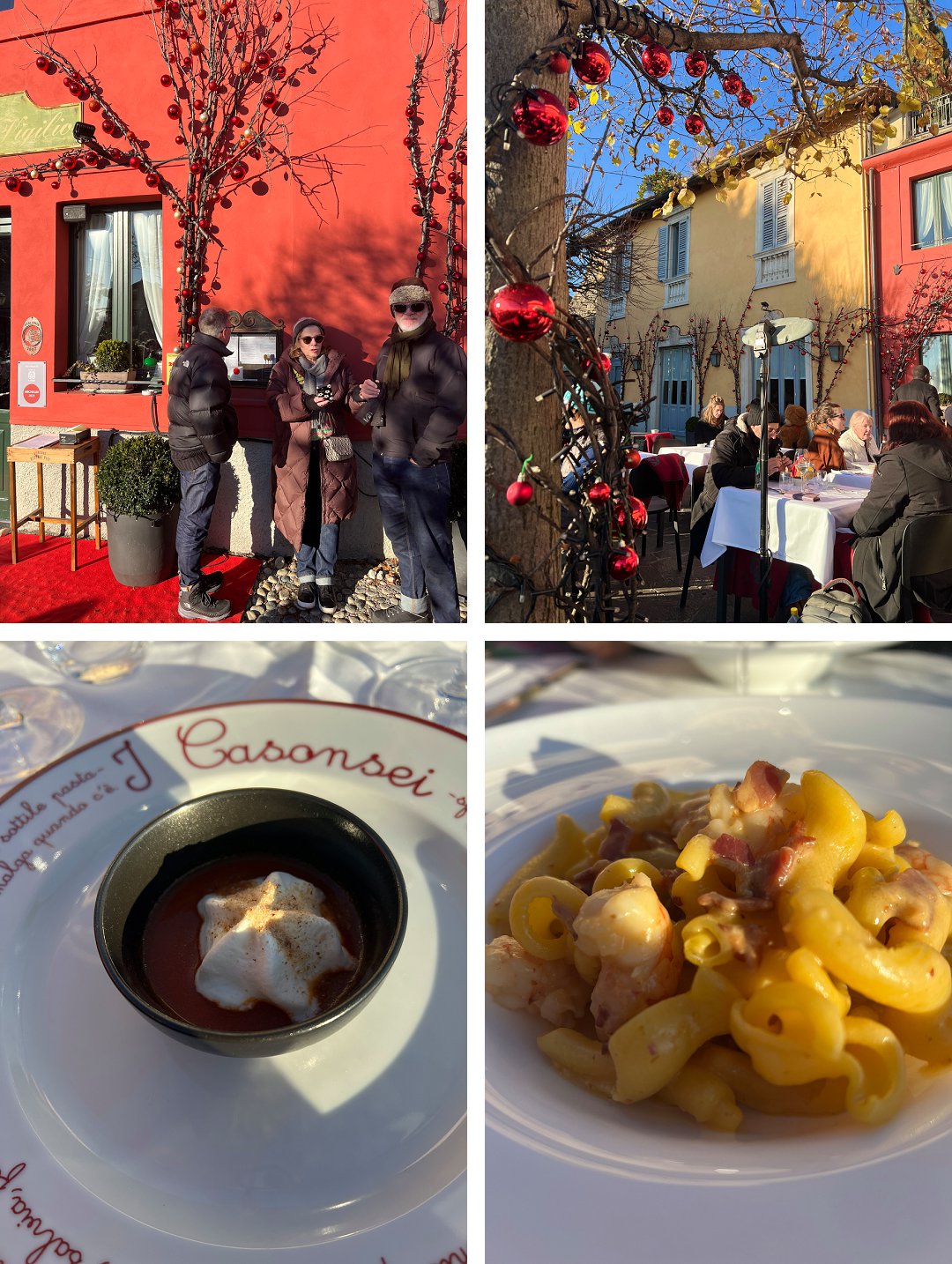
The funicular is the best way to travel between the different levels of Bergamo, and the art deco station in Citta Alta is absolutely beautiful. As well as being able to hop on and off the cable car, the front of the station, which is another vantage point with spectacular views of the lower city and mountains beyond – and the airport, for plane spotters – is now a bar and restaurant, with a glass fronted terrace if you want to get even more of a view. Previously, this restaurant was a part of the Lombardy Slow Food Movement and the food was inspirational – and we were really sad on our last visit, when we found it to be all closed up. However, it’s now open again, but with a different identity. We were just glad it had re-opened, and we’d settled ourselves in, on the terrace, before realising it was now part of a chain called The California Bakery. Not having heard of this before, we were a bit disappointed that it was now part of a chain – but then we remembered we were in Bergamo and Bergamo does food brilliantly, so we needn’t have worried. Two Salty Omelettes were ordered, with sides of French Fries and Rosti – and once again, we were pretty much blown away by the quality and attention to detail.
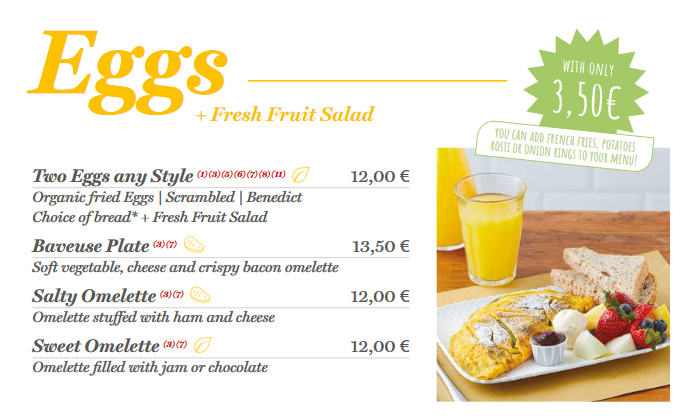
The portions were very generous, and with the additional sides – plus a side salad of fresh fruit, which complemented to omelette beautifully – we were a bit overwhelmed initially. However, when food is this good, you try your best and suffice to say, clean plates were collected away.
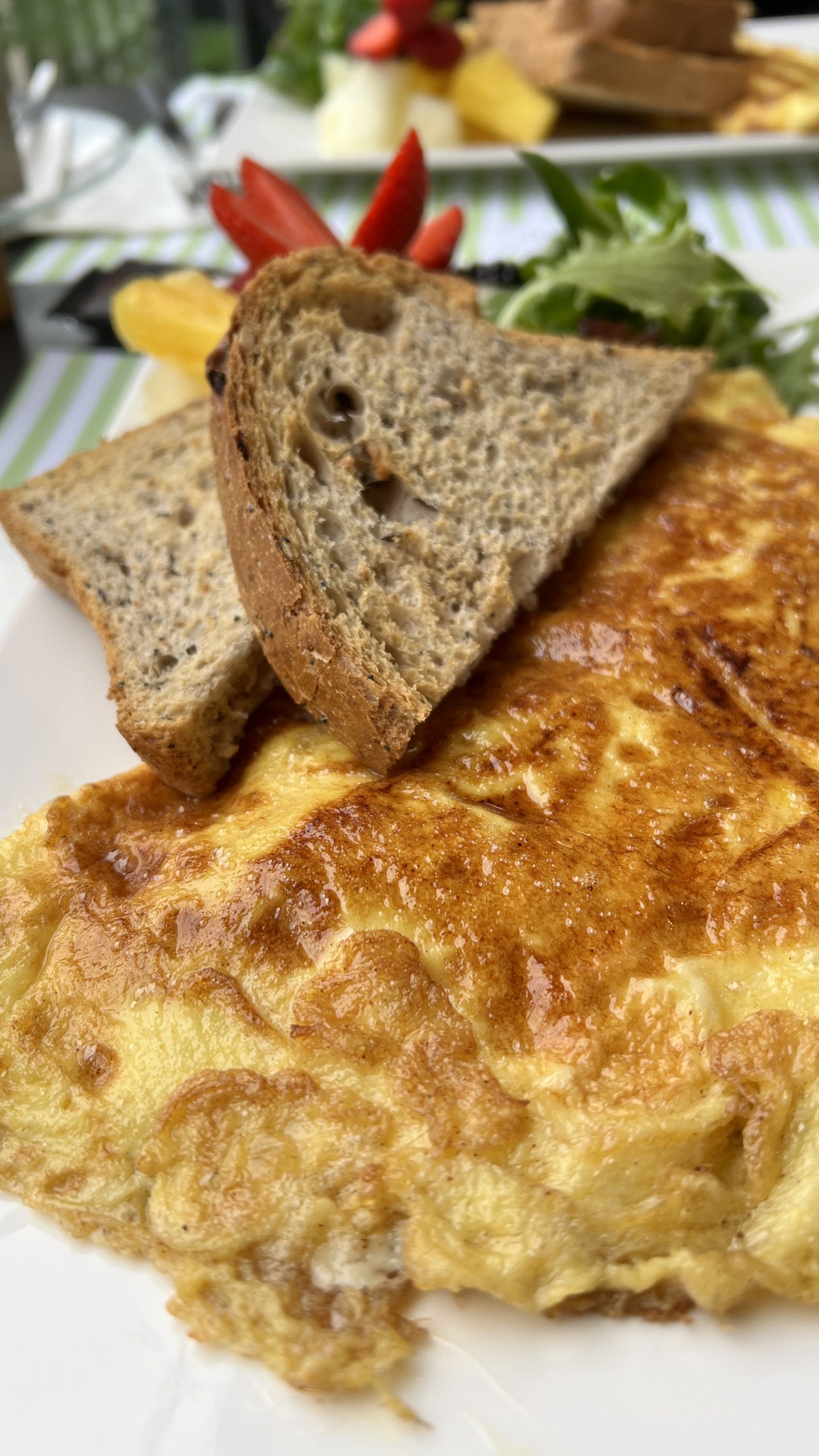
But Bergamo isn’t just fabulous for sit-down eateries. If you fancy a quick slice of pizza, on the go, you couldn’t find a better place than the famous Il Fornaoi, located in the heart of the action, Via Bartolomeo Colleoni. Open from 7am – 8pm every day, you won’t miss this place. Just look for the crowd of people, drooling outside – either queuing to be served or taking photos of the most incredible array of pizzas (and pastries and cakes) on display. These aren’t your average round pizzas – these are huge pizza slabs, cut with scissors and wrapped in paper for you to take-away. And, with so many varieties on offer, you can be sure there will be at least one to get your taste buds tingling…
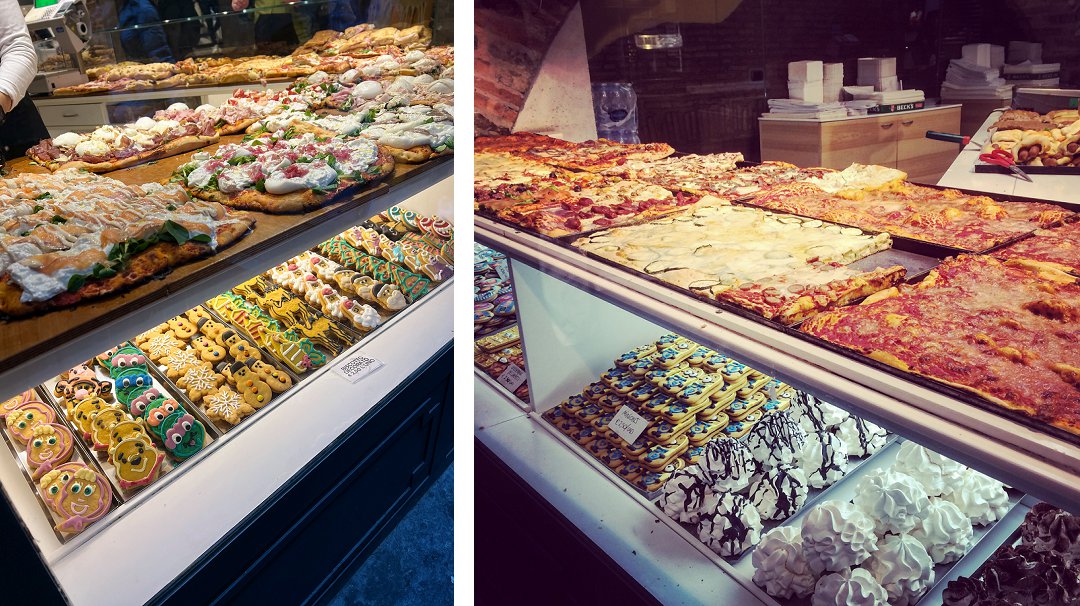
If you have a sweet tooth, Bergamo will definitely satisfy your sugary cravings, as you will never be too far away from an exquisite chocolatier or patissierie.
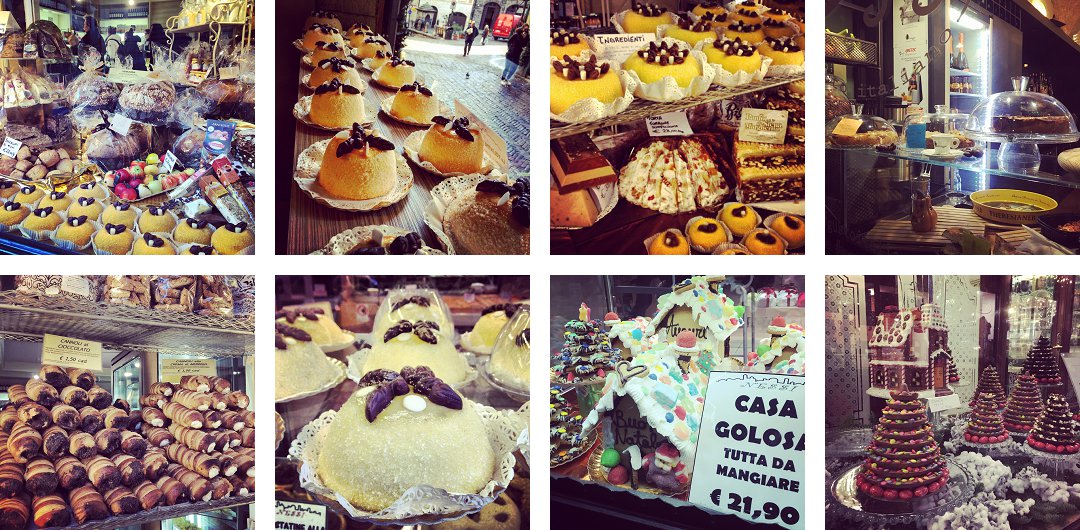
It’s safe to say that our latest weekend in Bergamo didn’t even scratch the surface of culinary delights. It was great to see old favourites still thriving, as well as some new additions which we just didn’t have time to try. And the whole of Bassa, as equally full of wonderful restaurants, is still to be revisited. Luckily we are back in this amazing city twice around Christmas time, so I’m sure we’ll have more to report on. Oh, and just a little snack to accompany our Prosecco at Bar Flora, on Piazza Vecchia…
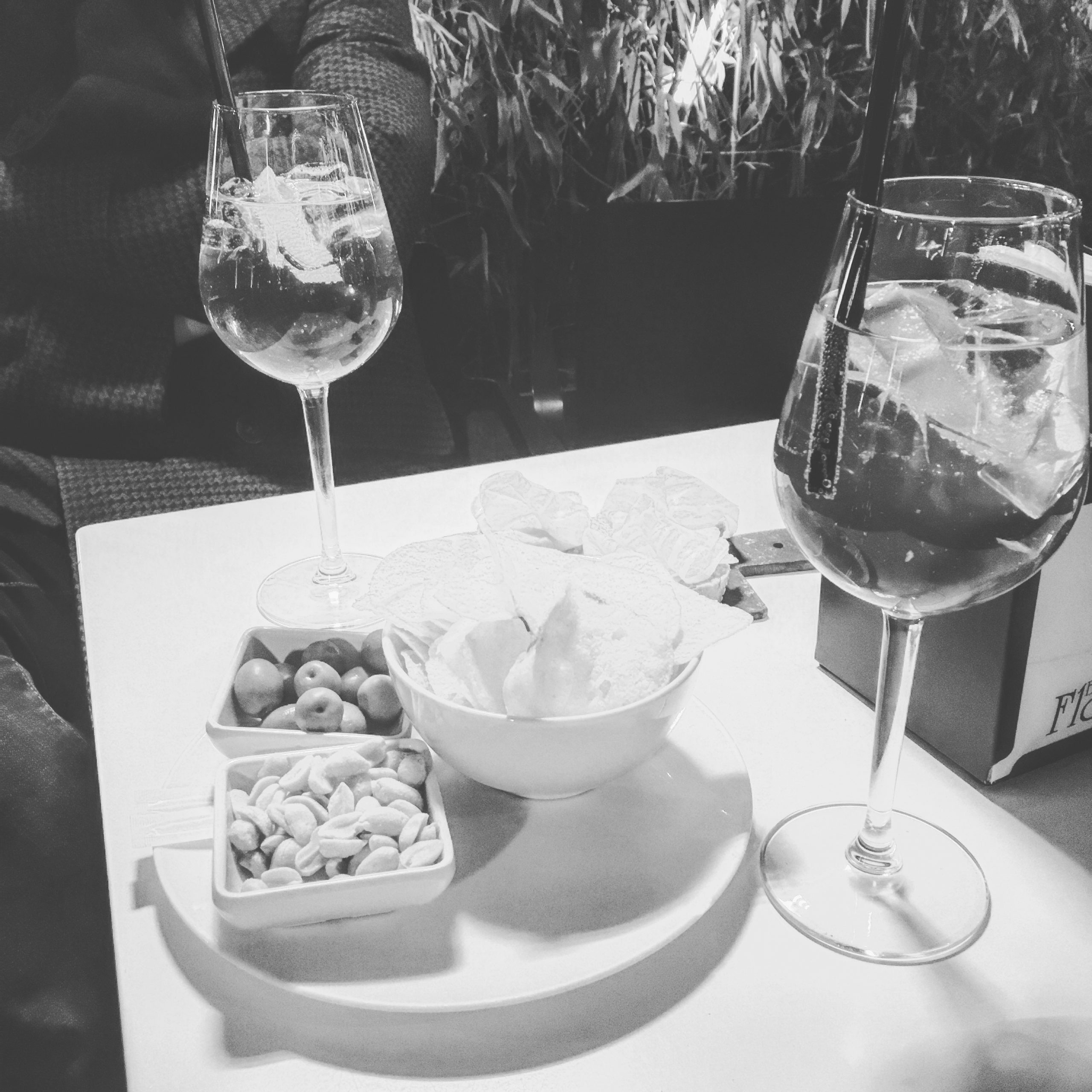
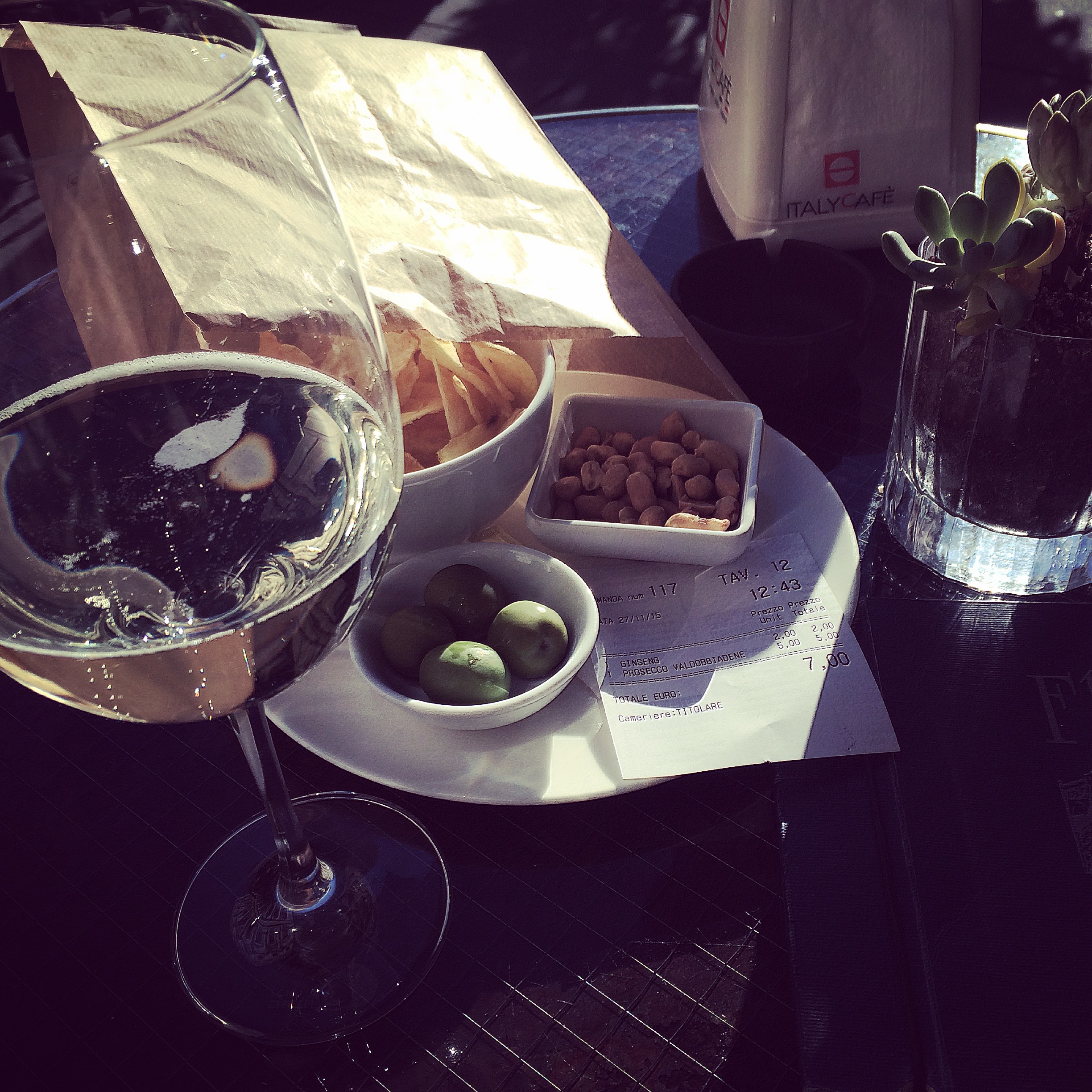
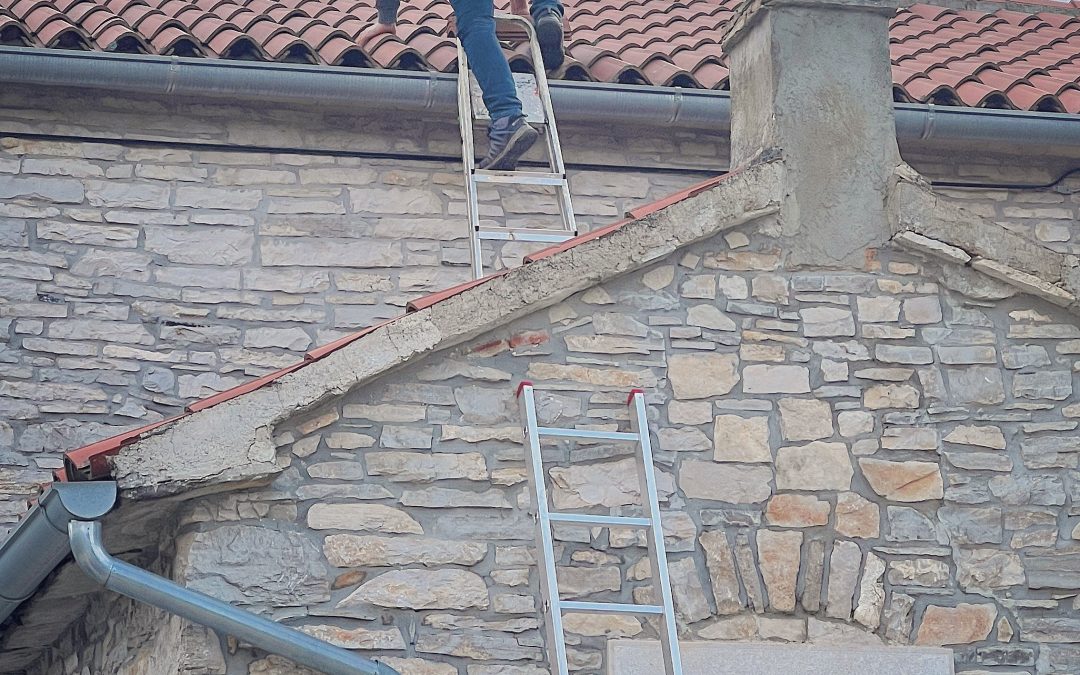
by Helen | Dec 11, 2023 | Renovation
Our stone house in Istria isn’t currently a holiday home. Having relocated from Manchester nearly seven years ago, we have lived here full time, renovating the house from top to bottom. We’ve lived through walls being knocked down and out, kitchens and bathrooms being ripped out and started again, the draining of a 10 metre internal well chamber. Every room painted to within an inch of its life. Some, more times than once. Or twice. Demolition work. Excavation work in the garden. Diggers and dumper trucks and the multiple deliveries of many cubic metres of white pea gravel. Chopping down of trees and planting up of trees. Electrical work. You name it, we’ve probably lived through it.
So, the major renovation work is finally, we think, finished. Although we still have lots of ideas for how we can improve the house further, we think we’ve done what we want to do, to give us a very comfortable life, and to not see renovation chaos again, for quite some time. But, that doesn’t mean we’ve downed tools. Our stone house is very unlike any other house/property we’ve lived in before. This one needs to be looked after and cared for. For most of the year, she’s fine and ticks along very nicely, not giving us any trouble. But come winter, we do need to make sure we are on top of her, because like all stone houses, if left, problems and issues can emerge. The rear walls of the house and the side elevation walls are the most exposed to the weather and so these are treated with an impregnation to keep the house as watertight as possible. We don’t have water ingress, and this is due to the maintenance – however, ingress can be seen on many properties in the area, which are left either locked up for most of the year or empty. Our house is also heated – woodburners and heaters ensure even distribution of warmth and so unless we close up a room, over the winter, without heat, there are no cold-spots, as we use the whole of the property.
Neither of us has a head for heights, but luckily our builder is undaunted by our tall house and so this week, he got out the ladders and sprayed the exterior walls with the impregnation solution. The Istrian stone is usually milky white, but when treated, it became much darker – exactly what it would look like if we left it to the elements and did nothing with it. Thankfully, once the solution had dried, the appearance returned to normal.
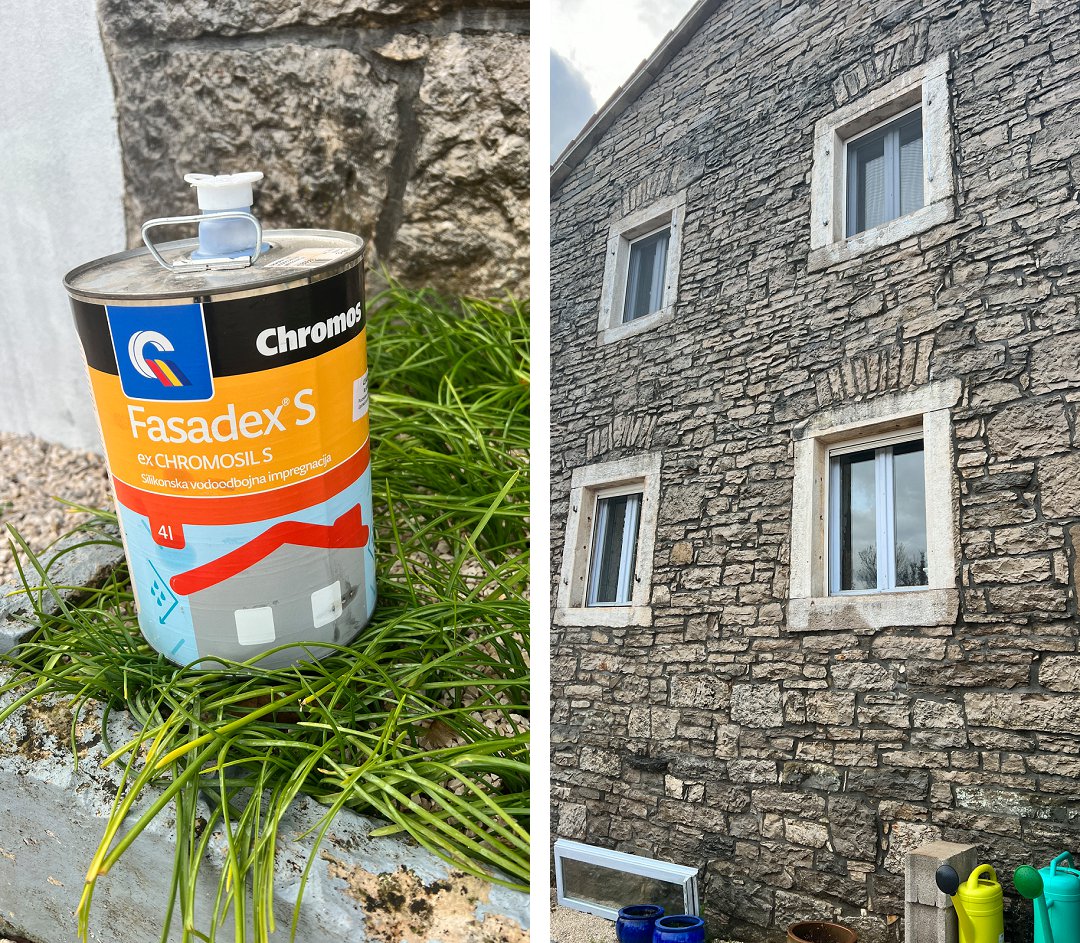
As he had the ladders out, our builder also cleared all of the guttering – those unseen jobs, which if not tackled, will lead to problems. He also checked all of the terracotta roof tiles and replaced a small number which were cracked – again, not something we would necessarily have noticed until a problem emerged. The join between our house and our neighbour’s property (currently un-lived in and un-renovated) was also checked and we’re pleased to report that he assessed all was OK.
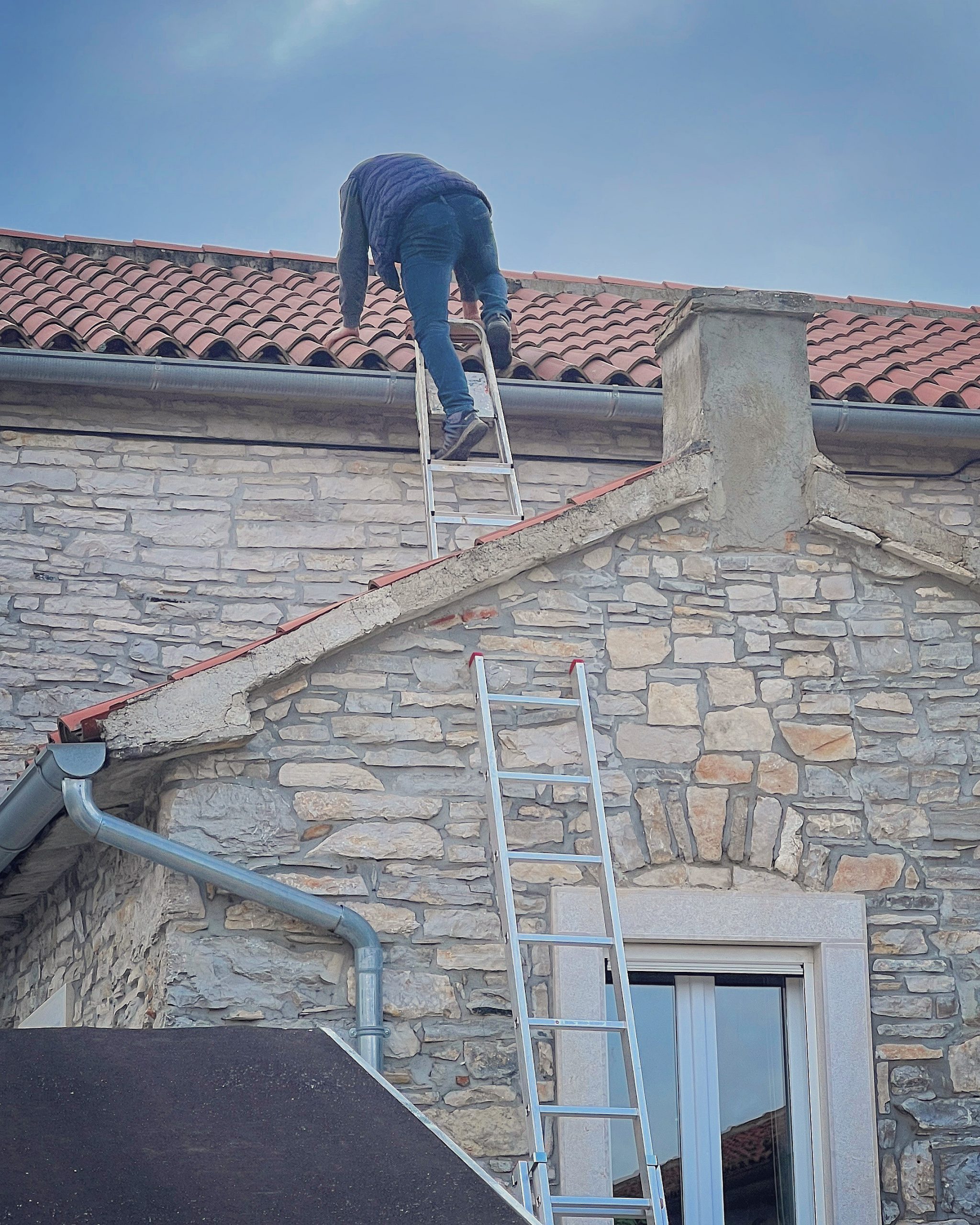
This is a big job, but one that can be easily overlooked – if there are no signs of water ingress or damage, it’d be easy to not have this important work done. But, we love our home & feel a real duty to keep her in the best condition possible, so we do the work necessary on a regular basis. Meaning that whoever purchases our home, will be safe in the knowledge that she may be old (we think in places over 200 years old), but she’s in the best condition possible.
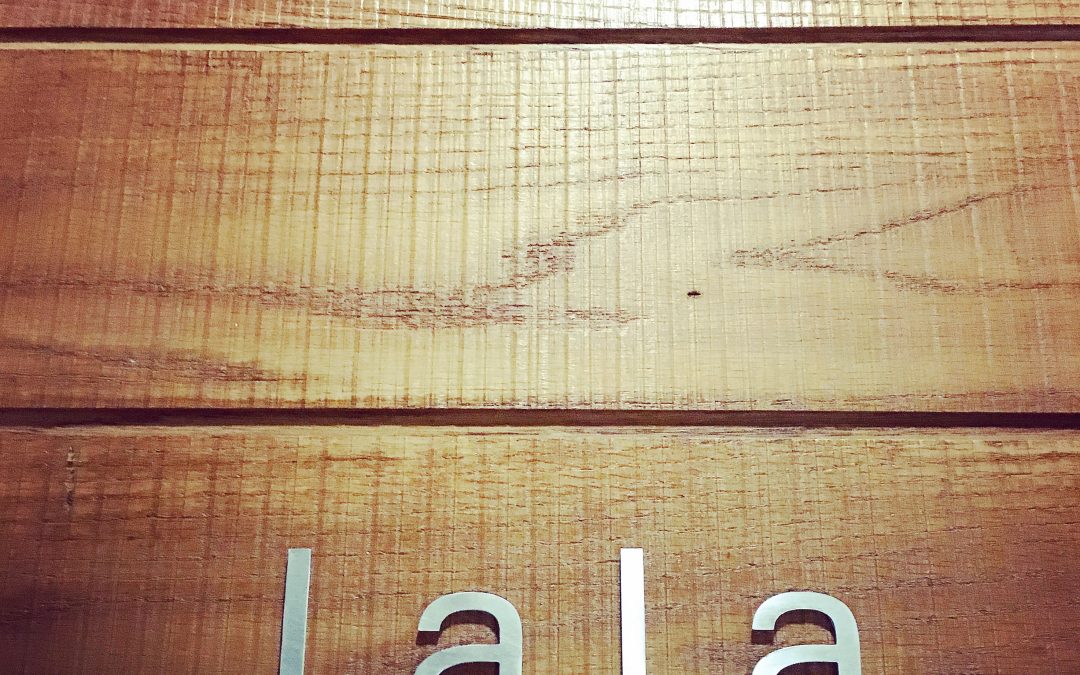
by Helen | Dec 8, 2023 | Travel, UK
Rocksalt Restaurant and Rooms – with four boutique en-suite bedrooms – have a very enviable location on the South Kent coast. The glass fronted restaurant sits right on the harbour, overlooking the English Channel, whilst the rooms are just behind, on a cobbled street, above a restored and renovated fish market building, now a very funky and cool restaurant. (Although its website does state it is currently closed, at the time of writing). When we stayed, it was in December, and we arrived on a cold, dark early evening – check in was done in the hotel, which did look rather lovely, but as our time was limited, we just wanted to get into our room and relax, after a long drive up from south east France and a ferry crossing.
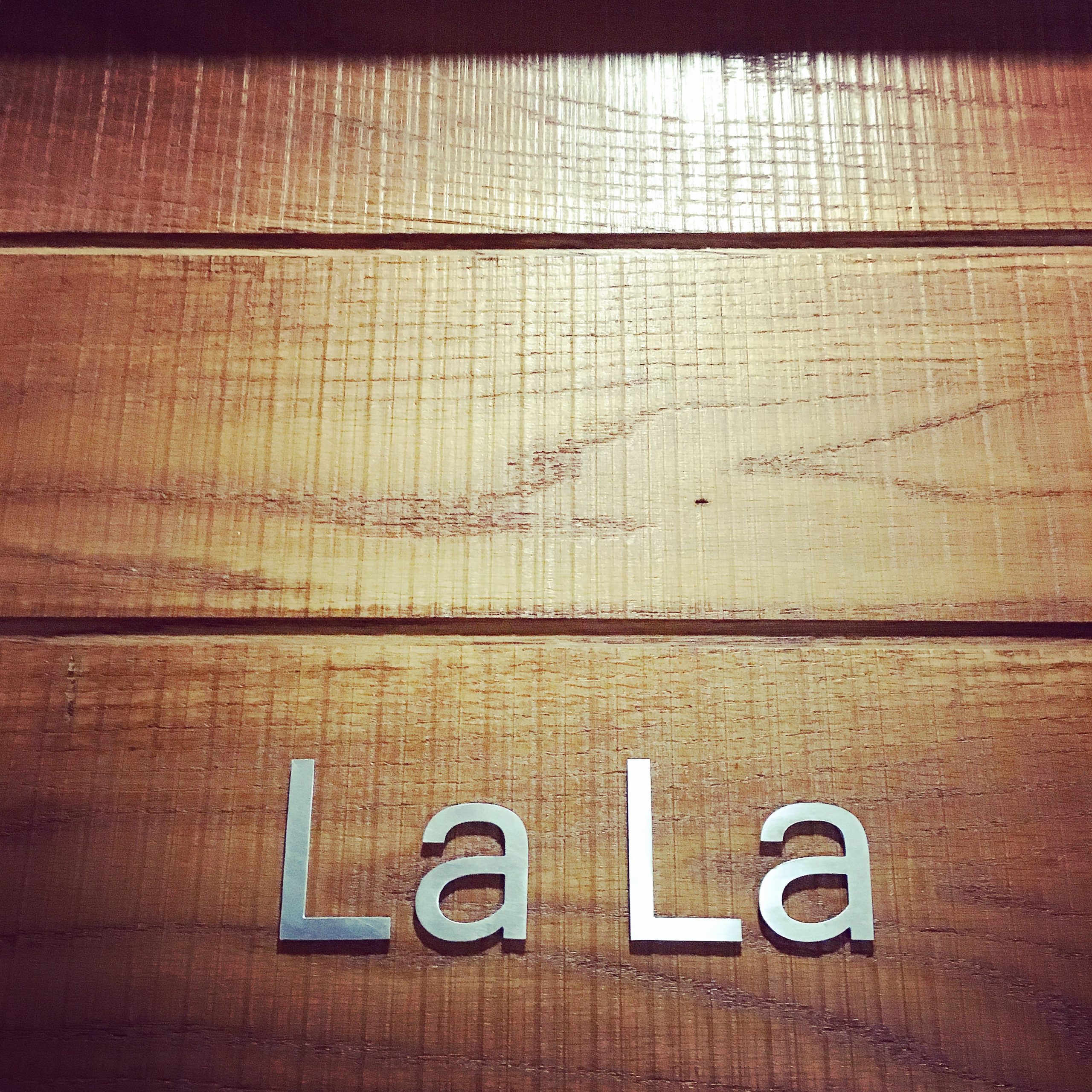
Our room was called “La La” and is classed as a standard king room, but I think it offers a little more than “standard” fare. With just four rooms, the B&B feels very cosy and intimate and has been styled exquisitely. Stripped back brick walls, and an industrial chic look – certainly in our room and en-suite – made the place feel very contemporary, but still retaining a nod to its past. We believe that each of the four rooms is individually decorated and each has its own style, but they all share certain features as standard – Egyptian cotton linen, antique wrought iron beds, Nespresso coffee machines, industrial wall lights, modern wet rooms and metro tiling.
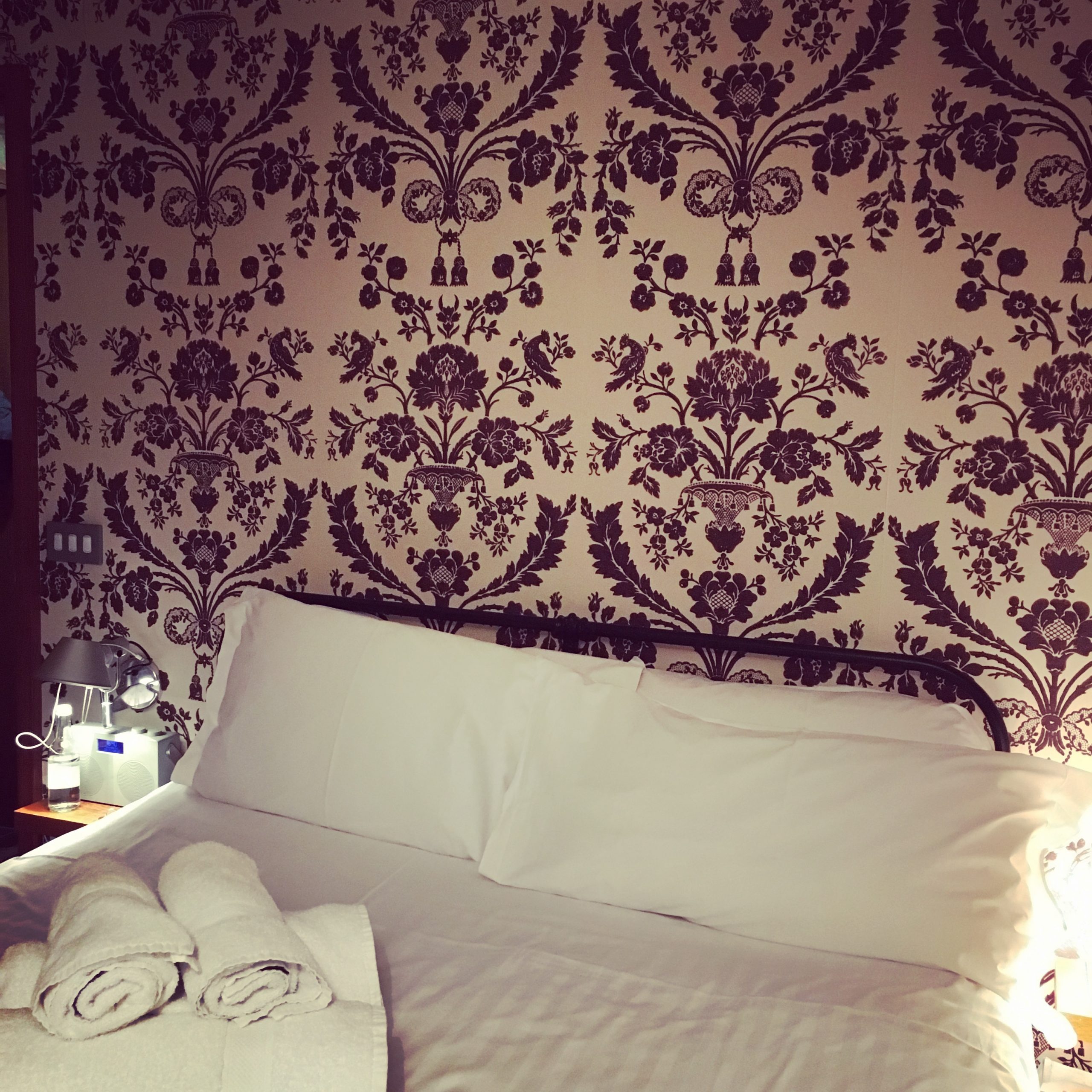
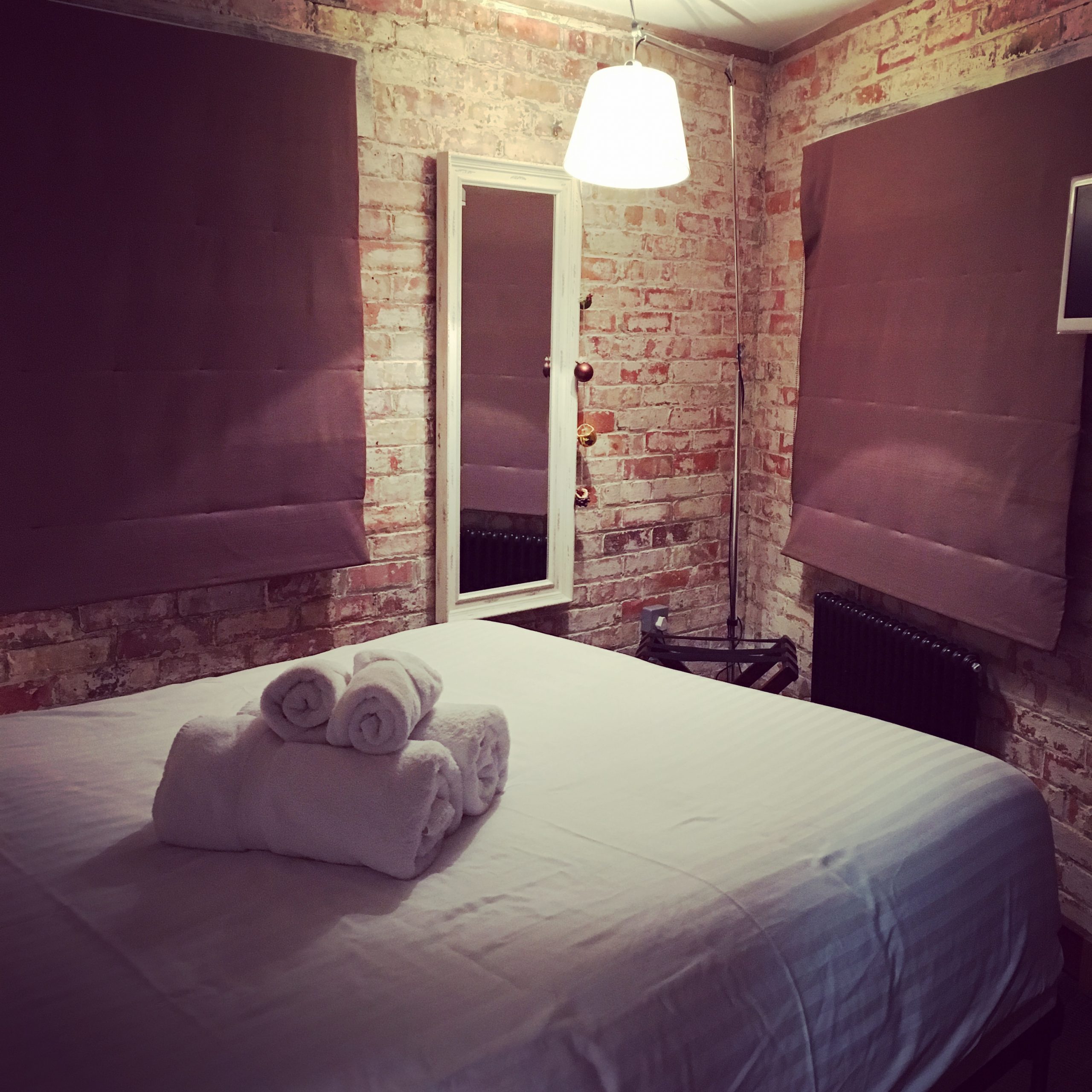
The bare brick walls and industrial piping, to hide cables – hurrah, as exposed cables are the bane of my life and there is NO need for them! – were complemented with soft Victoriana wallpaper and chocolate brown fabric blinds.
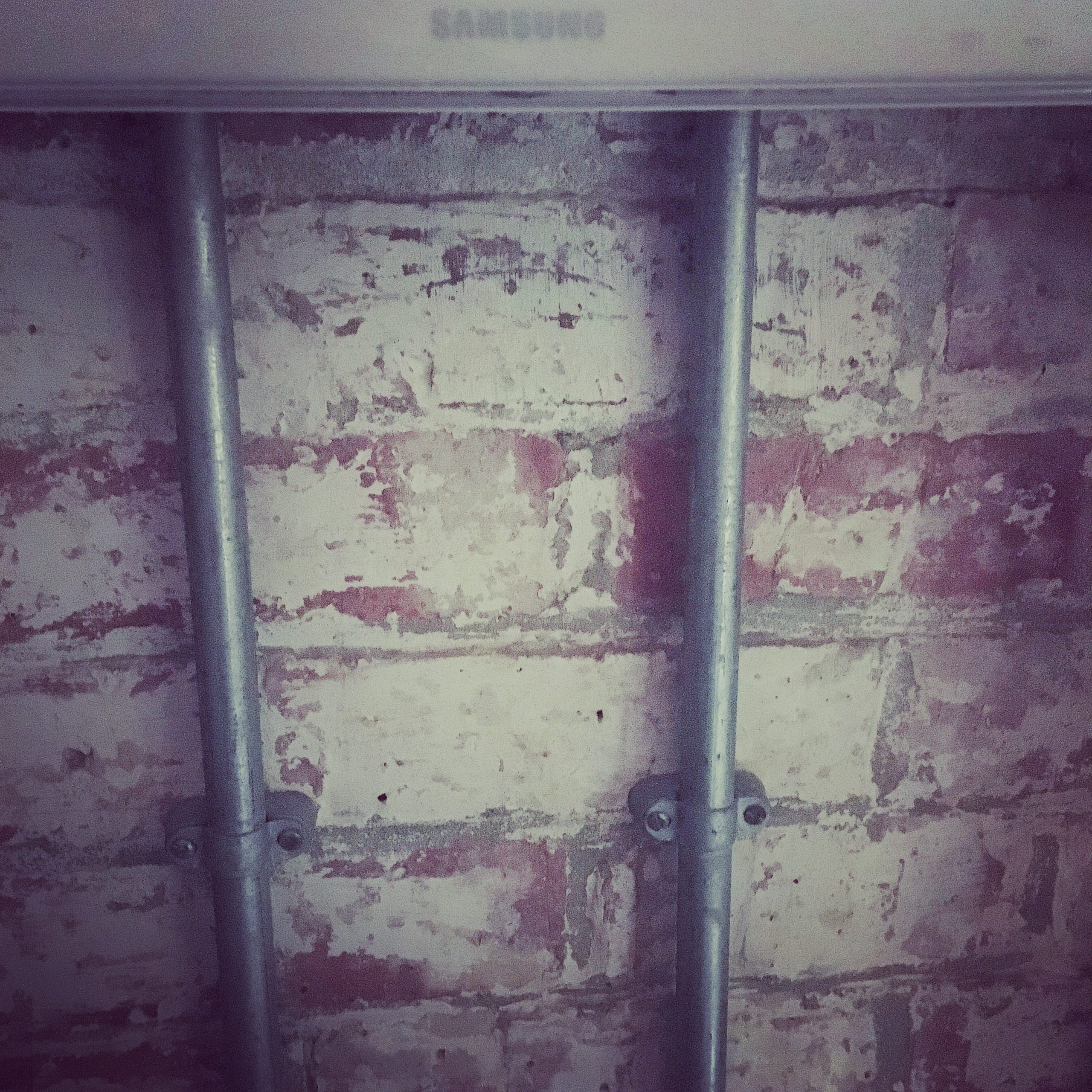
The ensuite was small, but perfectly formed. White metro tiles ensured that the wet room was pristine – you can’t hide much when your room is white tiled – and much attention to detail was paid to the sanitary ware, including a Victorian cistern and a wall of bare bricks. The shower was modern and super effective – with a big rainhead and a hand held attachment, it was a pleasure showering in this room.

We’re not sure if they still do breakfasts in the way we received ours, as it was a few years ago that we stayed (Dec 2017), and it may now be served in the restaurant. But our picnic basket, delivered to the door at the time we requested, was perfect for us – croissants, pastries, French stick, museli. juice and fruit.
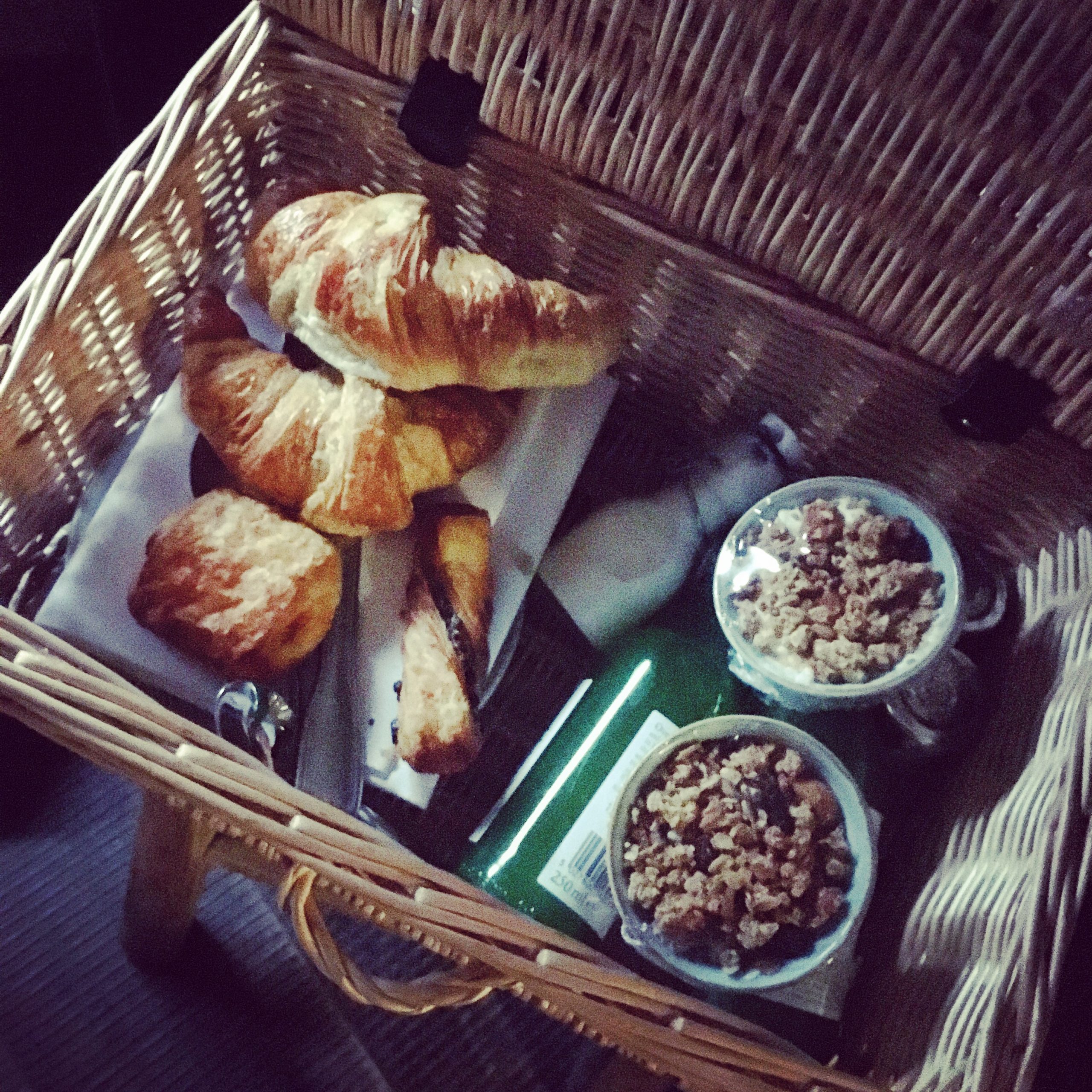
Next time we do a ferry crossing, we’ll definitely be doing a return visit to Folkestone and Rocksalt. And, hopefully, this time, we’ll take in the restaurant, too.
additional info:
- parking is available, in a nearby car park, at a daily fee
- the Port of Dover is approximately 14 minutes away (7.3 miles) via A20 and B2011
- rocksalt restaurant information here
We were not sponsored to write this post and we received no kick-backs. Full price was paid for our accommodation. We recommend it simply because we really liked it, and thought it was definitely worth what we paid.


















































































